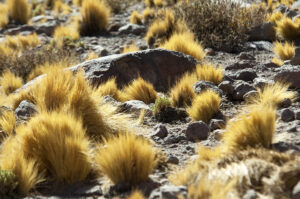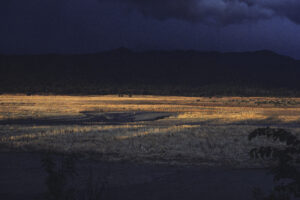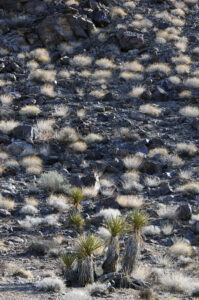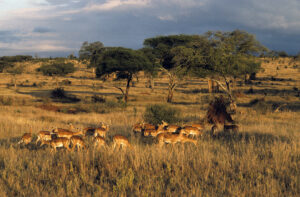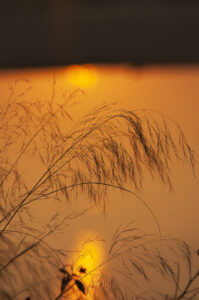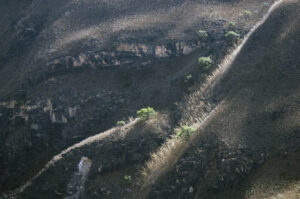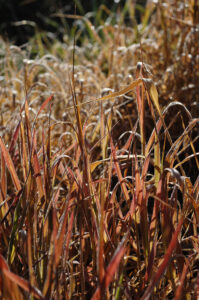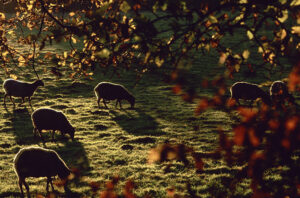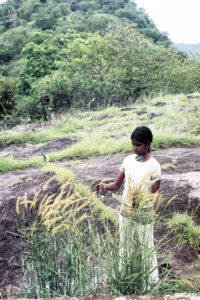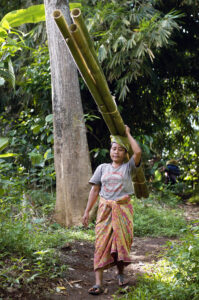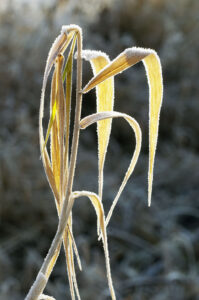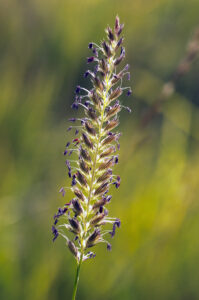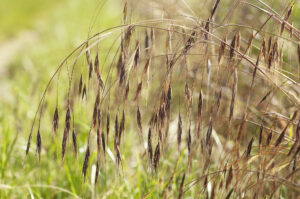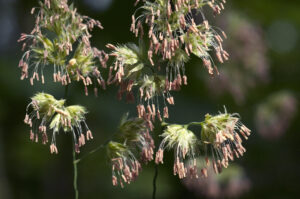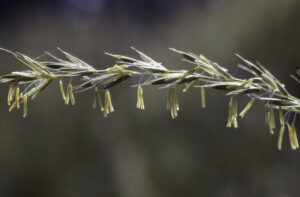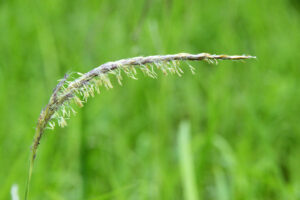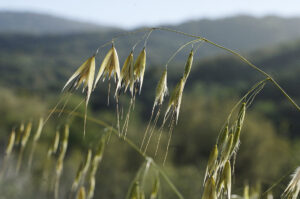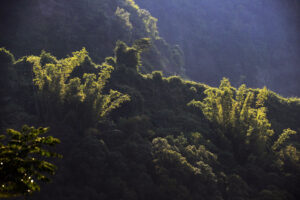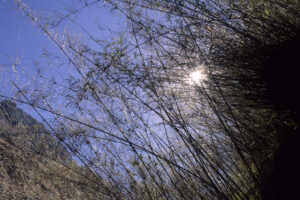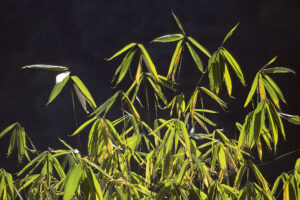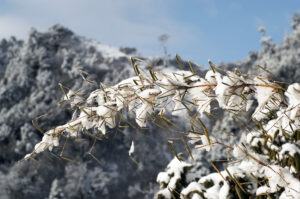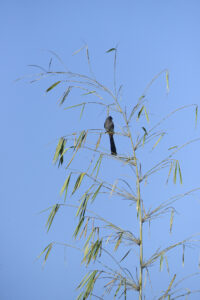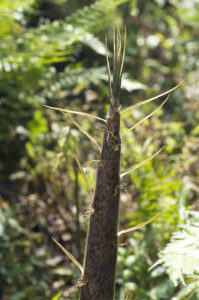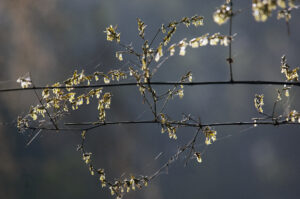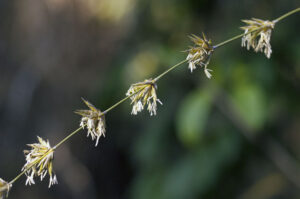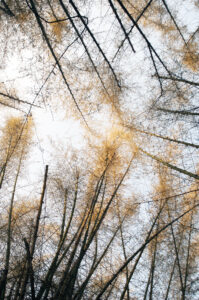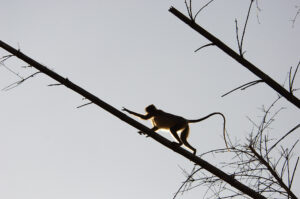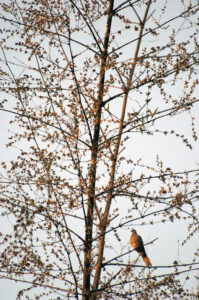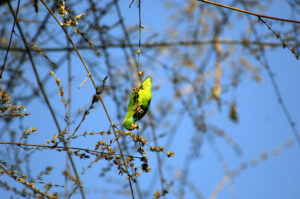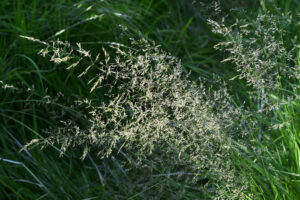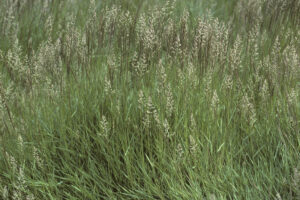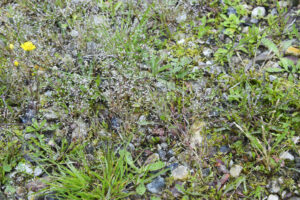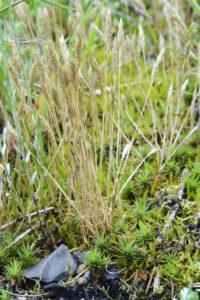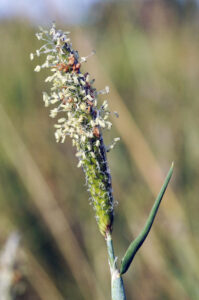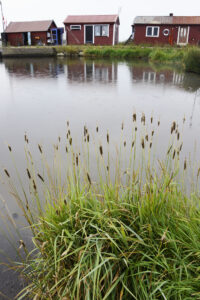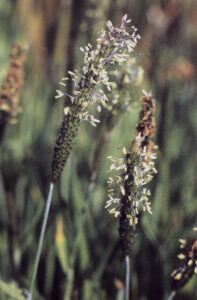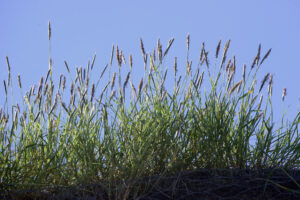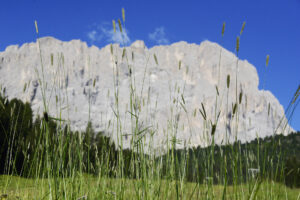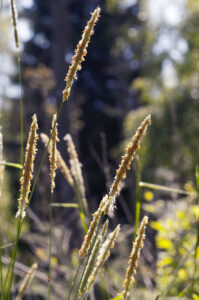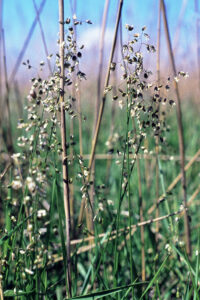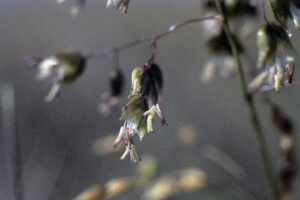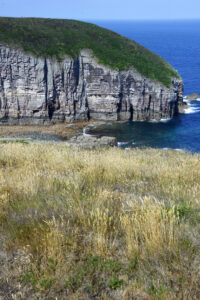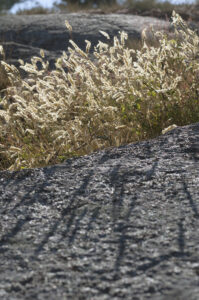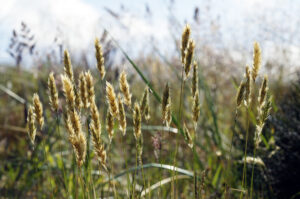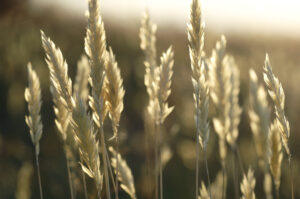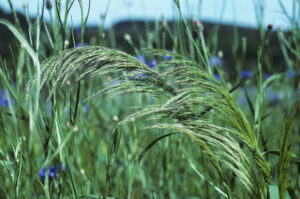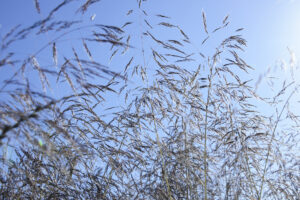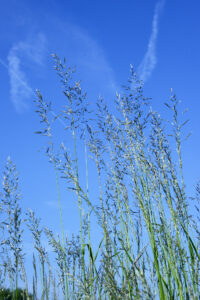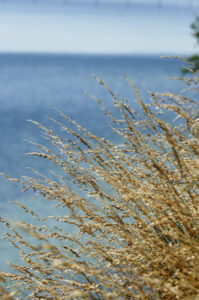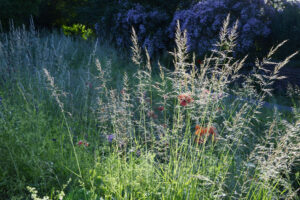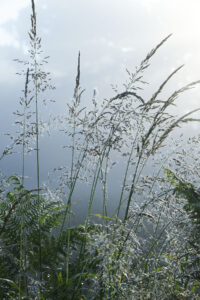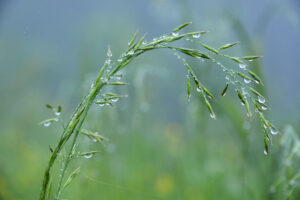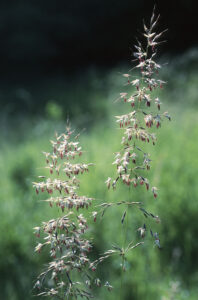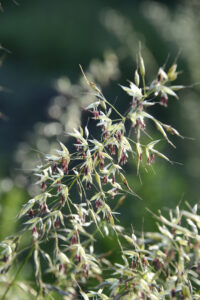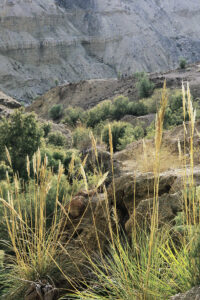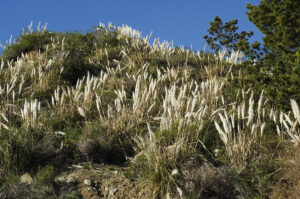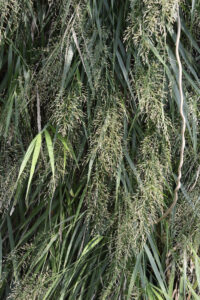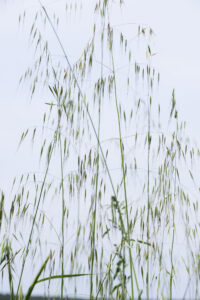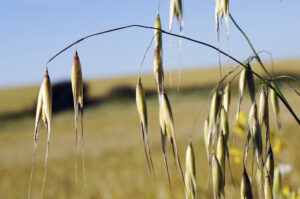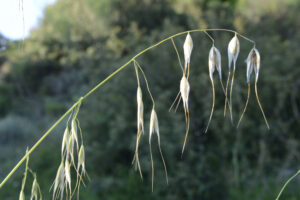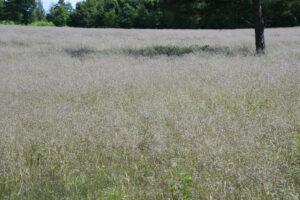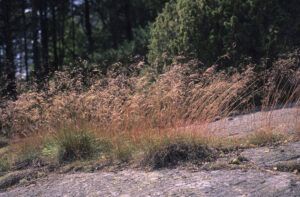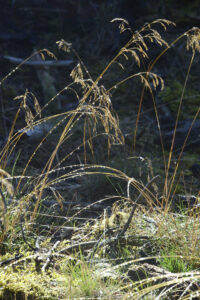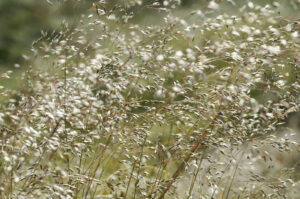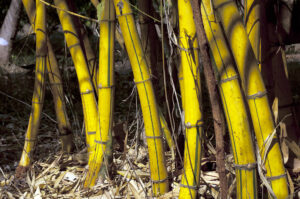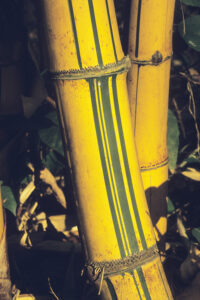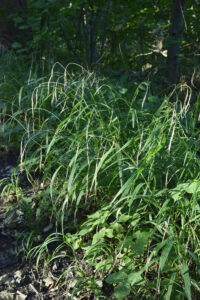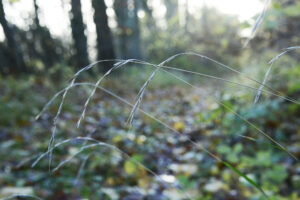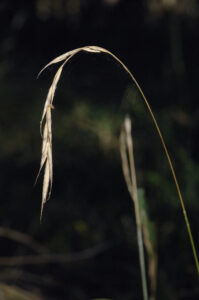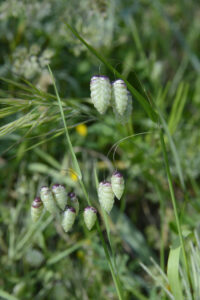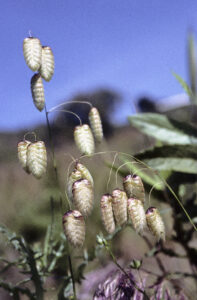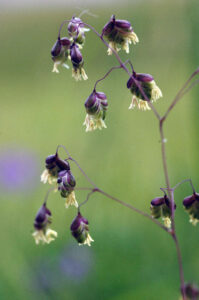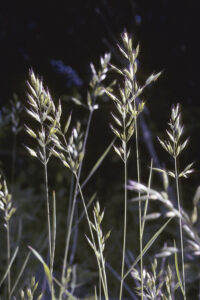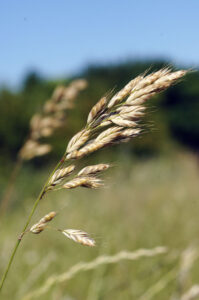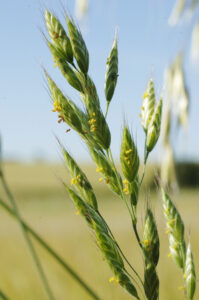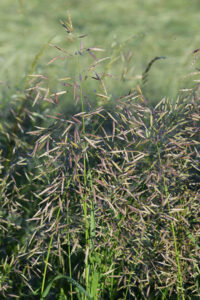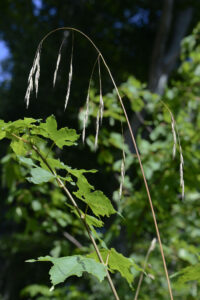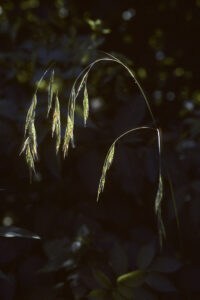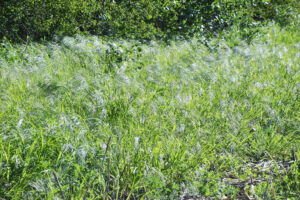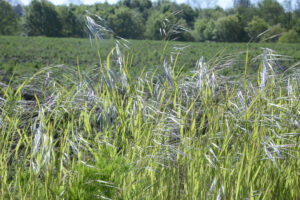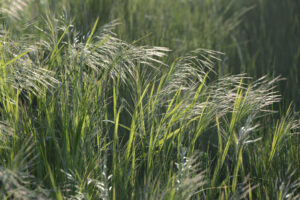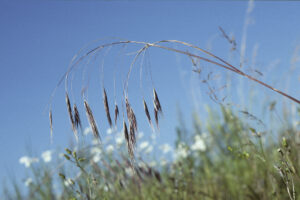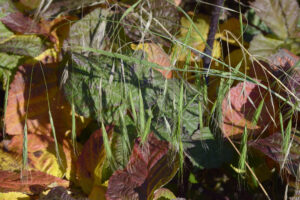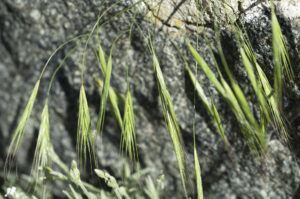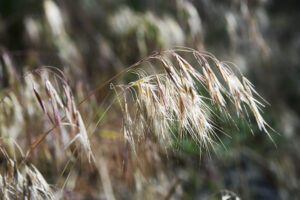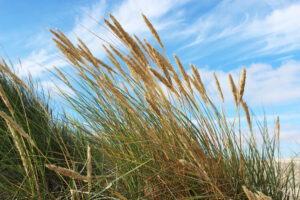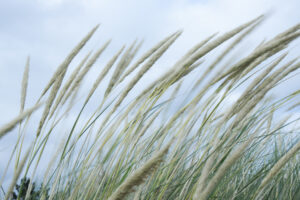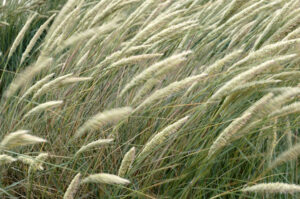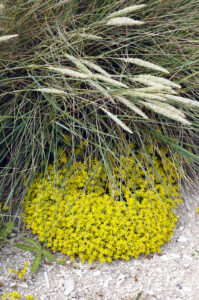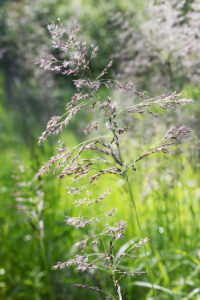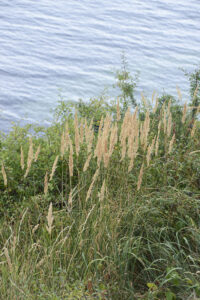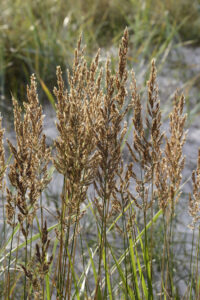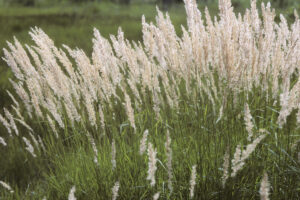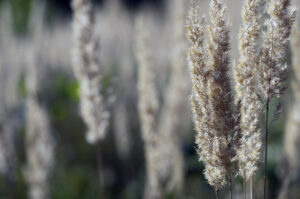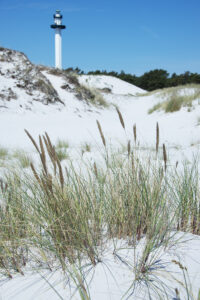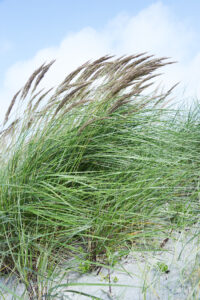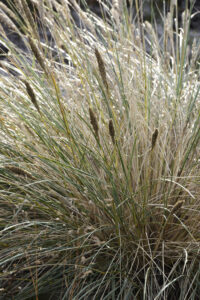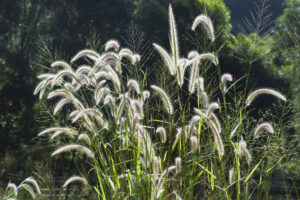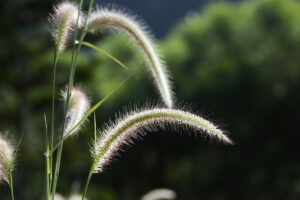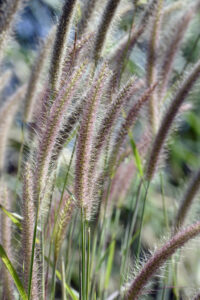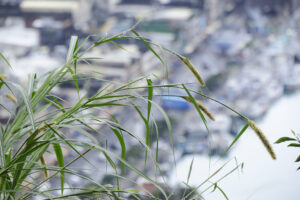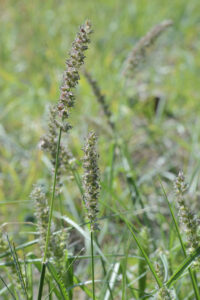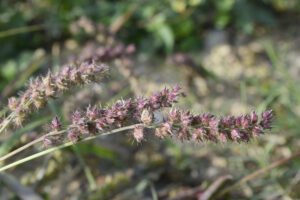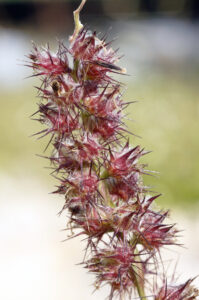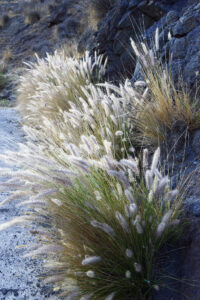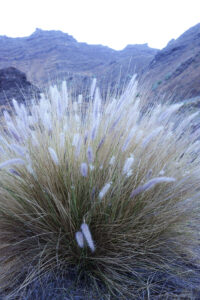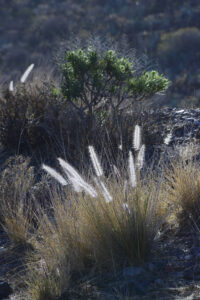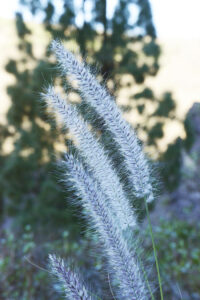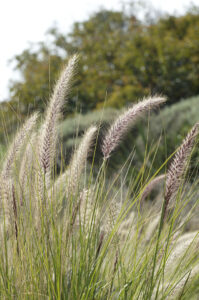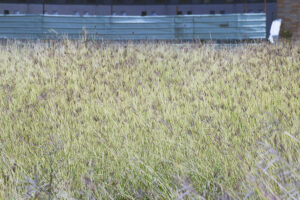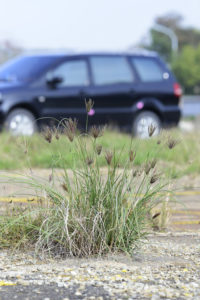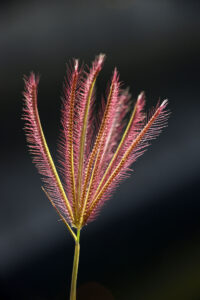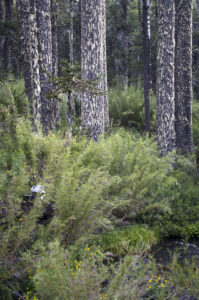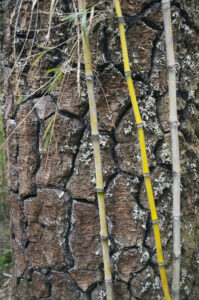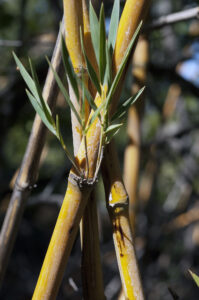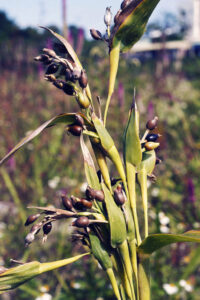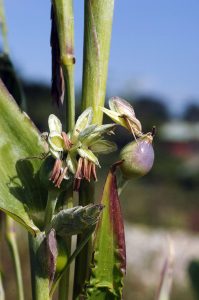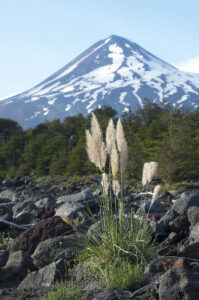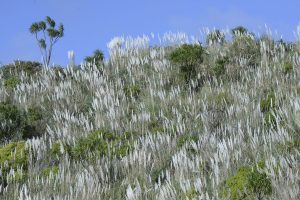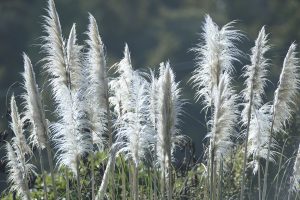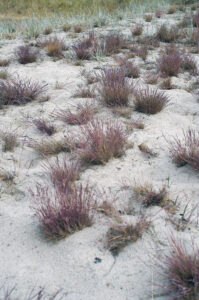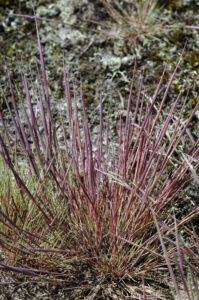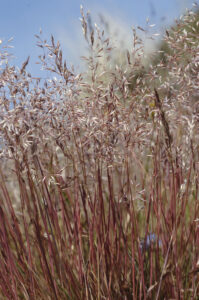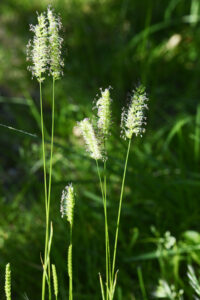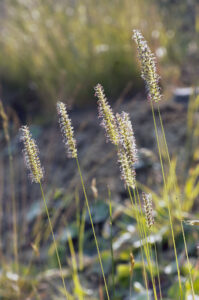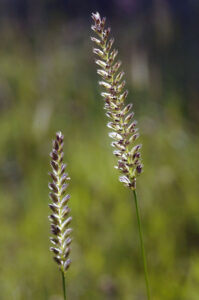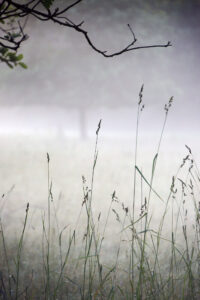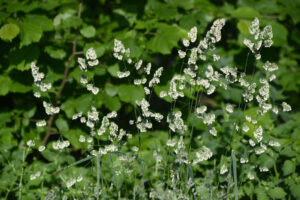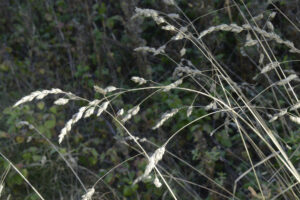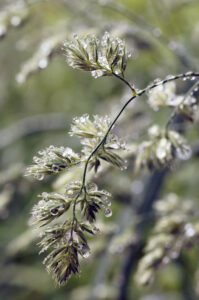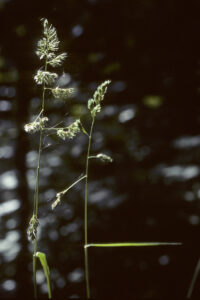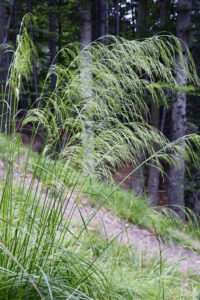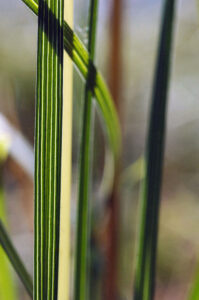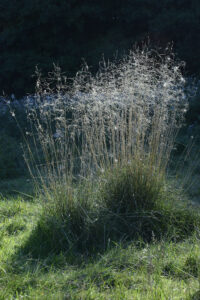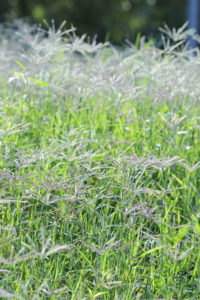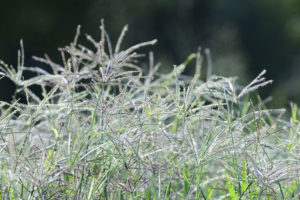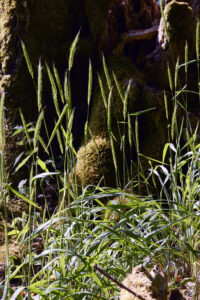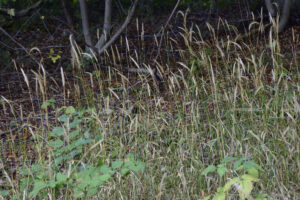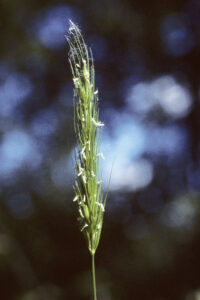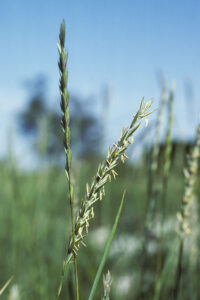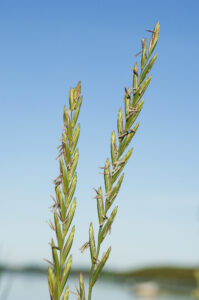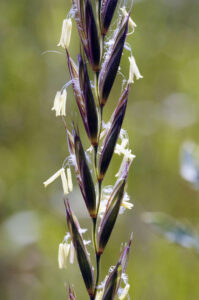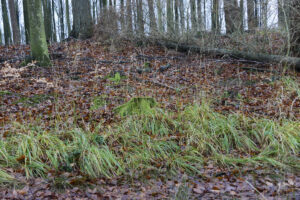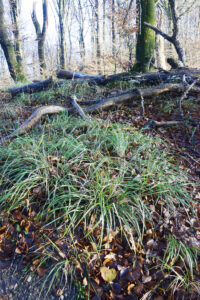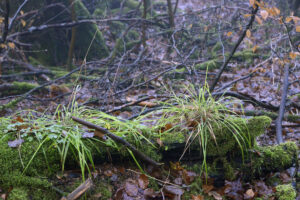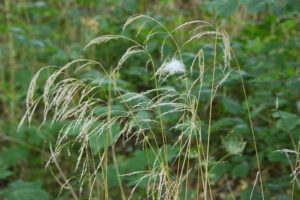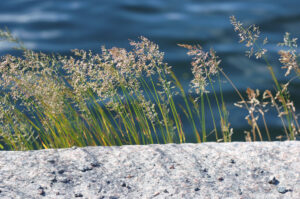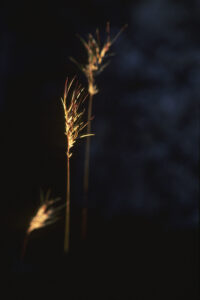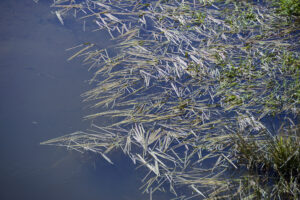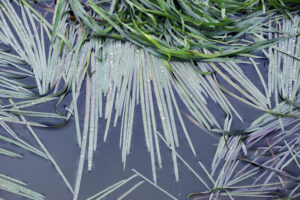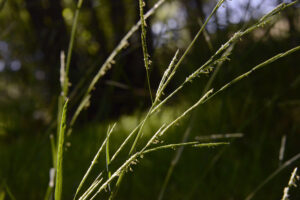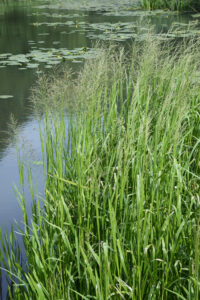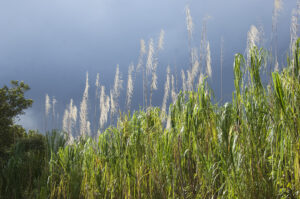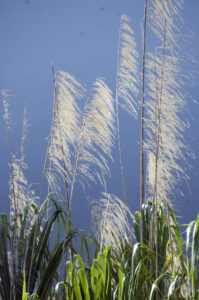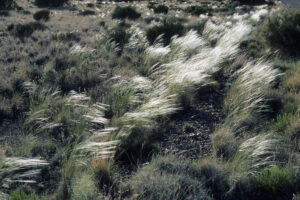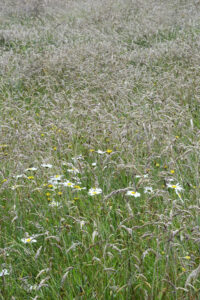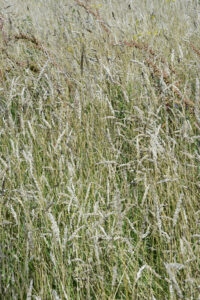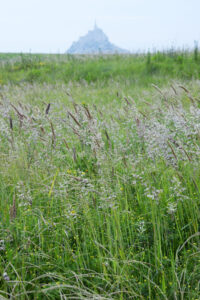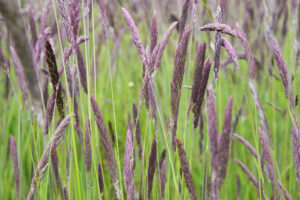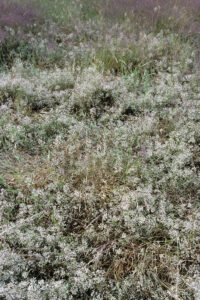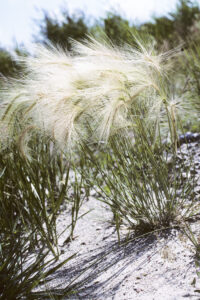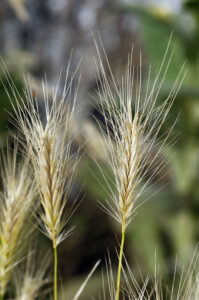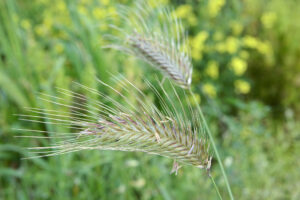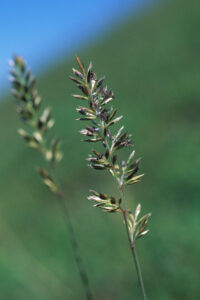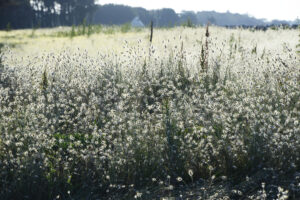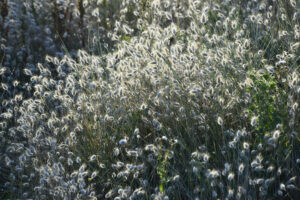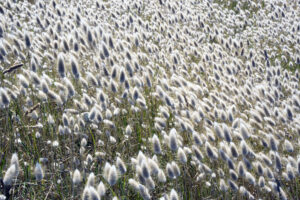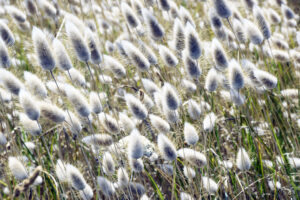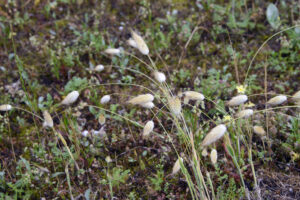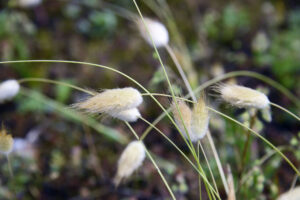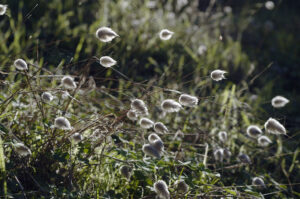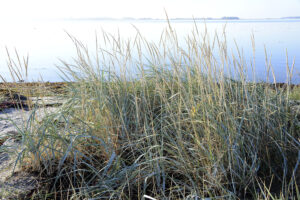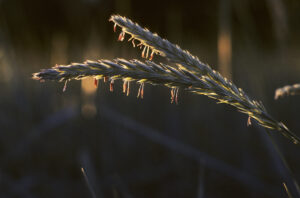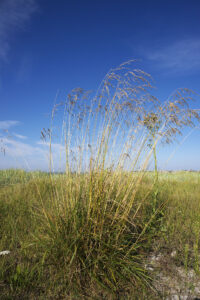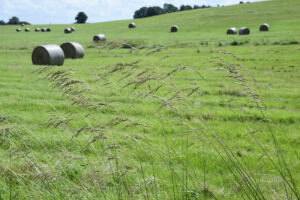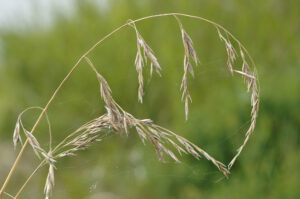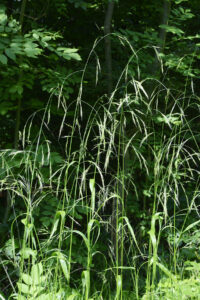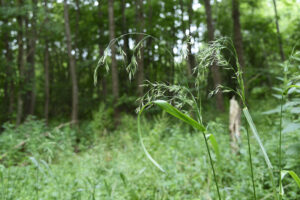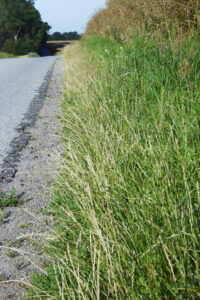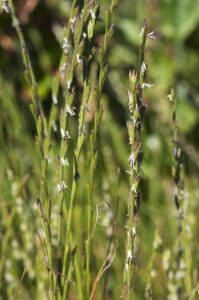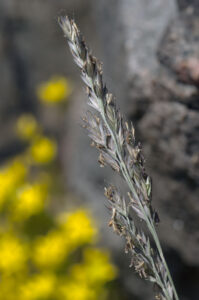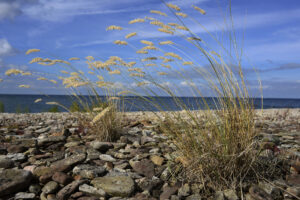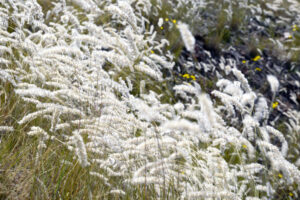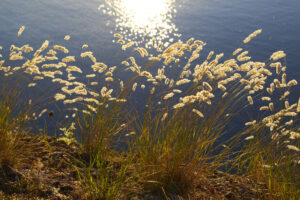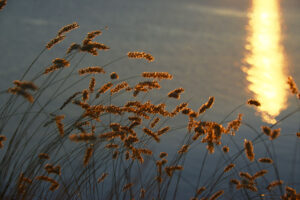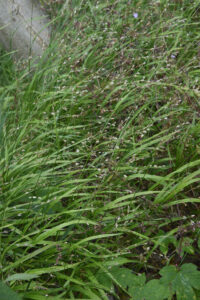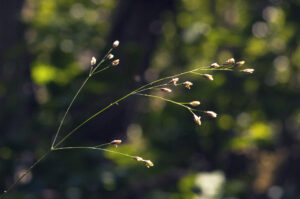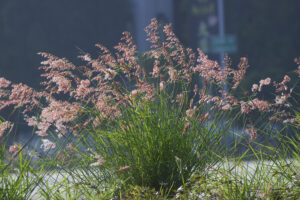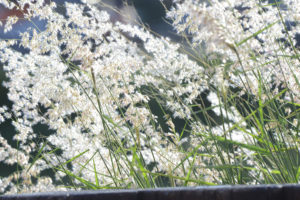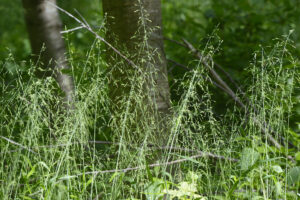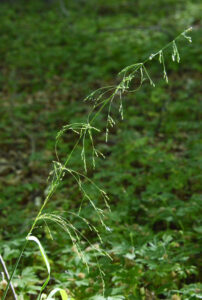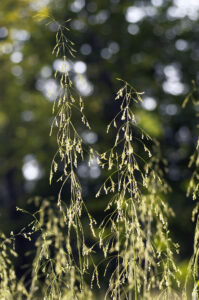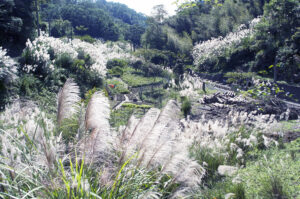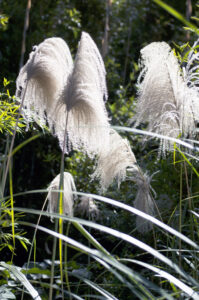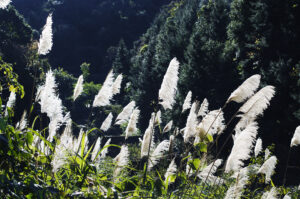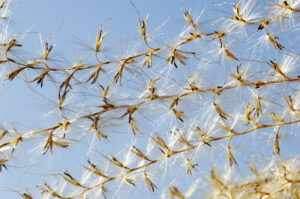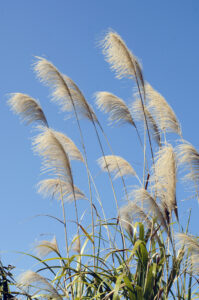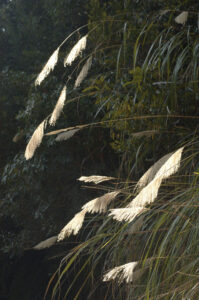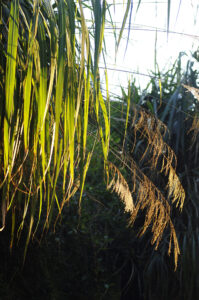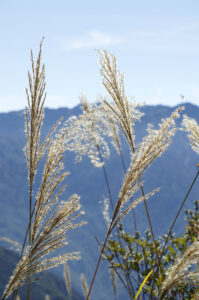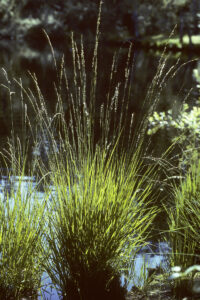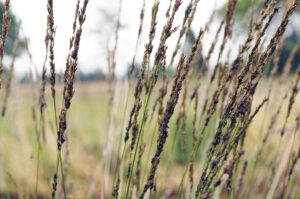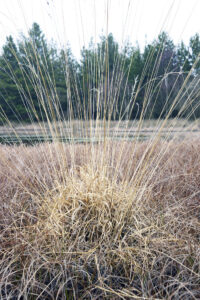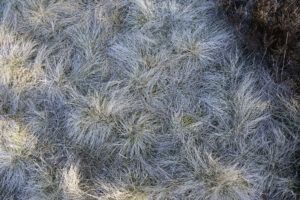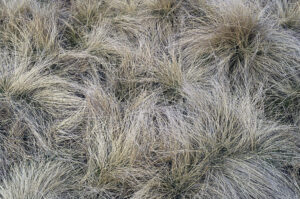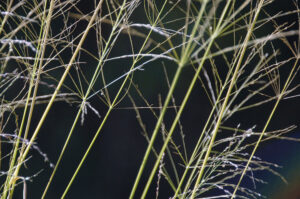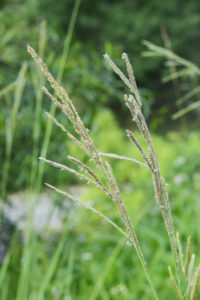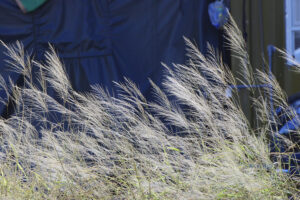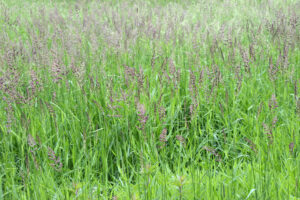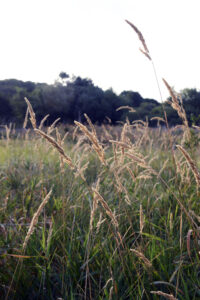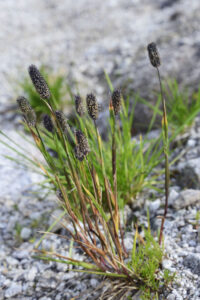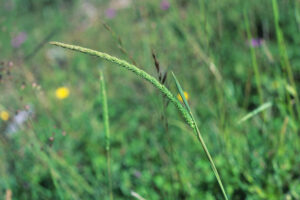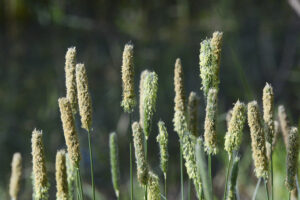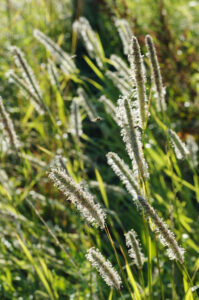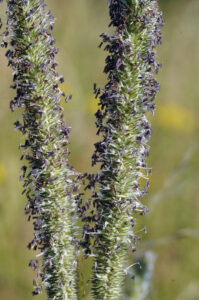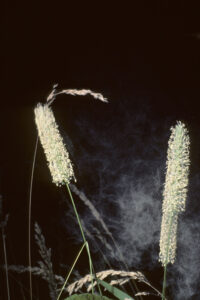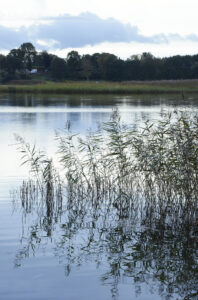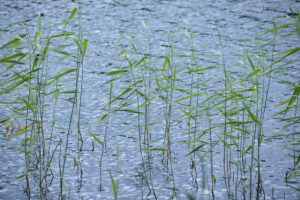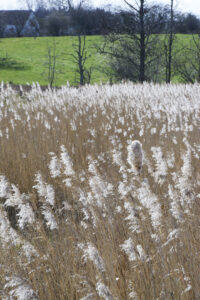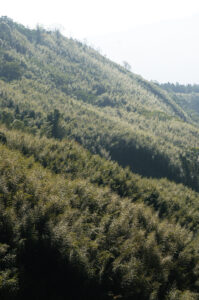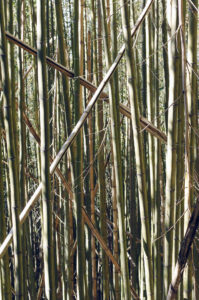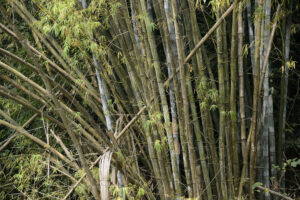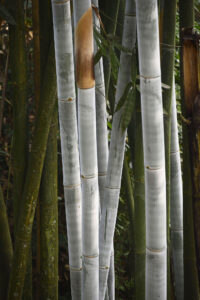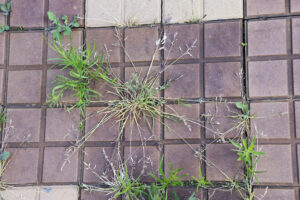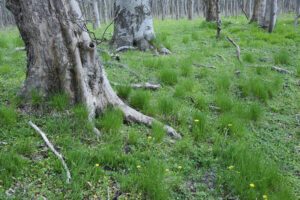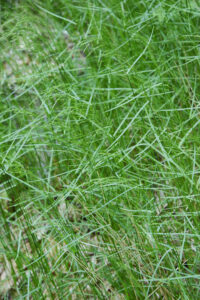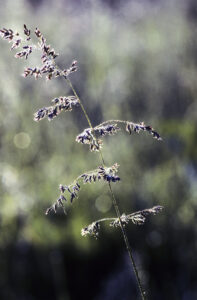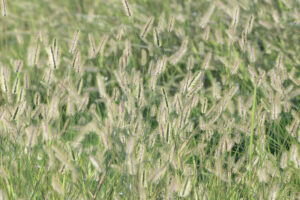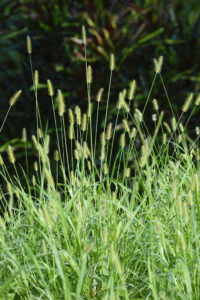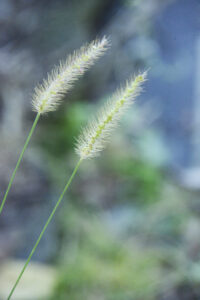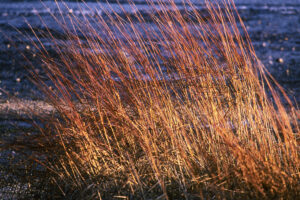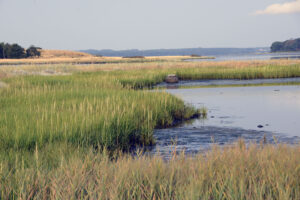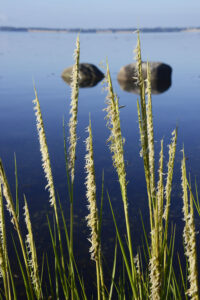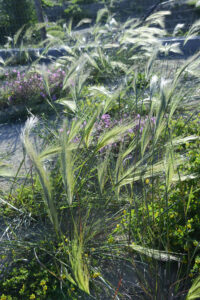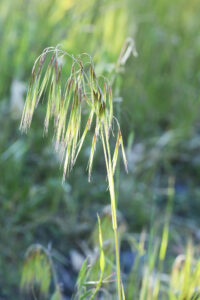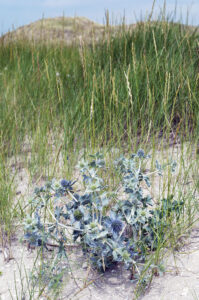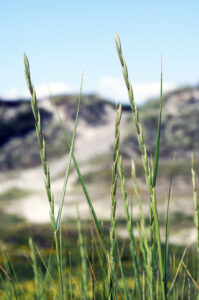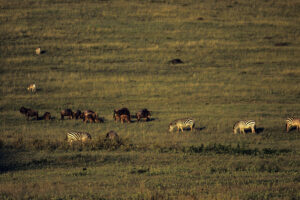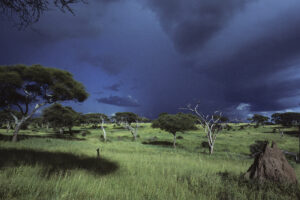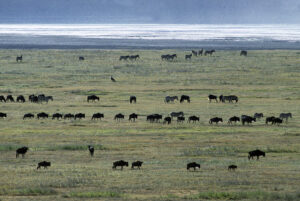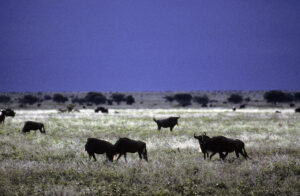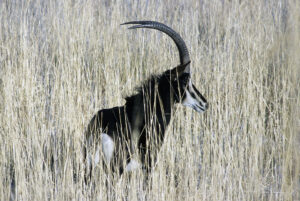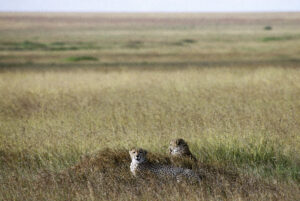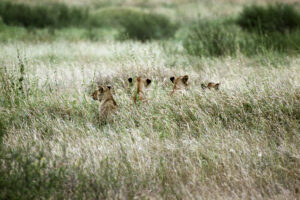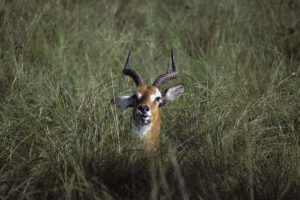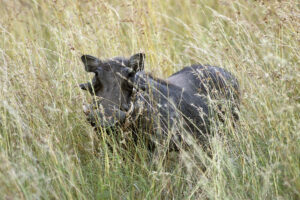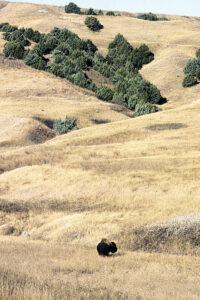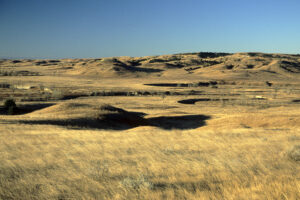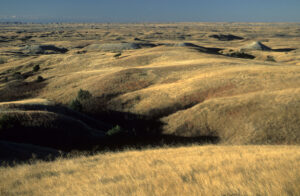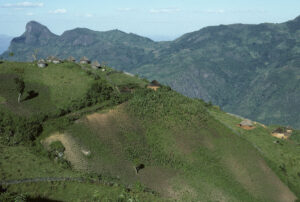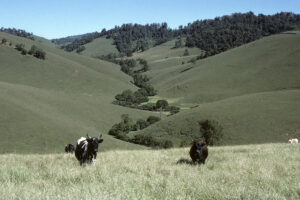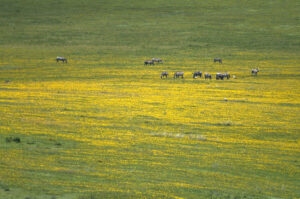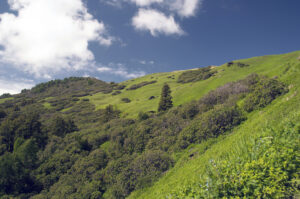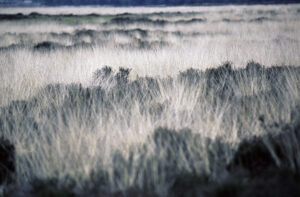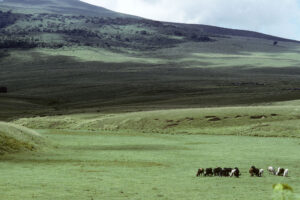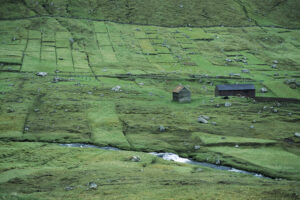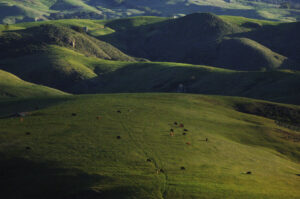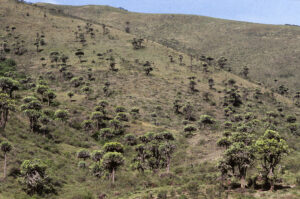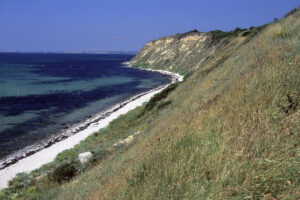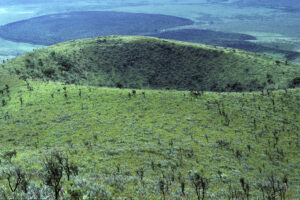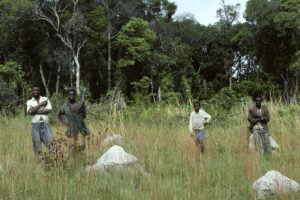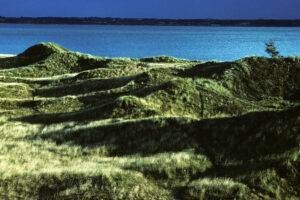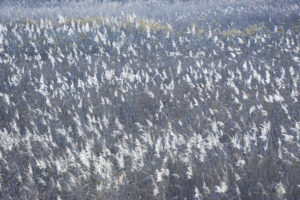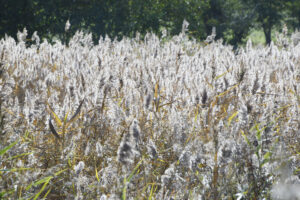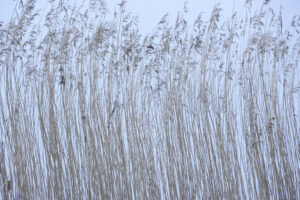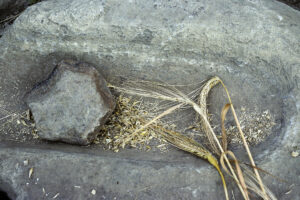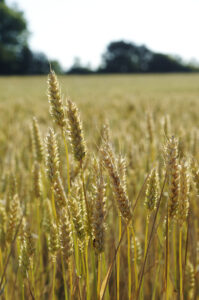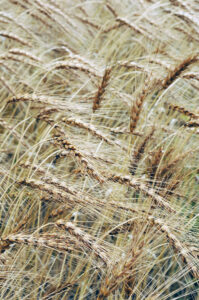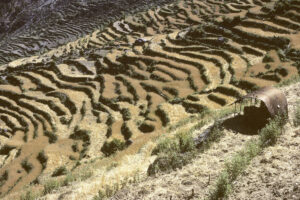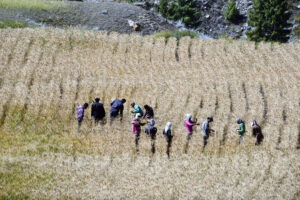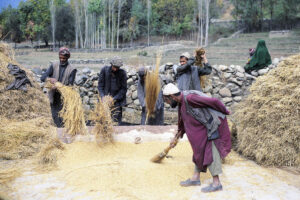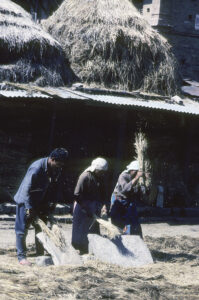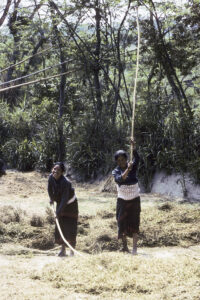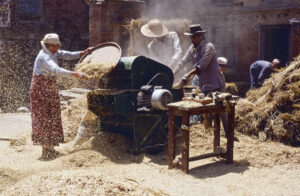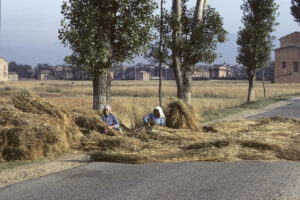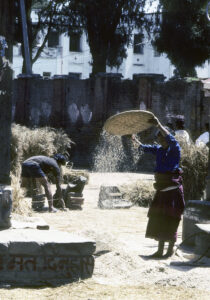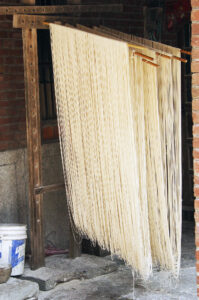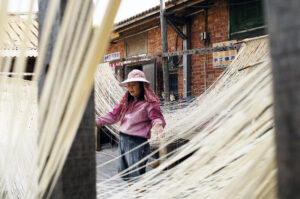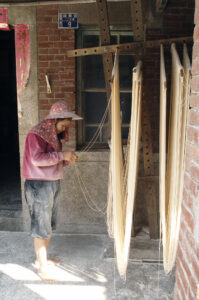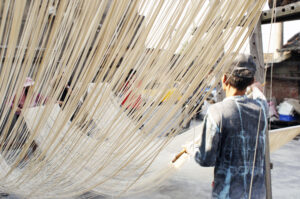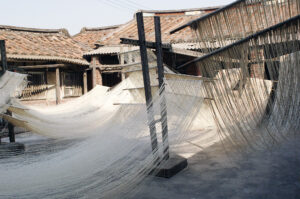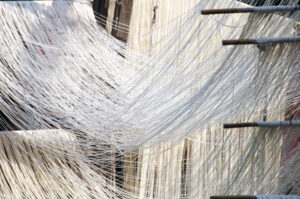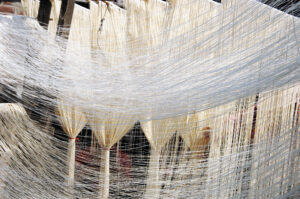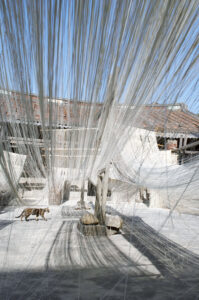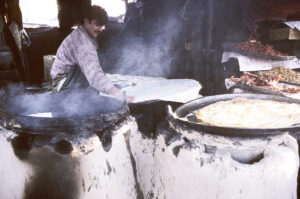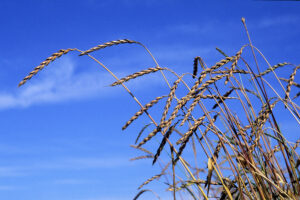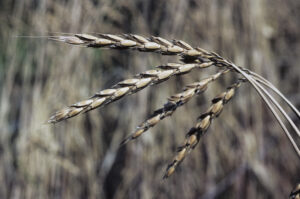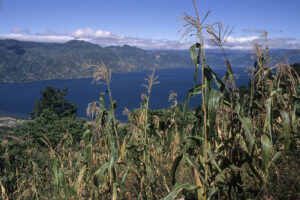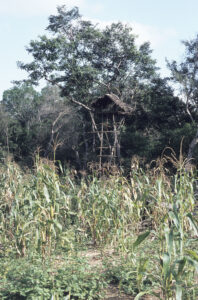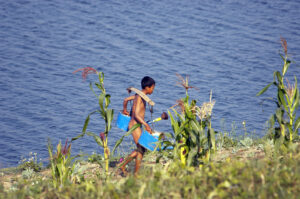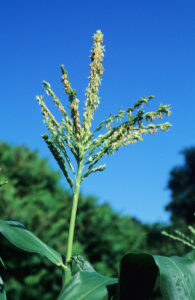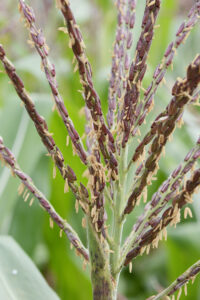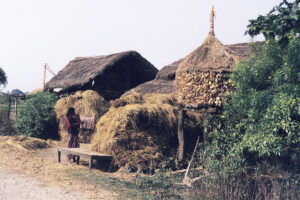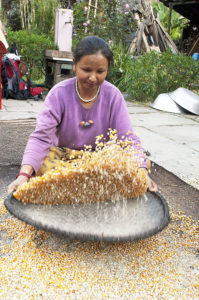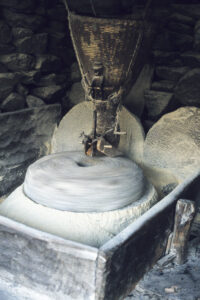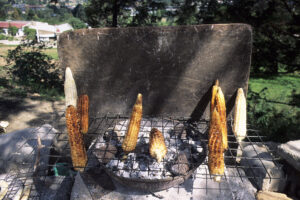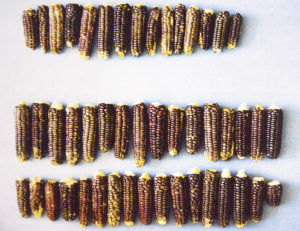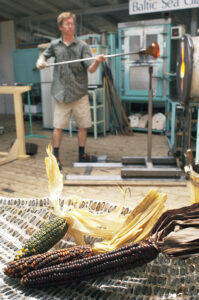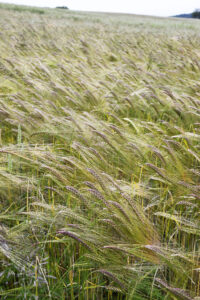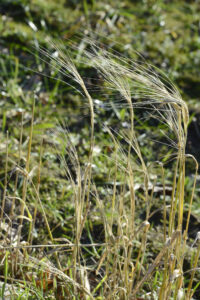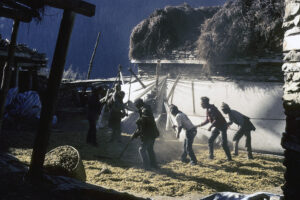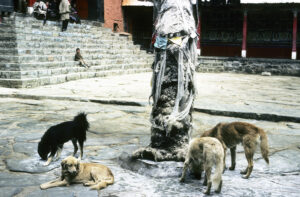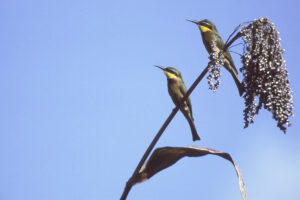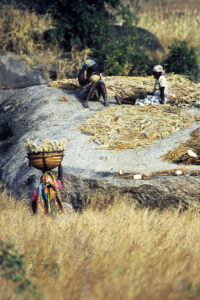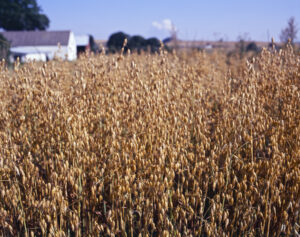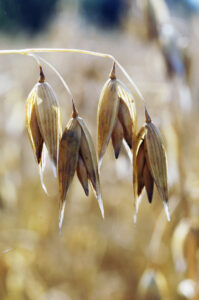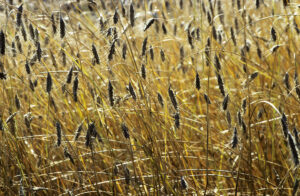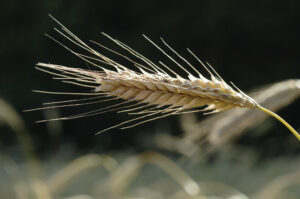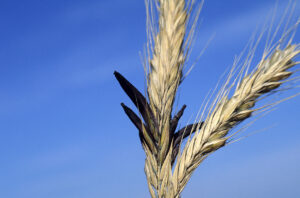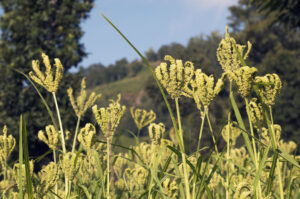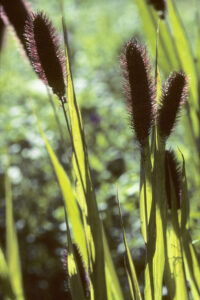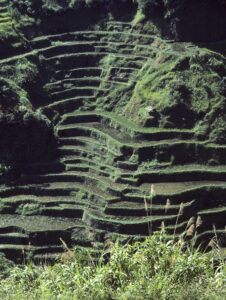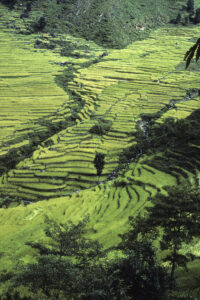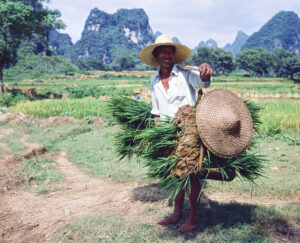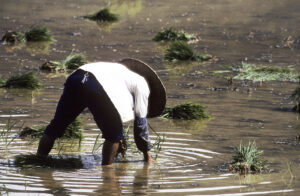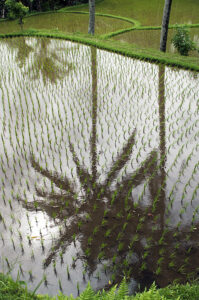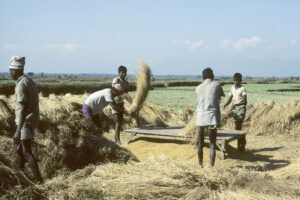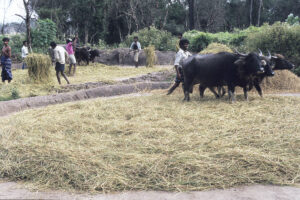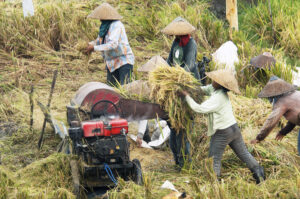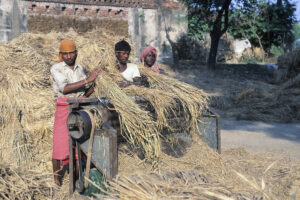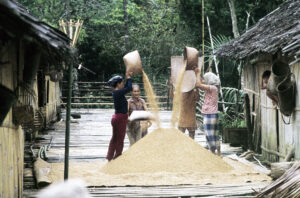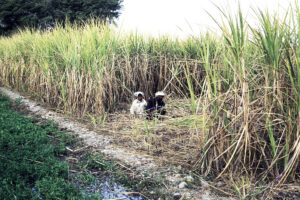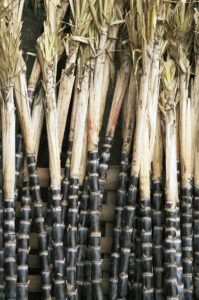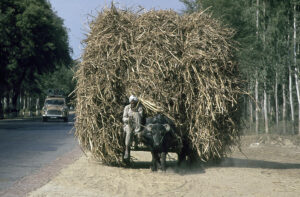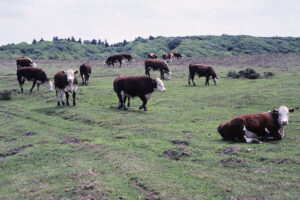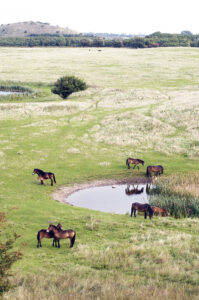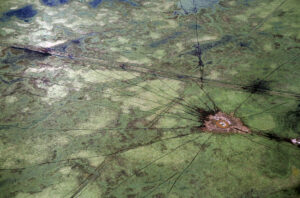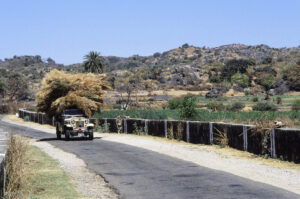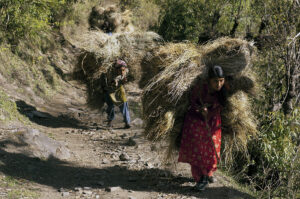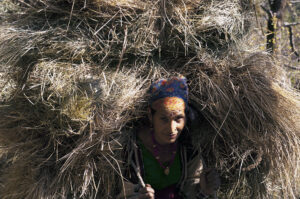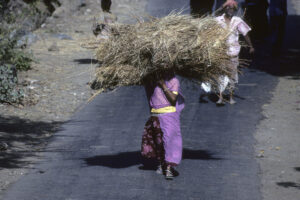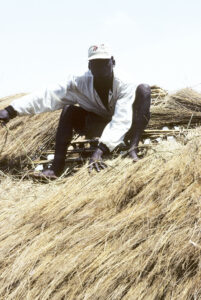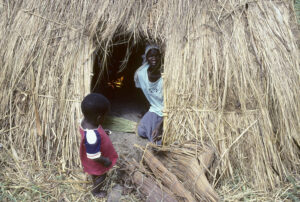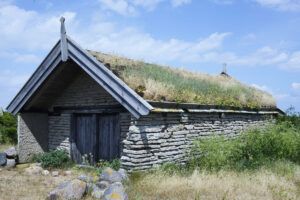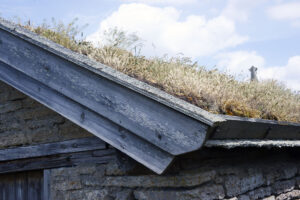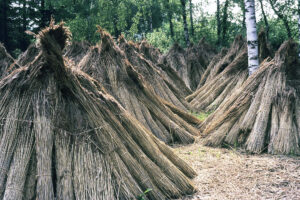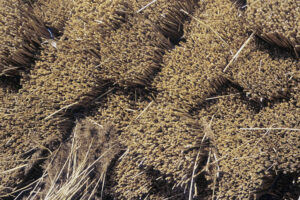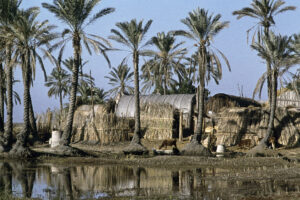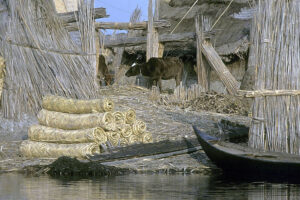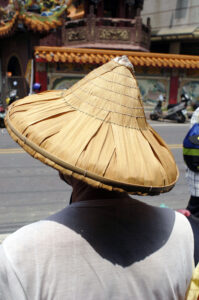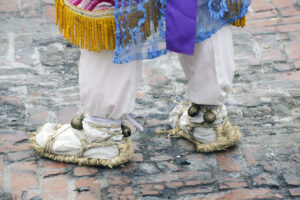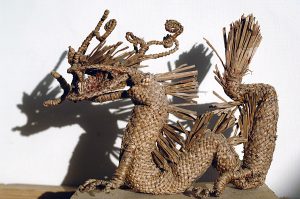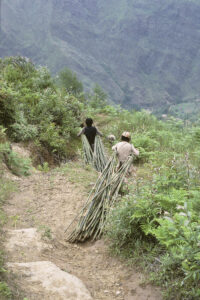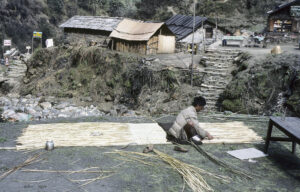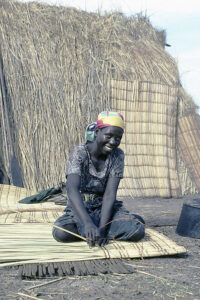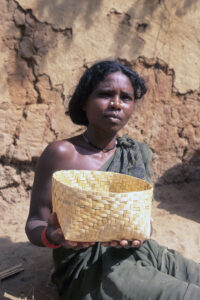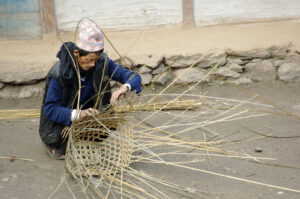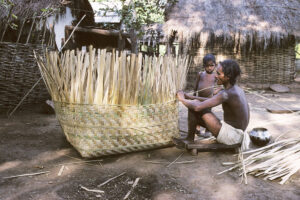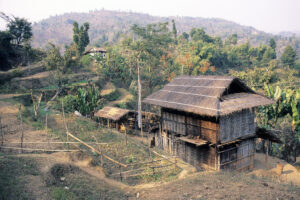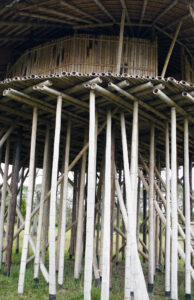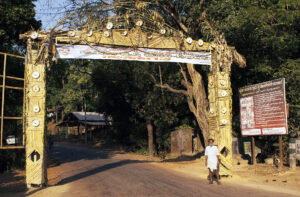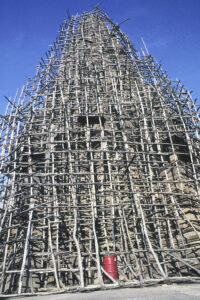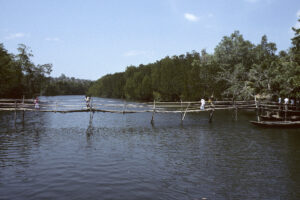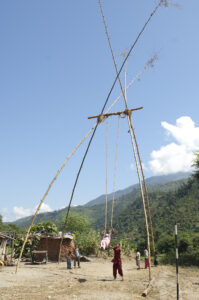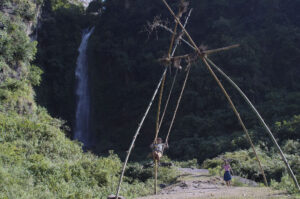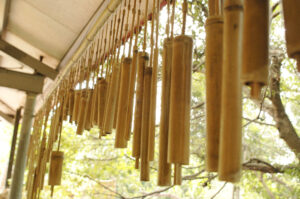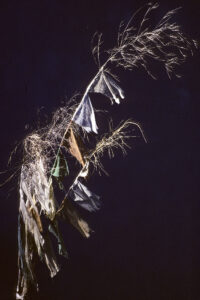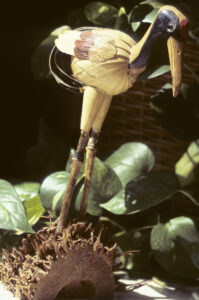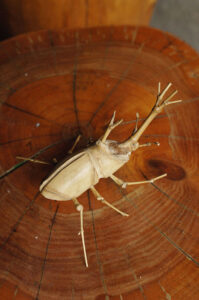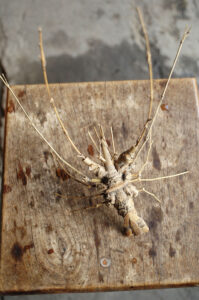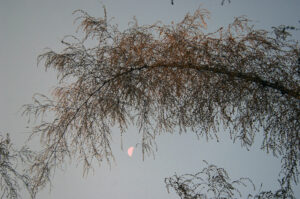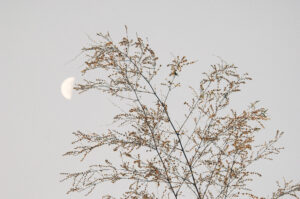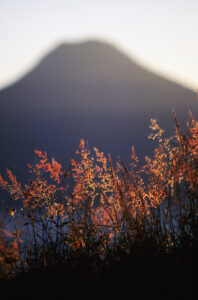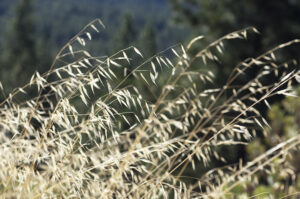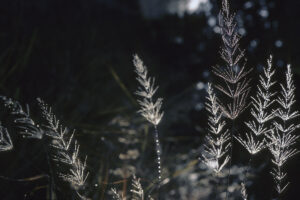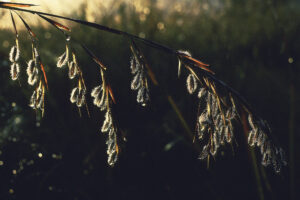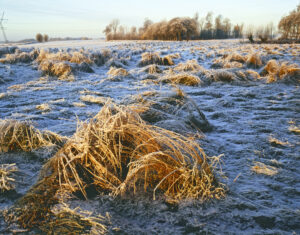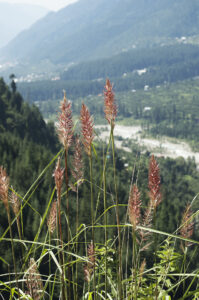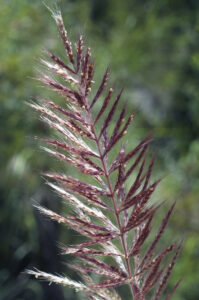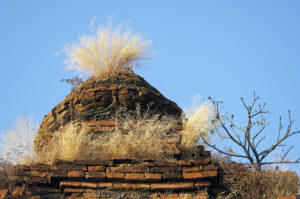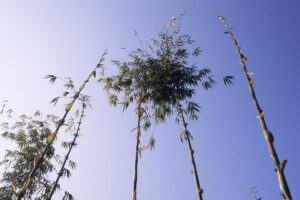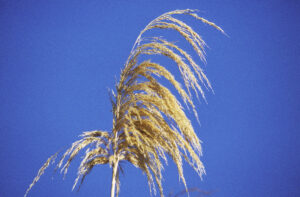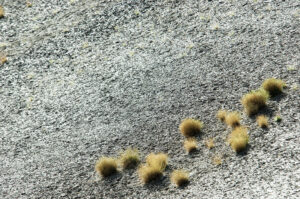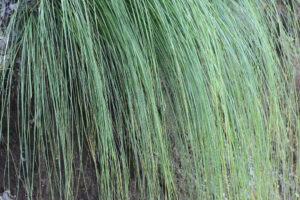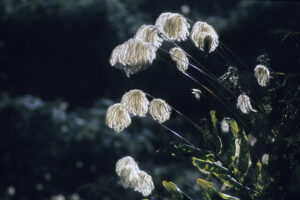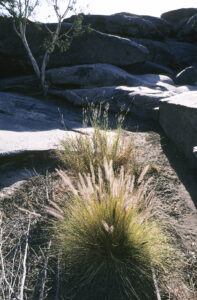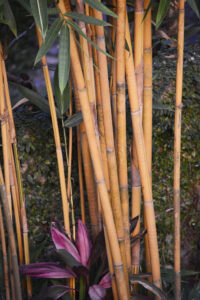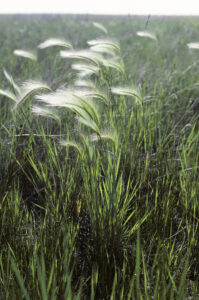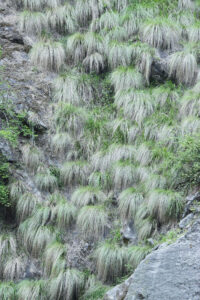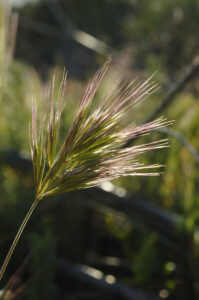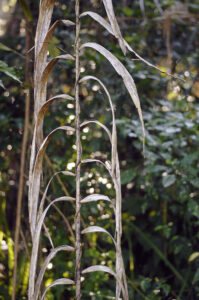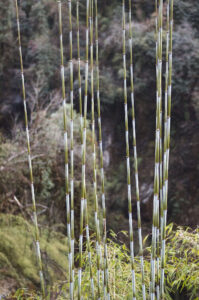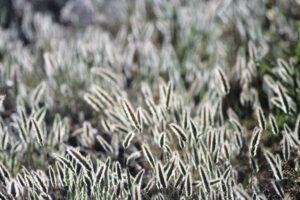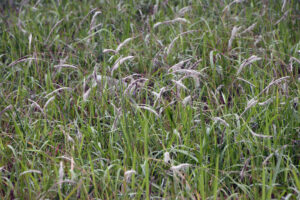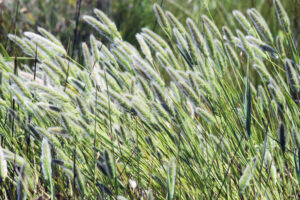Grasses
Withered grass tufts, Atacama Desert, Chile. (Photo copyright © by Kaj Halberg)
Late afternoon light illuminates a grass-clad plain around a lake, Corbett National Park, Uttarakhand, India. (Photo copyright © by Kaj Halberg)
Withered grass tufts and Mojave yuccas (Yucca schidigera) in the Colorado Desert, Joshua Tree National Park, California. (Photo copyright © by Kaj Halberg)
Boys, playing with a wheelbarrow in a sea of silver-headed grass, Tumlingtar, Arun Valley, eastern Nepal. (Photo copyright © by Kaj Halberg)
Savanna in morning light, with grazing impalas (Aepyceros melampus), Tarangire National Park, Tanzania. This species is described on the page Animals – Mammals: Antelopes. (Photo copyright © by Kaj Halberg)
Grass at sunset, growing on the shore of the Ayeyarwady River, Bagan, Myanmar. (Photo copyright © by Kaj Halberg)
Grass-clad hills in morning light, Hutiao Xia (‘Tiger Leaping Gorge’), Jinsha River, Yunnan Province, China. (Photo copyright © by Kaj Halberg)
Red grass in morning light, Crystal Cove State Park, California. (Photo copyright © by Kaj Halberg)
Grazing Gotland sheep in late autumn afternoon light, Jutland, Denmark. (Photo copyright © by Kaj Halberg)
Sinhalese girl, picking grass, Dambulla, Sri Lanka. (Photo copyright © by Kaj Halberg)
Women, planting rice plants in a flooded field, central Myanmar. (Photo copyright © by Kaj Halberg)
The bottom picture above reminds me of a true story from Taiwan.
A teacher brought his young students, who had grown up in the heart of a city, out to a rice field so that they could learn where the food came from. One of the kids was afraid to step into the field, as he thought he would sink into it.
The teacher heard one of the other kids saying: “Oh no, you don’t have to be afraid! There is cement underneath!”
The old hometown looks the same,
As I step down from the train,
And there to meet me is my mama and papa.
Down the road I look, and there runs Mary,
Hair of gold and lips like cherries.
It’s good to touch the green, green grass of home.
Yes, they’ll all come to meet me,
Arms reaching, smiling sweetly.
It’s good to touch the green, green grass of home.
The old house is still standing,
Though the paint is cracked and dry,
And there’s that old oak tree that I used to play on.
Down the lane, I walk with my sweet Mary,
Hair of gold and lips like cherries.
It’s good to touch the green, green grass of home.
Then I awake and look around me,
At four grey walls that surround me,
And I realize, yes, I was only dreaming,
For there’s a guard, and there’s a sad, old padre.
On and on, we’ll walk at daybreak,
Again, I’ll touch the green, green grass of home.
Yes, they’ll all come to see me
In the shade of that old oak tree,
As they lay me ‘neath the green, green grass of home.
Green, Green Grass of Home, country song, written by American songwriter Claude Putman Jr. (1930-2016).
Grasses are a huge, very successful plant family, Poaceae, also known as Gramineae, comprising about 780 genera and 12,000 species. It is found in almost any habitat on the globe, and on all continents, including Antarctica, where a single species is found in the western peninsula. The family names are derived from poa, the Ancient Greek term for fodder, and from gramen, the classical Latin term for grasses.
These plants are characterized by having hollow stems, except at the nodes, popularly called knees. Each leaf grows from a node, the lower part enclosing the stem and forming a sheath. At the base of the leaf, there may be a membrane, or a ring of hairs, the ligule. The stem is usually circular, sometimes flattened, but never triangular like the sedges (Carex).
The inflorescence may be a spike, consisting of a long row of stalkless spikelets, each with one or several flowers, or a panicle, an often pendent, many-branched inflorescence with stalked spikelets. The stamens are characteristic, the anthers hanging from the end of a very thin, thread-like filament, often pulling it downwards.
The bract that surrounds the seed is called chaff, and in many species a more or less stiff hair, the awn, grows out from the base of the chaff.
On this page, nomenclature largely follows Kew Gardens’ website Plants of the World Online (powo.science.kew.org). Regarding the etymology, I have relied on the website Wiktionary, and on an excellent book by Jens Corneliuson: Växternas namn. Vetenskapliga växtnamns etymologi. Språkligt ursprung och kulturell bakgrund (‘Etymology of scientific plant names’), Wahlström & Widstrand, 1999 (in Swedish).
Grasses have hollow stems, clearly demonstrated in this picture, in which a Sasak tribal woman is carrying bamboo stems to her village near Senaru, Mount Rinjani, Lombok, Indonesia. (Photo copyright © by Kaj Halberg)
Grass leaves grow from nodes, the lower part enclosing the stem and forming a sheath, often quite long. These pictures show greater sweet-grass (Glyceria maxima), Ejstrup Lake, central Jutland, Denmark, and reed canary-grass (Phalaris arundinacea), covered in rime, Nature Reserve Vorsø, Horsens Fjord, Denmark. (Photos copyright © by Kaj Halberg)
The inflorescence of grasses may be a spike as in crested dog’s-tail (Cynosurus cristatus) (top), or a panicle as in barren brome (Bromus sterilis), both photographed on the island of Bornholm, Denmark. (Photos copyright © by Kaj Halberg)
Grass anthers are often colourful, hanging at the end of a very thin, thread-like filament. These pictures show flowering cock’s foot (Dactylis glomerata), Bornholm, Denmark (top), couch grass (Elymus repens), Roskilde Fjord, Denmark, and an unidentified species in Hanoi, Vietnam. (Photos copyright © by Kaj Halberg)
Chaff and awn of wild oat (Avena fatua), naturalized in Crystal Cove State Park, California. It is very similar to the cultivated oat (A. sativa), but may immediately be identified by the very long awn. (Photo copyright © by Kaj Halberg)
Bamboo
Bamboo is a term applied to various types of grasses, mostly found in warmer regions of the world. This group, comprising about 1,400 species in 115 genera, is divided into three tribes, tropical woody bamboos (Bambuseae), temperate woody bamboos (Arundinarieae), and herbaceous bamboos (Olyreae). They vary enormously in size, from less than 1 m to over 30 m tall.
Most bamboo species rarely blossom, some only flowering at intervals of 65 to 120 years. Mass-flowering is common in many species, and once flowering has taken place, the plants spread the seeds, wither, and die.
Bamboo is of huge value to many cultures, utilized for production of a large number of items (see caption Grasses and Man).
Bamboo forest surrounds a lake in Parambikulam Wildlife Sanctuary, Kerala, India. (Photo copyright © by Kaj Halberg)
Stands of bamboo in a subtropical evergreen forest, Huoyan Mountain (’99 Peaks’), Pinglin, Taiwan. (Photo copyright © by Kaj Halberg)
Dwarf bamboo forest, Lower Langtang Valley (top), and Lower Marsyangdi Valley, Annapurna, both in Nepal. (Photos copyright © by Kaj Halberg)
Dwarf bamboo, Modi Khola Valley, Annapurna, Nepal. (Photo copyright © by Kaj Halberg)
Stem of a dwarf bamboo, bent down by newly fallen snow, between Tharepati and Melamchigaon, Langtang National Park, Nepal. (Photo copyright © by Kaj Halberg)
Grey treepie (Dendrocitta formosae), resting in bamboo, Taichung, Taiwan. This species is described on the page Animals – Birds: Birds in Taiwan. (Photo copyright © by Kaj Halberg)
Foggy morning at Sauraha, in the Nepal Terai, the tropical lowland plains beneath the foothills of the Himalaya. On his way to work in the fields, a farmer is hurrying past a growth of bamboo. (Photo copyright © by Kaj Halberg)
Young bamboo shoot, Sun-Moon Lake, Taiwan. (Photo copyright © by Kaj Halberg)
On bamboo stems, the sheaths often remain for a long time, even though they have withered. – Yin Tan waterfall, Rueilli (top), and ’99 Peaks’, near Fangyuan, both in Taiwan. (Photos copyright © by Kaj Halberg)
Flowering bamboo, Dandeli Wildlife Sanctuary (upper 2), and Anshi National Park, both in Karnataka, India. (Photos copyright © by Kaj Halberg)
These bamboo plants, which have just flowered, are now dying, stretching their withering stems towards the sky, Dandeli Wildlife Sanctuary. (Photo copyright © by Kaj Halberg)
Black-footed langur (Semnopithecus hypoleucos), climbing up a dying bamboo stem, Anshi National Park, Karnataka, India. This species and many other monkeys are described on the page Animals – Mammals: Monkeys and apes. (Photo copyright © by Kaj Halberg)
Bamboo with seeds, Dandeli Wildlife Sanctuary, Karnataka, India. The bird is a spotted dove (Spilopelia chinensis). This species is described on the page Animals – Birds: Birds in Taiwan. (Foto copyright © by Kaj Halberg)
Seed-bearing dwarf bamboo, Ubud, Bali, Indonesia. In the lower picture, Javan munias (Lonchura leucogastroides) are feeeding on the seeds. (Photo copyright © by Kaj Halberg)
Vernal hanging parrot (Loriculus vernalis), eating bamboo seeds, Anshi National Park, Karnataka, India. This species is described on the page Animals – Birds: Birds in the Indian Subcontinent. (Photo copyright © by Kaj Halberg)
Selected grass species
Arranged in alphabetical order, according to generic and specific names.
Agrostis Bentgrass
This large genus, comprising about 190 species, is widely distributed on all continents, except Antarctica, and it is also absent from certain rainforest and desert areas.
The generic name is Ancient Greek, originally a term translated as ‘a grass that mules feed on’, possibly couch grass (Elymus repens).
Agrostis capillaris Common bentgrass
This species, previously known as A. tenuis, has a vast distribution area, found from Iceland, the British Isles, and Portugal eastwards to central Siberia, southwards to Turkey, Iran, and China. It has also been widely introduced to many other parts of the world. It grows in grasslands, along roads, and in other disturbed areas.
The stem is erect, sometimes to 75 cm tall, but usually lower, sheaths smooth, ligules to 2 mm long, shorter than wide, leaves to 10 cm long and 5 mm broad, flat. The panicles grow to 20 cm long and 12 cm wide, widely open, spikelets purplish-brown or greenish.
The specific name is derived from the Latin capillus (‘hair’ or ‘thread’), presumably referring to the very thin stalks in the inflorescence.
Common bentgrass, Mols, Denmark. (Photo copyright © by Kaj Halberg)
Agrostis gigantea Black bentgrass
This plant is native to temperate regions, from western Europe (except Iceland and the British Isles) eastwards to the Pacific Ocean, and from Scandinavia and Siberia southwards to North Africa, Iran, and northern Indochina. It has become widely naturalized elsewhere, especially in North America, where it was widely cultivated as a pasture grass until the 1940s.
It grows in a variety of habitats, including open woodland, grasslands, roadsides, and waste ground, and as a weed in agricultural areas.
Black bentgrass, Helgenæs, Mols, Denmark. (Photo copyright © by Kaj Halberg)
Black bentgrass, Jutland, Denmark. (Photo copyright © by Kaj Halberg)
Agrostis stolonifera Creeping bentgrass
This species is quite similar to black bentgrass, but may immediately be identified by its numerous runners. It has the same distribution, but is also native to Iceland and the British Isles. It mainly grows in meadows and along rivers, but may also be found in open forests and disturbed sites. In meadows, it often forms dense, carpet-like growths.
The specific name is Latin, meaning ‘bearing stolons’ (runners).
Large growth of creeping bentgrass in a littoral meadow, Møn, Denmark. (Photo copyright © by Kaj Halberg)
Aira Hair-grass
A small genus with about 11 species, widely distributed in Europe, Africa, Madagascar, the Middle East, and Central Asia.
The generic name was a classical Greek term for an unknown grass.
Aira caryophyllea Silver hair-grass
Usually a small tufted grass, occasionally growing to 50 cm tall. The sheaths are rough, ligules to 8 mm long, leaves to 13.5 cm long and 2.5 mm wide, smooth, pointed. The open panicles may grow to 13.5 cm long and 10 cm wide, but are usually much smaller. Spikelets to 3.3 mm long, silvery-green or purplish.
It grows in dry places, widely distributed in Europe, Africa, Madagascar, the Middle East, and Central Asia.
The specific name is derived from Ancient Greek karyon (‘a nut’) and phyllon (‘leaf’). At an early stage, the name karyophyllon was applied by botanists to the clove tree, then called Caryophyllus aromatica (today Syzygium aromaticum). However, the name probably refers to the clove pink (Dianthus caryophyllus), which has grass-like leaves.
The common name alludes to the silvery sheen on the spikelets, before they become dry and turn straw-coloured.
Silver hair-grass, growing in a yard, Store Hjøllund Plantation, Jutland, Denmark. The plant with yellow flowers is common cat’s-ear (Hypochaeris radicata). (Photo copyright © by Kaj Halberg)
Aira praecox Early hair-grass
A tufted grass like the previous species, but with a very different, dense, spike-like panicle, not spread out like in the silver hair-grass.
It also grows in dry areas, found from western and southern Europe eastwards to Turkey and the Caucasus.
The specific name is Latin, meaning ‘premature’, referring to the early flowering of the plant.
Early hair-grass, growing on a forest road, Store Hjøllund Plantation, Jutland, Denmark. (Photo copyright © by Kaj Halberg)
Alopecurus Foxtail
This genus, counting about 43 species, is widely distributed in subarctic, temperate, and subtropical areas of the Northern Hemisphere, and also in cooler regions of western South America.
The generic name is derived from Ancient Greek alopex (‘fox’) and oura (‘tail’), genitive urus, alluding to the shape of the spike.
Alopecurus aequalis Orange foxtail
This species is very widely distributed, found in temperate and subarctic areas of the Northern Hemisphere, southwards to southern United States, North Africa, the Himalaya, and China, and also in the northernmost part of the Andes. It may be identified by the yellowish-green spike and the inflated leaf sheaths.
The specific name is Latin, meaning ‘equal’ – equal to what is not clear.
Orange foxtail, Jutland, Denmark. (Photo copyright © by Kaj Halberg)
Alopecurus arundinaceus Creeping foxtail
This plant resembles the previous species, but may at once be identified by its dark inflorescences. Stem erect, to 1.1 m tall, mostly solitary from the ends of long rhizomes. Leaf to 40 cm long and 1.2 cm wide, upper sheaths somewhat inflated, spike to 10 cm long, dark.
It is partial to humid grasslands, including saline ones, in mountains found up to an elevation of about 1,200 m. It is native to the major part of Europe, eastwards to the Pacific Ocean, southwards to northern Africa, Iran, western Himalaya, and northern China. It has been widely introduced elsewhere as a fodder plant and for erosion control.
The specific name is derived from Ancient Greek arundo, the classical name of giant reed (Arundo donax, below), but it may also mean ‘reed’ in general, in this case probably alluding to the reed-like leaves.
Creeping foxtail, Gräsgårds Hamn, Öland, Sweden. In the background fishermen’s sheds. (Photo copyright © by Kaj Halberg)
Alopecurus geniculatus Marsh foxtail
Native to all of Europe, eastwards to the Ural Mountains, and thence southwards to North Africa, Turkey, the Caucasus, Kazakhstan, and north-western Himalaya. It has also become naturalized elsewhere, including Australia and North America. It is partial to moist meadows.
This plant, which grows to about 60 cm tall, resembles orange foxtail, but has green spikes, and the sheaths are not inflated. The stem is often bent at the nodes. It is able to reproduce vegetatively by rooting at the nodes.
The specific name is derived from the Latin genu (‘knee’) and culum, a diminutive suffix, thus ‘little knee’, alluding to the bent nodes.
Marsh foxtail, Nature Reserve Vorsø, Horsens Fjord, Denmark. (Photos copyright © by Kaj Halberg)
Alopecurus myosuroides Slender meadow foxtail
This grass, to 80 cm tall, often grows in tufts. The leaves are smooth, pointed, to 16 cm long and 8 mm wide. It is native to southern Europe, northern Africa, Arabia, and south-western Asia, but it has become naturalized in many other places, often being a troublesome weed in crops.
The specific name is derived from Ancient Greek mys (‘mouse’) and oura (‘tail’), and the Latin oides (‘resembling’), thus ‘resembling a mouse-tail’, alluding to the spike.
Slender meadow foxtail, growing on a straw roof, Funen, Denmark. (Photo copyright © by Kaj Halberg)
Alopecurus pratensis Meadow foxtail
As its name implies, this species is partial to meadows, but avoids wetter ones. It is found all over Europe, and thence eastwards to eastern Siberia, southwards to the Mediterranean, Iran, and northern China. It is also widely cultivated for fodder and has become naturalized elsewhere, including Australia and North America.
The specific name is Latin, meaning ‘of meadows’.
Meadow foxtail, Sassolungo, Dolomites, Italy (top), and Bornholm, Denmark. (Photos copyright © by Kaj Halberg)
Ammophila arenaria, see Calamagrostis arenaria.
Anthoxanthum
This genus with about 50 species is widespread in the Northern Hemisphere, with a patchy occurrence in South America, southern Africa, Southeast Asia, and Australia.
The generic name is derived from Ancient Greek anthos (‘flower’) and xanthos (‘yellow’), alluding to the spikes of A. odoratum (below) turning yellow when ageing.
Anthoxanthum nitens Sweetgrass
This fragrant grass, by many authorities called Hierochloe odorata, is very widespread in subarctic and temperate areas of the Northern Hemisphere, southwards to the United States, Iran, and China. It is found in humid grasslands, mainly along rivers and lake sides.
The stem is to about 50 cm tall, the leaves often growing outwards horizontally, to a length of 1 m or more.
The specific name is from the Latin niteo (‘shining’ or ‘thriving’), probably alluding to the lush growth of the leaves.
The alternative generic name is derived from Ancient Greek hieros (‘sacred’) and chloe (‘young green shoot’). Because of its fragrance, it was strewn at church doors on saints’ days in northern Europe. It has also been used in France to add flavour to candy, tobacco, soft drinks, and perfumes, and in Poland it has been added to vodka.
Sweetgrass, covering the ground in a reedbed, Ringkøbing Fjord, Jutland, Denmark. (Photo copyright © by Kaj Halberg)
Flowering sweetgrass, Ringkøbing Fjord. (Photos copyright © by Kaj Halberg)
Anthoxanthum odoratum Sweet vernal grass
This species is native from Iceland eastwards to western Siberia, southwards to North Africa, Turkey, and Mongolia.
The specific name is Latin, meaning ‘fragrant’.
Sweet vernal grass, Cap Frehel, Brittany. (Photo copyright © by Kaj Halberg)
Sweet vernal grass, growing among coastal rocks together with sheep’s-bit (Jasione montana), Gudhjem, Bornholm, Denmark. (Photos copyright © by Kaj Halberg)
Sweet vernal grass in evening light, Fanø, Denmark. (Photos copyright © by Kaj Halberg)
Apera
This small genus with 5 species is found from Europe eastwards to eastern Siberia, southwards to Mauritania, Egypt, Pakistan, and southern Siberia.
The generic name is derived from Ancient Greek a (‘not’) and peros (‘mutilated’), i.e. ‘unadulterated’. What it refers to is not clear.
Apera spica-venti Common windgrass
Common windgrass is native to from Denmark eastwards to Yakutia, southwards to Mauritania, Egypt, Iran, and Kazakhstan, and has become naturalized in northern Europe and North America.
It is a common weed in fields with winter cereals.
The specific name is Latin-Italian, meaning ‘twenty spikes’, alluding to the numerous spikes.
Common windgrass, growing at a roadside together with cornflower (Centaurea cyanus), Jutland, Denmark. (Photo copyright © by Kaj Halberg)
Common windgrass, Mols, Denmark. (Photo copyright © by Kaj Halberg)
Arrhenatherum
A small genus with 7 species, distributed from the entire Europe, including Iceland, eastwards to the Ural Mountains and Kazakhstan, southwards to northern Africa, Jordan, and Iran.
The generic name is derived from Ancient Greek arrhenos (‘male’) and atheros (‘bristle’), alluding to the fact that only the male flowers have awns.
Arrhenatherum elatius False oat-grass
This grass, occasionally growing to 1.8 m tall, has long, slightly hairy, rough leaves, to 1 cm broad. The panicle is up to 30 cm long, spikelets with angled, projecting awns, to 1.7 cm long, green or purplish. The panicles often remain into winter.
It is found from Iceland eastwards to the Ural Mountains, southwards to North Africa, Iran, and Kyrgyzstan. It is very common, growing in a wide variety of open habitats, for instance along roads, hedges, fields, and streams. It has been greatly favoured by the increased nitrogen fallout in later years.
The specific name is Latin, meaning ‘tall’. The common name alludes to its superficial resemblance to the cultivated oat (Avena sativa), described below in the section Grasses and Man.
False oat-grass and exhaust from jetplanes, Lyø, south of Funen, Denmark. (Photo copyright © by Kaj Halberg)
False oat-grass, southern Zealand, Denmark. (Photo copyright © by Kaj Halberg)
False oat-grass, Öland, Sweden. The red flowers are corn poppies (Papaver rhoeas). (Photo copyright © by Kaj Halberg)
False oat-grass in morning fog, near Ploubezre, Lannion, Brittany. (Photo copyright © by Kaj Halberg)
False oat-grass with raindrops, Rossfeld, near Berchtesgaden, southern Germany. (Photo copyright © by Kaj Halberg)
Flowering false oat-grass, Nature Reserve Vorsø, Horsens Fjord (top), and Lyø, south of Funen, both in Denmark. (Photos copyright © by Kaj Halberg)
Arundo
This small genus, comprising 5 species, occurs from the Mediterranean eastwards to Kazakhstan and Japan, southwards to Yemen, India, Indochina, and the Philippines.
The generic name is the classical Latin term for several reed species with stiff, bamboo-like stems.
Arundo donax Giant reed
This huge grass is often to 6 m tall, sometimes even to 10 m. It is native from Turkey, Jordan, Arabia, and Kazakhstan eastwards across central and southern Asia to Japan, but has become widely naturalized elsewhere.
In western United States it has been extensively planted as a means to control soil erosion, and as a biomass plant, but it often escapes and has become highly invasive in numerous places, especially along rivers, where it often displaces the natural vegetation.
The specific name is the Ancient Greek name of this species.
Giant reed in one of its native areas: Wadi Zarqa Main, Jordan Valley, Jordan. (Photo copyright © by Kaj Halberg)
In this picture, giant reed grows on a bluff in Julia Pfeiffer Burns State Park, Big Sur, California. (Photo copyright © by Kaj Halberg)
Arundo formosana Formosan giant reed
This species usually grows in dry coastal grasslands and on sea cliffs, but is sometimes found inland, often forming dense masses of leaves, and with large, pendent inflorescences. It occurs from Iriomote Island in the south Ryukyu Islands, Japan, southwards through Taiwan to the Philippines.
The stems are slender, often pendent, to 1.2 m tall/long and to 6 mm across, branching from the nodes. Leaf sheaths are longer than the internodes, smooth, blade to 25 cm long and 1.5 cm broad, basal part with long silky hairs. Inflorescence is a panicle, to 30 cm long, pale brown, spikelets to 1 cm long, with 2-5 florets.
The stems are used for making baskets.
Formosa is the old Portuguese name of Taiwan, meaning ‘beautiful’.
Formosan giant reed, Tungling Forest, near Wufong, western Taiwan. (Photo copyright © by Kaj Halberg)
Avena Oat
This genus contains about 27 species, distributed from the entire Europe eastwards to eastern Siberia, southwards to northern and eastern Africa, Arabia, Sri Lanka, and southern China.
The generic name is the classical Latin term for the cultivated oat (A. sativa), described below in the section Grasses and Man.
Avena barbata
Stem to 1.2 m tall, ascending or erect, solitary or in groups. Leaf sheaths densely hairy, ligule blunt, to 6 mm long, leaf blade linear, pointed, to 25 cm long and 2 cm wide, hairy or smooth. The inflorescences are spreading panicles, to 35 cm long and 15 cm wide, at the end of stalks, to 18 cm long, spikelets to 2.5 cm long, with 2-3 florets, chaff lanceolate, to 2.5 cm long, with 5 or 7 veins, awn to 3 cm long, densely hairy at its attachment.
The specific name may refer to the long awns, or to the tuft of hairs at their base.
Avena barbata, Esemçe, near Mudanya, Marmara Sea, Turkey. (Photo copyright © by Kaj Halberg)
Avena fatua Wild oat
Stem to 80 cm tall, ascending or erect, smooth. Leaf sheaths hairy or smooth, ligule blunt, to 6 mm long, leaf blade linear, pointed, to 25 cm long and 1 cm wide, smooth or scaly. The inflorescences are spreading panicles, to 40 cm long and 12 cm wide, spikelets to 2.7 cm long, with 2-3 florets, chaff lanceolate, pointed, to 2.7 cm long, 7-9-veined, awn to 3.5 cm long, often bent or twisted.
This plant grows in open areas and is a common weed in fields and plantations, found from sea level up to altitudes around 1,500 m.
It is believed to have originated in Central Asia and has been associated with the cultivation of the common oat (A. sativa) and other cereals since the early Iron Age. Wild oat also has edible seeds, but is unsuitable for cultivation due to the fact that as soon as the kernels are ripe they fall to the ground, as opposed to the cultivated oat.
In former days, wild oat was so numerous that in certain areas it would lower the yield of crops by 40%. In Denmark, it was declared an outlaw in 1956, to be “removed from all cultivated and un-cultivated areas by the owner or the user.”
Before the introduction of chemical herbicides, the plants had to be removed by hand, which was a very time-consuming task. However, it was an advantage that wild oat is often taller than the surrounding crop, making it relatively easy to spot.
Today, wild oat is still is a serious pest in many countries, and as it is highly adaptable to various environments, it has become naturalized in numerous places. It is regarded as being among the world’s worst agricultural weeds. (Sources: D.P. Jones (ed.) 1976. Wild oats in world agriculture. An interpretative review of world literature. Agricultural Research Council. London; and L.G. Holm et al. 1977. The World’s Worst Weeds. Distribution and Biology. University Press of Hawaii)
The specific name is Latin, meaning ‘tasteless’ – an odd name, as the seeds are edible. The name is probably derogatory, alluding to the seeds falling off soon after ripening, thus being worthless.
Wild oat, Djursland, Denmark (top), and near Rokka, north-western Crete. (Photos copyright © by Kaj Halberg)
Avenella
This genus contains only 2 species, the widespread A. flexuosa (below), and A. foliosa, which is restricted to the Azores.
The generic name is derived from the Latin Avena (‘oat’) and ella, a diminutive suffix, thus ‘small oat’.
Avenella flexuosa Common hair-grass
This plant, previously known as Deschampsia flexuosa, forms tussocks, with delicate stems to 30 cm tall, and panicles with thin, wavy stalks. It grows in dry grasslands, on moors and heaths, and in birch woodlands, always on acidic soils.
It is very widespread in the Northern Hemisphere, and is also found in montane areas of southern South America, central parts of Africa, and Indonesia.
The specific name is Latin, meaning ‘winding’, alluding to the panicle stalks.
Large growth of common hair-grass, Jutland, Denmark. (Photo copyright © by Kaj Halberg)
Common hair-grass, growing in a crack in a rock, Aspeberget, Bohuslän, Sweden. (Photo copyright © by Kaj Halberg)
Common hair-grass with raindrops, Thy, Denmark. (Photos copyright © by Kaj Halberg)
Close-up of common hair-grass, seen against the light, Fanø, Denmark. (Photo copyright © by Kaj Halberg)
Bambusa
A large genus with about 150 species, occurring from the Indian Subcontinent eastwards to Taiwan and the Philippines, and thence southwards to northern Australia.
The generic name is derived from Dravidian banbu or Malayan bambu, both local words for bamboo.
Bambusa ventricosa
This bamboo, growing to 10 m tall, is native to south-eastern China and Vietnam, but is widely cultivated in subtropical regions around the world as an ornamental.
In stressing conditions, this plant develops short, swollen internodes, hence the popular name Buddha’s Belly – not alluding to the Buddha Sakyamuni, but to the fat-bellied Budai, often called ‘The Laughing Buddha’, who is a bodhisattva. More about this issue is found on the page Religion: Buddhism, and pictures depicting The Laughing Buddha are shown on the page Culture: Wood carvings.
The specific name is Latin, meaning ‘distended’.
This specimen of Bambusa ventricosa, growing in the Botanical Garden, Dehra Dun, Uttarakhand, India, is thriving, so the internodes are only moderately swollen. (Photo copyright © by Kaj Halberg)
Bambusa vulgaris Common bamboo
A large bamboo, stems growing to 20 m tall and 10 cm thick, and often forming large clumps. It originated in Indochina and the Yunnan Province of China, but is widely cultivated elsewhere as an ornamental plant and has become naturalized in many countries.
Many varieties have been created through selection, including var. striata, which has a bright yellow stem with longtudinal green streaks.
The specific name is Latin, meaning ‘common’.
Evening sunshine illuminates stems of the green-striped variety of common bamboo, Mysore, Karnataka, India. (Photo copyright © by Kaj Halberg)
Close-up of the green-striped variety, Botanical Garden, Dehra Dun, Uttarakhand, India. (Photo copyright © by Kaj Halberg)
Bonnet macaque (Macaca radiata), resting among stems of the green-striped variety, Periyar National Park, Kerala, India. This species and many other monkeys are described on the page Animals – Mammals: Monkeys and apes. (Photo copyright © by Kaj Halberg)
Tiny spiders have spun their webs between stems of the green-striped variety, Basianshan National Forest, Taiwan. (Photo copyright © by Kaj Halberg)
Brachypodium
A genus with around 20 species, found from Europe eastwards to eastern Siberia and Japan, southwards to southern Africa, Madagascar, Indonesia, and New Guinea.
The generic name is derived from Ancient Greek brachys (‘short’) and pous (‘foot’), alluding to the very short-stalked spikelets of these plants.
Brachypodium sylvaticum Wood false brome
This tufted grass, growing to 90 cm tall, is found in a huge area, stretching from Europe eastwards to central Siberia, Sakhalin, and Japan, southwards to North Africa, Ethiopia, Sri Lanka, Indonesia, and New Guinea. It has been introduced to North America, where it has become an invasive plant in many areas, often outcompeting native species.
It is partial to shady forests, often growing along trails and forming large populations. It has narrow, drooping, to 15 cm long spikes, with very short-stalked spikelets.
The specific name means ‘growing in forests’, derived from the Latin silva (‘forest’).
Wood false brome, Funen (upper 2), and northern Zealand, both in Denmark. (Photos copyright © by Kaj Halberg)
Briza Quaking-grass
This genus with 5 species occurs from Europe eastwards to central Siberia, southwards to northern Africa, Iran, the Himalaya, and southern China, but is absent from large regions of Central Asia.
In Ancient Greece, briza was the name of an unknown grass with an intoxicating effect, perhaps a species of Lolium (below), derived from brizo (‘being sleepy’ or ‘nodding from fatigue’). The toxins were not in the grass itself, but in galls or other parasites on the plant.
The English name refers to the dried spikelets, which quiver in even slight breezes. Other popular names include rattle grass and rattlesnake grass.
Briza maxima Large quaking-grass
This plant is native to all countries in and around the Mediterranean, but is often cultivated elsewhere and has become naturalized in numerous countries around the globe.
It may grow to a height of 60 cm. Seeds and leaves are edible.
Large quaking-grass, near Kentroxori, Crete (top), and near Casares, Andalusia, Spain. (Photos copyright © by Kaj Halberg)
Briza media Common quaking-grass
This elegant grass resembles the previous species, but is more slender, with smaller, green and purple spikelets. It is distributed from the entire Europe eastwards to central Siberia, southwards to Morocco, Iran, the Himalaya, and central China.
Common quaking-grass, Listed, Bornholm, Denmark. In the background bird’s-eye primrose (Primula farinosa). (Photo copyright © by Kaj Halberg)
Flowering common quaking-grass, Zealand, Denmark. (Photo copyright © by Kaj Halberg)
Bromus Brome
A large genus with about 160 species, widely distributed on all continents, except Antarctica, and it is also absent from certain rainforest and desert areas.
In Ancient Greece, the generic name was applied to a grassy weed, presumably wild oat (Avena fatua, see above). The word bromos means ‘noise’, alluding to the panicles rattling in the wind. Why the name was applied to bromes is not clear.
Bromus hordeaceus Soft brome
Native to all of Europe, except Iceland, and thence eastwards to eastern Siberia, southwards to northern Africa and Central Asia. It has also become naturalized in the Americas, South Africa, Australia, Korea, and Japan. It is very common in Europe, growing along roads, in empty plots and grasslands, and as a weed in fields.
The specific name means ‘resembling Hordeum’ (barley, see caption Cereals and sugarcane below). The common name refers to the soft-haired chaffs of this species.
Soft brome, Lyø, south of Funen, Denmark. (Photo copyright © by Kaj Halberg)
Soft brome, Nature Reserve Vorsø, Horsens Fjord, Denmark. (Photo copyright © by Kaj Halberg)
Soft brome, Djursland, Denmark. (Photo copyright © by Kaj Halberg)
Flowering soft brome, Djursland, Denmark. (Photo copyright © by Kaj Halberg)
Bromus inermis Awnless brome, smooth brome
This large grass grows to 1.2 m tall, leaves to 38 cm long and 2 cm broad, smooth, flat, bluish-green above, green below. The inflorescences are drooping, branched panicles, each branch with several yellowish or purplish spikelets, anthers yellow. The spikelets have no awn.
It favours open areas, including grasslands and roadsides. It is native from central and southern Europe eastwards to south-eastern Siberia, southwards to the Mediterranean, Turkey, Pakistan, and southern China, but has become naturalized in many other places, including northern Europe and North America. It is considered an unwanted pest in the United States.
The specific name is Latin, meaning ‘unarmed’, alluding to the awnless spikelets.
Awnless brome, growing at a roadside, Öland, Sweden. (Photos copyright © by Kaj Halberg)
Bromus ramosus Hairy brome
A large grass, sometimes growing to 2 m tall, with finely hairy leaves, to 50 cm long and 1.5 cm wide, and a long, elegantly drooping panicle. Unlike most other brome species, it grows in shady forests.
It is native from the British Isles, Scandinavia, and Spain towards the south-east, across Turkey, the Caucasus, and Iran to the Himalaya.
The specific name is Latin, meaning ‘with many branches’.
Hairy brome, Møn, Denmark. The young tree is a sycamore maple (Acer pseudoplatanus). (Photo copyright © by Kaj Halberg)
Hairy brome, Zealand, Denmark. (Photo copyright © by Kaj Halberg)
Bromus sterilis Barren brome
This grass, also called poverty brome or sterile brome, is very common, native to the major part of Europe, North Africa, and south-western Asia, eastwards to Kazakhstan and Kyrgyzstan. It grows in a wide variety of open habitats, including waste areas, roadsides, and gardens.
The specific and common names are derogatory, probably indicating that this species is worthless in all respects.
Barren brome, growing at the edges of fallow fields, eastern Funen, Denmark. (Photos copyright © by Kaj Halberg)
Barren brome, Zealand, Denmark. (Photo copyright © by Kaj Halberg)
Barren brome, Funen, Denmark. The golden leaves in the upper picture are bramble (Rubus fruticosus). (Photos copyright © by Kaj Halberg)
Bromus tectorum Downy brome
Stem to 45 cm tall, with a many-branched, nodding panicle, to 15 cm long. Stem and inflorescence are downy-hairy, awn to 1.8 cm long.
This grass is native to the major part of Europe, eastwards across the Middle East and Central Asia to Mongolia, China, and the Himalaya. It has also become naturalized in many areas across the globe, especially in North America, where it often expels native species and has been declared a noxious weed. It grows in various open habitats and is often among the first colonizers of disturbed areas.
The specific name is derived from the Latin tectum (‘roof’). Presumably, when Swedish naturalist Carl Linnaeus (1707-1778) named this plant in 1753, he heard that it may grow on thatched roofs.
Downy brome, Valnontey, Gran Paradiso National Park, Italy. (Photo copyright © by Kaj Halberg)
Calamagrostis Reed-grass, small-reed
This large genus with about 170 species is found on all continents, except Antarctica, but is absent from large parts of South America, Africa, and Tropical Asia.
The generic name is derived from Ancient Greel kalamus (‘reed’) and Agrostis (above).
Calamagrostis arenaria Marram grass
This grass, previously known as Ammophila arenaria, is native to coasts of Europe and the Mediterranean. It is a proliferous species, spreading via a network of thick rhizomes, which can grow up to 2 m in six months. If the plant is covered in sand, the rhizomes grow upwards. The rhizomes can withstand submersion in sea water, sometimes drifting with the water to other places, where they may establish new plants.
Today, marram grass is found on coastal sand dunes around the world. At some point, it was introduced to North America, Australia, New Zealand, and other places and planted to prevent coastal erosion. However, it has spread beyond control and is now a serious pest along the Pacific coast of North America, and in New Zealand and western Australia, often expelling native plant species.
The specific name, derived from the Latin arena (‘sand’), as well as the former generic name, derived from Ancient Greek ammos (‘sand’) and philos (‘loving’), both allude to its habitat. The English name is adapted from Old Norse maralmr, from mar (‘sea’) and halmr (‘straw’).
Marram grass has been planted to stabilize dunes, Fanø, Denmark. (Photo copyright © by Kaj Halberg)
Marram grass, Oregon Dunes, near Eugene, Oregon, United States. (Photo copyright © by Kaj Halberg)
Marram grass, Råbjerg Mile (top), and Mols, both in Jutland, Denmark. (Photos copyright © by Kaj Halberg)
Fruiting spikes of marram grass, waving in the wind, Fanø, Denmark. (Photo copyright © by Kaj Halberg)
Marram grass and biting stonecrop (Sedum acre), Fanø. (Photo copyright © by Kaj Halberg)
Calamagrostis canescens Purple small-reed
This plant is distributed from most of Europe eastwards to central Siberia, southwards to the Mediterranean, Caucasus, and Kazakhstan. It is partial to wet meadows.
The specific name is Latin, meaning ‘slowly becoming grey’, perhaps alluding to the withered inflorescences.
Purple small-reed, Funen, Denmark. (Photo copyright © by Kaj Halberg)
Calamagrostis epigejos Wood small-reed
A very widely distributed plant, found from Scandinavia, the British Isles, and Spain eastwards to the Pacific Ocean, southwards to Iraq, Iran, the Himalaya, and northern China, and also in eastern and southern Africa.
One of its favourite habitats is littoral meadows, where it is highly invasive, spreading by its underground rhizomes and often expelling other plants.
The specific name is adapted from Ancient Greek epigaios (‘with a creeping rootstock’).
Wood small-reed, Mols, Jutland, Denmark. (Photo copyright © by Kaj Halberg)
Wood small-reed, Hagestad Nature Reserve, Skåne, Sweden. (Photo copyright © by Kaj Halberg)
Wood small-reed, Amager, Zealand, Denmark. (Photo copyright © by Kaj Halberg)
Wood small-reed, Nature Reserve Vorsø, Horsens Fjord, Denmark. (Photo copyright © by Kaj Halberg)
Calamagrostis arenaria x C. epigejos Baltic beachgrass, purple marram grass
This hybrid, also known as Ammocalamagrostis baltica, is quite common in dunes around the Baltic Sea, and has also been observed several other places, including Kattegat, northern Denmark/Sweden, and in the British Isles. It can be told from marram grass by the purple inflorescences.
Baltic beachgrass, Dueodde, Bornholm, Denmark. The lighthouse of Dueodde is seen in the background. (Photo copyright © by Kaj Halberg)
Baltic beachgrass, Mols, Jutland, Denmark. (Photo copyright © by Kaj Halberg)
Baltic beachgrass, Hagestad Nature Reserve, Skåne, Sweden. (Photo copyright © by Kaj Halberg)
Cenchrus Sandspur, fountain grass
A large genus with about 110 species, found from southern Canada, Greece, Turkey, Kazakhstan, Mongolia, and northern China southwards to Chile, Argentina, southern Africa, and Australia. Some species have also become naturalized in Europe. The fountain grasses were formerly placed in the genus Pennisetum.
The generic name is a Latinized form of Ancient Greek kegchros (‘millet-grass’), alluding to the resemblence of some of these plants to certain types of millet. The name fountain grass alludes to the leaves and seedheads of some members, resembling a spray from the base of the plant.
Cenchrus alopecuroides Foxtail fountain grass
This species, by some authorities called Pennisetum alopecuroides, is native from northern China, Korea, and Japan southwards through China, Taiwan, Indochina, Malaysia, the Philippines, and Java to Australia.
Stems erect, to 1 m tall, leaves erect or drooping, to 45 cm long and 1 cm wide. The inflorescence is a silvery-white spike, densely covered in bristles. Later, the spike turns yellow, and when the seeds ripen it turns brown.
The specific name means ‘resembles Alopecurus’ (above), derived from Ancient Greek alopex (‘fox’), oura (‘tail’), genitive urus, and oides (‘resembling’), thus ‘like a foxtail’, alluding to the spike. Other common names include Chinese fountain grass and dwarf fountain grass.
The pictures below are all from Taiwan, where foxtail fountain grass is very common.
Foxtail fountain grass, Taichung (upper 2), and Guoxing. (Photos copyright © by Kaj Halberg)
Close-up of the spike. Malabang National Forest, near Hsinshu, northern Taiwan. (Photo copyright © by Kaj Halberg)
These plants were photographed in rainy weather on a hill above Nanfangao, a huge fishing harbour south of Yilan. (Photo copyright © by Kaj Halberg)
In Taiwan, foxtail fountain grass also grows in cities. This picture is from Taichung. (Photo copyright © by Kaj Halberg)
Cenchrus echinatus Southern sandspur
If you have once stepped barefoot on the spiny fruits of this grass, you will never forget it. The specific name is derived from Ancient Greek ekhinos (‘hedgehog’), alluding to the fruits, which have lots of sharp spines. This fact is also reflected by its common names, which include spiny sandbur, burgrass, and hedgehog grass.
This species is native to tropical America, but has become naturalized in most tropical and subtropical areas, easily spreading by its spiny fruits, which attach themselves to almost anything. It grows in many different habitats and is regarded as an agricultural weed in 35 countries.
Flowering southern sandspur, encountered in a city park, Taichung, Taiwan. (Photo copyright © by Kaj Halberg)
Here, southern sandspur is growing next to a busy road in Taichung. The tall plant to the left is horsetail fleabane (Erigeron canadensis). (Photo copyright © by Kaj Halberg)
These pictures from Taichung show the spiny fruits of southern sandspur. (Photos copyright © by Kaj Halberg)
Cenchrus setaceus Purple fountain grass
This species, by some authorities called Pennisetum setaceum, forms large clumps of slender, arching leaves, to 60 cm long and 5 mm wide. Leaf sheaths are usually smooth, but sometimes has white hairs along the margin. The inflorescence is a dense, cylindrical, bristly spike, to 35 cm long, the colour varying from light green when young, to white, pink, buff, or purple when maturing.
It is native to northern and eastern Africa, Arabia, and the Near East, but has become naturalized in many other places, and is often regarded as an invasive species, which is a threat to native species. It also tends to increase the risk of wildfires, to which it is well adapted, thus posing a further threat to certain native species.
The specific name is Latin, meaning ‘bristly’, alluding to the awns.
Purple fountain grass is very common in Gran Canaria, where these pictures were taken. (Photos copyright © by Kaj Halberg)
Purple fountain grass, Point Mugu State Park, California. (Photo copyright © by Kaj Halberg)
Chloris
A genus with about 53 species, distributed in Africa, subtropical and tropical Asia, New Guinea, Australia, and the Americas, except the northern part of North America.
The generic name refers to the goddess Chloris, in Greek mythology the protector of plants.
Chloris barbata Peacock-plume grass
The origin of this plant, also known by the names purple top and swollen fingergrass, is uncertain. Some authorities maintain that it is native to Tropical America, others claim that it is indigenous in Tropical Africa.
Whatever its origin may be, it has been accidentally introduced to most warmer parts of the world and is regarded as an invasive in a number of countries, including Australia, Korea, Thailand, Cambodia, and India.
It is a common weed in sugarcane and rice fields, which is a serious problem, as it is a host of a number of rice insect pests, including white-backed planthoppers (Sogatella furcifera and Sogatodes pusanus), rice bug (Leptocorisa oratorius), rice ear-cutting caterpillar (Mythimna separata), cereal thrips (Haplothrips ganglbaurei and Chirothrips mexicanus), and others.
The specific name is Latin, meaning ‘bearded’, alluding to the inflorescence.
Peacock-plume grass is extremely common in Taiwan, often covering large tracts of fallow land. This picture shows a huge growth in a fallow plot, Ziguan, north of Kaohsiung. (Photo copyright © by Kaj Halberg)
This tuft of peacock-plume grass has taken root in cracks in the asphalt in an abandoned parking lot, Taichung. (Photo copyright © by Kaj Halberg)
Close-up of spikes, Fangyuan, Taiwan. (Photo copyright © by Kaj Halberg)
Chusquea
This huge genus, comprising about 200 bamboo species, occurs from Mexico and the Caribbean southwards to southern South America.
The generic name stems from Aymara chusque, the name of a bamboo species. Even today, the word survives on several islands in the Caribbean, as the Taino peoples, who once inhabited these islands, originally lived on the mainland, but had to flee.
Chusquea quila Chilean weeping bamboo
This plant is restricted to humid temperate forests of the Andes in Chile and Argentina, where it often forms dense stands, creating an understorey in the forest. It flowers every 10 to 30 years. Seeds and shoots are edible. In former days, Mapuche and Pehuenche peoples made flour from the seeds.
The specific name is a Spanish corruption of cula, the Araucana people’s name of the plant.
Chilean weeping bamboo, Conguillio National Park, Chile. The trees are Chilean monkey-puzzle tree (Araucaria araucana), and the yellow flowers in the foreground are a species of monkeyflower (Erythranthe). (Photos copyright © by Kaj Halberg)
Chilean weeping bamboo, Reserva Nacional Altos de Lircay, Chile. (Photo copyright © by Kaj Halberg)
Coix
This small genus of 3 species is found from the Indian Subcontinent eastwards to southern China and Taiwan, and thence southwards to north-eastern Australia.
The generic name is a Latinized form of Ancient Greek koix, according to Greek scholar and botanist Theophrastos (c. 371 – c. 287 B.C.) the name of an Egyptian palm species, from whose leaves various weaved articles were produced. Why Swedish naturalist Carl Linnaeus (1707-1778) linked the name to this grass genus is anybody’s guess.
Coix lacryma-jobi Job’s tears
This plant is native from the Indian Subcontinent eastwards to southern China and Taiwan, and thence southwards to Indonesia, but is widely cultivated elsewhere in the tropics and subtropics, often becoming naturalized. The seeds are edible, cooked as grain. In the Far East, a nourishing drink is made from the powdered seeds, and also an alcoholic drink. Necklaces are made from the seeds of hard-shelled varieties. Leaves and stems are used for fodder.
The specific name is Latin, meaning ‘Job’s tears’. This name, as well as the English names Job’s tears, Christ’s tears, David’s tears, Saint Mary’s tears, tear grass, and Chinese pearl barley, refer to the tear-shaped, pearl-like seeds.
In the Old Testament, Job was a pious man of great virtues, who went through much suffering, as a result of Satan challenging God, saying that he was able to make Job curse God. This made God allow Satan to test Job’s piety through various hardships. Job, knowing that he was innocent, concluded that God must be unjust, but remained faithful to him. The Book of Job, 16:20: “Mine eye poureth out tears unto God.”
At an early stage, Job’s tears was introduced to the United States. To the Cherokee tribe, its seeds became known as Cherokee corn beads, being used for adornment since at least the time of the foundation of the Cherokee Nation (1794). During the forced removal of c. 16,000 Cherokee, in 1838, from their home lands in south-eastern U.S. to present-day Oklahoma, an estimated 4,000 died. Legend has it that Cherokee corn beads sprang up along the various migration routes, called ‘The Trail of Tears’, or, in Cherokee, Nunna daul Isunyi (‘The trail where we wept’).
Job’s tears, naturalized in a dried-out riverbed, Taiwan. (Photos copyright © by Kaj Halberg)
Cortaderia
A genus with about 20 species, found from Central America to the southern part of South America. One species, C. selloana (below), is widely cultivated as an ornamental, but it readily escapes and has become a troublesome weed in many places.
The generic name is derived from Spanish cortadera (‘machete’), alluding to the leaves of these grasses, which have very sharp edges.
Cortaderia araucana
This grass, growing to 2 m tall, is found in central and southern Chile, and in southern Argentina, growing at elevations between 300 and 2,000 m. It prefers humid areas with almost constant rainfall.
The specific name refers to the Araucanians, a former local tribe in Chile.
Cortaderia araucana, growing in an old lava flow from the Llaima volcano, Conguillio National Park, Chile. (Photo copyright © by Kaj Halberg)
Cortaderia selloana Pampas grass
This huge grass species, which may grow to a height of 3 m, is native to southern South America, named after the Pampas region. It has been introduced as an ornamental plant, and also as animal feed, to numerous other areas, including southern Europe, the United States, China, Australia, and New Zealand. When dried, the plumes are widely used in flower arrangements, and in China, the strong stems have been used in the construction of kites.
Pampas grass is very adaptable, and a single plant can produce over one million seeds during its lifetime. As a result, it has become invasive in many places, including New Zealand, Florida, California, Hawaii, South Africa, and Spain.
The specific name honours German naturalist Friedrich Sellow (originally Sello) (1789-1831), who stayed in Brazil and Uruguay 1814-31, where he collected a huge number of plants new to science. In 1831, he drowned in Rio Dolce, only 42 years old.
Pampas grass is highly invasive in New Zealand. These pictures were taken on the Karikari Peninsula (top) and near Trouson Kauri Park. (Photos copyright © by Kaj Halberg)
Corynephorus
A small genus with 7 species, distributed from Scandinavia and Scotland southwards to northern Africa, eastwards to European Russia, the Caucasus, and Iran.
The generic name is derived from Ancient Greek koryne (‘club’) and phoros (‘bearing’), referring to the shape of the awn.
Corynephorus canescens Grey hair-grass
A tufted, reddish or bright green grass, growing in sandy soils, often on older dunes near the coast. It is native to Europe, from Scandinavia and England eastwards to the western part of European Russia, southwards to Morocco, Italy, and Romania. In North America, it was introduced as an ornamental and has become naturalized several places.
The specific name is Latin, meaning ‘slowly becoming grey’, perhaps alluding to the withered inflorescences.
Inland sand dune with grey hair-grass, Bornholm, Denmark. (Photo copyright © by Kaj Halberg)
Grey hair-grass, Store Hjøllund Plantation, central Jutland, Denmark. (Photo copyright © by Kaj Halberg)
Grey hair-grass and a species of reindeer lichen (Cladonia), Fanø, Denmark. (Photos copyright © by Kaj Halberg)
Inflorescences of grey hair-grass, Fanø. (Photo copyright © by Kaj Halberg)
Morning dew in grey hair-grass, Ho Bugt, Jutland, Denmark. (Photo copyright © by Kaj Halberg)
Cynosurus Dog’s-tail
This genus with about 11 species occurs in Europe, except Iceland, eastwards to the western part of European Russia, southwards to northern Africa, Arabia, Iran, and Turkmenistan.
The generic name is derived from Ancient Greek kyon (‘dog’), genitive kynos, and oura (‘tail’), genitive urus, referring to the shape of the spike.
Cynosurus cristatus Crested dog’s-tail
This species, which is more or less tufted, is easily identified by the flattened spikes. It grows on rich, rather dry soils, and avoids extremes of pH.
It is found in Europe, except Iceland, eastwards to the western part of European Russia, southwards to the Mediterranean and Iran. It has also become naturalized in other parts of the world, including the Americas, Australia, and New Zealand.
The specific name is Latin, meaning ‘crested’, alluding to the shape of the spikelet (see picture at the beginning of this page).
Crested dog’s-tail, Marais de Mousterlin, Brittany. (Photo copyright © by Kaj Halberg)
Flowering crested dog’s-tail, Bornholm, Denmark. (Photo copyright © by Kaj Halberg)
Crested dog’s-tail, Fanø, Denmark. (Photo copyright © by Kaj Halberg)
Dactylis Cock’s foot, orchard grass
Today, only 2 species are accepted in this genus, the widespread D. glomerata (below), and D. smithii, which is restricted to Madeira, the Canary Islands, and the Cape Verde Islands.
The generic name is derived from Ancient Greek daktylis, derived from daktylos (‘finger’), alluding to a kind of grape with finger-shaped bunches. In a botanical context, the word refers to an inflorescence, which is divided into finger-like sections.
Dactylis glomerata Common cock’s-foot
One of the few grasses with a flat stem, this tussock-forming species grows to 1.4 m tall. Leaf sheaths are strongly keeled, blade flat, greyish-green, to 50 cm long and 9 mm wide, surface rough to the touch. The inflorescence is a large panicle, branches to 15 cm long, ending in distinctive triangular spikelets to 9 mm long, florets green or purplish, anthers white or yellow. It grows in a variety of habitats, including roadsides, grasslands, and waste plots, ssp. lobata also in forests.
It is widely distributed, from Iceland eastwards to central Siberia, southwards to northern Africa, Sri Lanka, China, and Taiwan, but as it is an important fodder plant, it has been widely introduced to temperate and subtropical regions throughout the world. and has become naturalized in many places. In some areas, it is considered an invasive species. In the northern regions, it grows down to sea level, in the southern parts restricted to mountains. In the Himalaya, it may be found at altitudes between 2,500 and 4,000 m.
The specific name is Latin, meaning ‘up-rolled’, in this case referring to the clustered spikelets.
Common cock’s-foot in morning fog, Store Hjøllund Plantation, Jutland, Denmark. (Photo copyright © by Kaj Halberg)
Common cock’s-foot, Öland, Sweden. (Photo copyright © by Kaj Halberg)
Common cock’s-foot, Funen, Denmark. (Photo copyright © by Kaj Halberg)
Common cock’s-foot with raindrops, Winnekenni Park Conservation Area, Haverhill, Massachusetts, United States. (Photo copyright © by Kaj Halberg)
Wood cock’s-foot, ssp. lobata, Jutland, Denmark. This subspecies is partial to forests. (Photo copyright © by Kaj Halberg)
Deschampsia Hair-grass, tussock grass
This genus, comprising about 62 species, is found on all continents, with D. antarctica being one of only two flowering plants native to Antarctica. However, the genus is absent from large parts of South America, Africa, Tropical Asia, and Australia.
The generic name honours French surgeon and naturalist Louis Auguste Deschamps (1765-1842). He was physician on board the French frigate L’Esperance, which, with other ships, set sail in 1791 in search of another ship, La Perouse, which had vanished in Oceania. However, the search was in vain, and L’Esperance was also haunted by misfortunes. Of its 119 crew members, 89 died, including the captain, and the ships were seized by the Dutch in Dutch East India (today Indonesia). Deschamps remained in Java until 1802, exploring the local flora and fauna.
Deschampsia cespitosa Tufted hair-grass
The leaves of this tussock grass are very characteristic, having many white, longitudinal nerves, clearly seen against the light. The upper surface and edge have tiny, forward-pointing teeth, feeling rough in one direction, smooth in the other.
It grows to about 1.4 m tall, found in various types of grassland, preferably in humid areas. It is very widespread in the Northern Hemisphere, southwards to Mexico, Iran, and China, and it is also found in montane areas of the central parts of Africa, and in eastern Australia.
The specific name is derived from the Latin caespes (‘lump’), in a botanical context referring to a tussock.
Tufted hair-grass, Vitranc, near Kranjska Gora, Slovenia. (Photo copyright © by Kaj Halberg)
Tufted hair-grass is easily identified by the leaves, which have clear white nerves. – Funen, Denmark. (Photo copyright © by Kaj Halberg)
Withered inflorescences of tufted hair-grass, Funen, Denmark. (Photos copyright © by Kaj Halberg)
Deschampsia flexuosa, see Avenella flexuosa.
Eleusine
This genus, containing about 10 species, is found in Africa, Madagascar, warmer parts of Asia, and the southern half of South America.
The generic name is derived from Ancient Greek Eleusis, the name of a town, in which initiation rites in a cult centered around the goddesses Demeter and Persephone took place. This cult is believed to have been based on an older agrarian cult.
Eleusine indica Indian goosegrass
This species, also called by other names, including yard-grass, wiregrass, and crowfoot-grass, is a close relative of the cultivated finger millet (E. coracana, see caption Cereals below). Like that species, its kernels are edible, but due to their tiny size, the yield is too low to be worth the effort. Instead, it has become a most troublesome weed in cultivated fields, and also on lawns and golf courses. A single plant may produce more than 50,000 seeds, which can be easily dispersed by wind and water, or attached to animal fur or machinery.
Indian goosegrass, which is possibly a native of warmer areas of Africa and Asia, is considered a “serious weed” in at least 42 countries. Besides being an agricultural weed, it also invades forests margins, grasslands, marshes, river banks, and road sides. Currently, it is listed as invasive in several countries in Europe, Asia, Central and South America, and the Caribbean, and on many islands in the Pacific Ocean. (Sources: cabi.org/isc/datasheet/20675; L.G. Holm et al. 1977. The World’s Worst Weeds. Distribution and Biology. University Press of Hawaii)
Large growth of Indian goosegrass, Tunghai University Park, Taichung, Taiwan. (Photos copyright © by Kaj Halberg)
Elymus Couch grass, wild rye
The native range of this large genus, counting about 180 species, is temperate and subtropical areas of the Northern Hemisphere, Ethiopia, and Central and South America.
The generic name is a Latinized form of Ancient Greek elymos (‘millet’).
Elymus caninus Bearded couch grass
This species grows in forests, from Iceland eastwards to eastern Siberia, southwards to the Mediterranean, Iran, the Himalaya, Kazakhstan, and Xinjiang.
The specific name is derived from the Latin canis (‘dog’), a derogatory term, indicating that this grass is worthless to people.
Bearded couch grass, growing next to a moss-covered tree stump, Zealand, Denmark. (Photo copyright © by Kaj Halberg)
Bearded couch grass, Funen, Denmark (Photos copyright © by Kaj Halberg)
Bearded couch grass, Bornholm, Denmark. (Photo copyright © by Kaj Halberg)
Flowering bearded couch grass, Jutland, Denmark. (Photo copyright © by Kaj Halberg)
Elymus repens Common couch grass
This grass, previously known as Elytrigia repens or Agropyron repens, is a native of Eurasia and north-western Africa, but has become naturalized in many other areas, where it is often regarded as an invasive plant. It is an extremely troublesome weed in fields and gardens, as just a tiny bit of underground stem is able to produce a large colony of plants, sending up stems at regular intervals.
The specific name means ‘creeping’ in Latin, referring to the creeping rhizome, and the common name quick-grass alludes to its fast growth. The former generic name Elytrigia is derived from Ancient Greek eletryon (’cover’) and tryge (’corn crop’), referring to the habit of couch grass to ‘hide’ in crops.
The common name dog’s grass stems from the habit of dogs to chew its leaves in order to procure vomiting. In former days, it was believed that the leaves would cure sick dogs. English herbalist Nicholas Culpeper (1616-1654) says: ”If you know it [couch grass] not by this description, watch the dogs when they are sick and they will quickly lead you to it.”
Greek physician, pharmacologist, and botanist Pedanius Dioscorides (died 90 A.D.), who was the author of De Materia Medica, five volumes dealing with herbal medicine, asserts that a decoction of the rhizomes is a useful remedy as a diuretic and for bladder stones. English herbalist John Gerard (c. 1545-1612) writes: “Although that couch-grasse be an unwelcome guest to fields and gardens, yet his physicke virtues do recompense those hurts; for it openeth the stoppings of the liver and reins without any manifest heat.”
Flowering common couch grass, Nature Reserve Vorsø, Horsens Fjord (top), and Roskilde Fjord, Zealand, both in Denmark. (Photos copyright © by Kaj Halberg)
Close-up of the spike, Jutland, Denmark. (Photo copyright © by Kaj Halberg)
Festuca Fescue
A huge genus with around 650 species, widely distributed on all continents, except Antarctica, and it is also absent from certain rainforest and desert areas.
The generic name is Latin, probably meaning ‘grass straw’. The English name is a corruption of the Latin name.
Festuca altissima Wood fescue
This species occurs from Scandinavia and the British Isles eastwards to central Siberia, southwards to the Mediterranean, Iran, and Kazakhstan. It is gregarious, forming many-leaved tussocks, leaves evergreen, up to 50 cm long, pointing upwards and only slightly drooping at the apex.
The specific name is Latin, meaning ‘tall’.
Wood fescue, central Jutland, Denmark. (Photos copyright © by Kaj Halberg)
Festuca arundinacea, see Lolium arundinaceum.
Festuca gigantea, see Lolium giganteum.
Festuca rubra Red fescue
This species is very adaptable, growing in most open habitats, including beaches and dunes, and it has also adapted to a life in cities. It is widespread across much of the temperate and subarctic areas of the Northern Hemisphere, southwards to Mexico, northern Africa, Iran, the Himalaya, and southern China.
It is cultivated as an ornamental plant, used for lawns and as groundcover.
The specific name is Latin, meaning ‘red’, alluding to the reddish spikelets.
Field of cultivated red fescue, Vitlycke, Bohuslän, Sweden. Strong wind or rain has bent most of the plants to the ground. (Photo copyright © by Kaj Halberg)
Red fescue, growing along a water front at Lake Mälaren, central Stockholm, Sweden. (Photo copyright © by Kaj Halberg)
A tuft of red fescue has sprouted in sand at a badger den (Meles meles), Nature Reserve Vorsø, Horsens Fjord, Denmark. The blue flowers are wild pansy (Viola tricolor). (Photo copyright © by Kaj Halberg)
Festuca vivipara Viviparous fescue
This grass is found in subarctic areas around the globe, and also in the British Isles, the Alps, and Kamchatka. It is a small plant, growing in dense tufts to 20 cm tall.
The generic and common names are derived from the Latin vivus (‘living’) and parus (‘to give birth’), thus ‘the one who has living offspring’, alluding to the spikelets sprouting while still on the plant.
Viviparous fescue in evening light, Aðaldal, northern Iceland. (Photo copyright © by Kaj Halberg)
Glyceria Sweetgrass
This genus, comprising about 40 species, is found on all continents, except Antarctica, but is absent from large parts of South America, Africa, and Tropical Asia.
The generic name is derived from Ancient Greek glykeros (‘sweet’), alluding to the edible, sweet grains of these plants.
Glyceria fluitans Floating sweetgrass
This species, also called water manna-grass, grows in very wet habitats, along rivers and in ponds. It has a creeping rootstock and a thick stem to 1 m tall, leaves bright green, to about 25 cm long, folded at first, then becoming flat. It is remarkable by being able to develop floating leaves, which may sometimes form mat-like growths on the surface.
It is found all over Europe, eastwards to the Ural Mountains, southwards to Morocco, Turkey, and Turkmenistan.
In former times, this plant was cultivated for the grains, which were cooked and eaten as a kind of porridge, hence the name ‘manna-grass’.
The specific name is Latin, meaning ‘floating’, referring to the floating leaves.
Floating leaves of floating sweetgrass, Bornholm (top), and north of Horsens, both in Denmark. (Photos copyright © by Kaj Halberg)
Inflorescence of floating sweetgrass, Funen, Denmark. (Photo copyright © by Kaj Halberg)
Glyceria maxima Reed-sweetgrass
A large grass, stem erect, to 2 m tall, leaves bright green, to 60 cm long and 2 cm wide. The inflorescence is a panicle, to 45 cm long, many-branched. It is mainly growing in eutrophic reedbeds.
It is native to Europe, with the exception of Iceland and the Iberian Peninsula, eastwards to western Siberia, southwards to Kazakhstan and Xinjiang. It has also become naturalized elsewhere, including North America, Australia, and New Zealand, and is regarded as an invasive plant in many areas.
Like the previous species, the seeds are edible, with a sweet taste.
Reed-sweetgrass, growing at the edge of a mill pond, north of Horsens, Jutland, Denmark. (Photo copyright © by Kaj Halberg)
Reed-sweetgrass, Jutland, Denmark. (Photo copyright © by Kaj Halberg)
Gynerium sagittatum White cane
This vigorous species, in Spanish known as caña blanca, caña brava, and many other names, grows to 6 m tall, often forming very dense growths. It is the only member of the genus, found from Mexico southwards to northern Argentina.
In Columbia, sombreros are made from the straw, and in Brazil it is made into trellises for climbing plants (such as beans) and tomatos. The plant was formerly used in traditional medicine.
The generic name is derived from Ancient Greek gyne (‘woman’) and erion (‘wool’), alluding to the glumes of the spikelets bearing long hairs. The specific name is derived from the Latin sagitta (‘arrow’), referring to the shape of the leaves.
White cane, Volcán Arenal National Park, Cordillera de Tilarán, Costa Rica. (Photos copyright © by Kaj Halberg)
Hesperostipa
A small genus with 5 species, widely distributed in North America and northern Mexico. They were previously included in the genus Stipa, which has since been divided into a number of genera, including Stipellula (below).
The generic names is derived from Ancient Greek hesperos (‘western’).
Hesperostipa comata
This plant is widespread in North America, from southern Canada southwards to northern Mexico, eastwards to the Great Lake area. It is especially common in the western third of the continent, growing in many habitat types, including grasslands, pine and juniper forests, and sagebrush scrubland.
It forms small tussocks, stem erect, to 1 m tall, inflorescence to 28 cm long. At maturity, the awn twists into a large spiral, to 20 cm long, giving rise to the popular name needle-and-thread grass, as it sometimes resembles a threaded sewing needle.
The specific name is derived from the Latin coma (‘hair’), alluding to the long, hairy awn.
Hesperostipa comata, Wupatki National Monument, Arizona, United States. (Photo copyright © by Kaj Halberg)
Hierochloe odorata, see Anthoxanthum nitens.
Holcus lanatus Meadow soft-grass
This common species, also known as velvet grass, was named due to its velvety, grey-green leaves. It grows to about 60 cm tall, forming tufts, stem erect or ascending, downy, reddish or violet near the base, leaf sheaths slightly inflated.
It is distributed in Europe, from Ireland and Portugal eastwards to western Russia and the Caucasus, and from Scandinavia southwards to northern Africa, but has been widely introduced elsewhere as a pasture grass. In North America, it is considered an invasive species.
The specific name is Latin, meaning ‘woolly’, alluding to the downy stem and leaves.
Large growth of meadow soft-grass, Store Hjøllund Plantation, Jutland, Denmark. A few ox-eye daisies (Leucanthemum vulgare) are seen in the foreground. (Photo copyright © by Kaj Halberg)
Large growth of meadow soft-grass, Mols, Denmark. (Photo copyright © by Kaj Halberg)
Large growth of meadow soft-grass, Brittany. The island in the background is Mont St. Michel, described on the page Religion: Christianity. (Photo copyright © by Kaj Halberg)
Meadow soft-grass, Jutland, Denmark. (Photo copyright © by Kaj Halberg)
Inflorescences of meadow soft-grass, bent down by a rain shower, Fanø, Denmark. (Photo copyright © by Kaj Halberg)
Holcus mollis Creeping soft-grass
This grass often forms dense growths, spreading by underground rhizomes. It is partial to nutritious-poor soils, growing in open forests and along forest edges, and sometimes in open areas. Stem to 50 cm tall, furrowed, hairy on the nodes.
It is distributed in Europe, from Ireland and Portugal eastwards to western Russia, and from Scandinavia southwards to northern Africa and Greece.
The specific name is Latin, meaning ‘soft’, alluding to the downy stem and nodes.
Creeping soft-grass, Nature Reserve Vorsø, Jutland, Denmark. (Photo copyright © by Kaj Halberg)
Hordeum Barley
This genus contains about 34 species, native to temperate and subtropical areas of the Northern Hemisphere, and also to South America and southern Africa.
The generic name is classical Latin term for the cultivated barley (H. vulgare), described below in the section Grasses and Man. It is derived from Proto-Italic horzdeom (‘bristly’), alluding to the long, prickly awns of these plants.
Hordeum jubatum Squirreltail barley, foxtail barley
This species is native to the entire North America, and from western Siberia eastwards to the Pacific, southwards to the Caucasus, Tadzhikistan, and north-eastern China. Elsewhere, it is grown as an ornamental plant, and has become naturalized in many places.
The stem is erect, to 1 m tall, smooth, leaf sheaths split and hairy, inflorescence a nodding spike, each spikelet having 7 awns, to 8 cm long, with upward-pointing barbs, which easily get attached to an animal fur or people’s clothes, thus spreading the seeds.
In former days, the Kawaiisu people pounded the seeds for food, and they used the entire plant as a tool to rub the skin off yucca stalks. The Chippewa and Potawatomi used the root medicinally.
The specific name is derived from the Latin iuba (‘mane’ or ‘crest’), like the common names alluding to the bushy awns.
Squirreltail barley, Zealand, Denmark. (Photo copyright © by Kaj Halberg)
Hordeum murinum Wall barley
Wall barley, also called false barley, is native to central and southern Europe, eastwards to the Ural Mountains and Kazakhstan, southwards to northern Africa, Arabia, and north-western Himalaya. It grows along roads, as a weed in fields, and in waste plots. It has readily adapted to a life in cities.
The stem is unbranched, to 40 cm tall, spikes pale green or yellowish, spikelets in groups of 3, awn short, to 2 cm long, pointing outward at maturity.
The specific name is derived from the Latin murus (‘wall’), alluding to the fact that this plant often grows along stone fences and house walls.
Unripe spikes of wall barley, Frederiksø, Bornholm, Denmark. (Photo copyright © by Kaj Halberg)
Pale spikes of wall barley stand out against a dark house wall, Rønne, Bornholm, Denmark. (Photo copyright © by Kaj Halberg)
Wall barley, Funen, Denmark. (Photo copyright © by Kaj Halberg)
Wall barley, Rodopos Peninsula, Crete. (Photo copyright © by Kaj Halberg)
Koeleria
This genus, comprising about 73 species, is found on all continents, except Antarctica, but is absent from large parts of South America, Africa, Tropical Asia, and Australia.
The generic name commemorates German physician and botanist Georg Ludwig Koeler (1764-1807), who began botanical studies in 1786. His goal was to write a work named Flora von Deutschland, Frankreich und der Schweiz (‘Flora of Germany, France, and Switzerland’). However, only the chapter on grasses was published. His untimely death during a typhoid epidemic in 1807 put an end to his work.
Koeleria pyramidata Crested hair-grass
This plant often forms loose tufts, stem to 90 cm tall, downy above and on the sheaths, leaves to 24 cm long and 5 mm wide, inflorescence a spike to 20 cm long.
It is distributed from England, Denmark, and the Baltic countries eastwards to eastern Siberia, southwards to the Mediterranean, Iran, and western Himalaya. Previously, it was thought that it also occurred in North America, but today plants here are regarded as a separate species, prairie junegrass (K. macrantha).
The specific name probably alludes to the inflorescence.
Crested hair-grass, Aggersund, Jutland, Denmark. (Photo copyright © by Kaj Halberg)
Lagurus ovatus Hare’s-tail grass
This striking grass, the only member of the genus, is native to all countries around the Mediterranean, on Crimea, in the Caucasus and Arabia, and on the Azores, Madeira, and the Canary Islands. It is widely cultivated and has become naturalized in various countries in Europe and the Americas, and also in South Africa, Australia, New Zealand, and elsewhere.
It is a tuft-forming species, growing to 50 cm tall, with pale green leaves and numerous short, ovate inflorescences, which turn buff or white when ripe.
The generic name is derived from Ancient Greek lagos (‘hare’) and oura (‘tail’), genitive urus, referring to the fluffy inflorescence. The specific name is Latin, meaning ‘ovate’, alluding to the shape of the inflorescence.
Hare’s-tail grass is very common in Brittany. These large growths were encountered at Marais de Mousterlin (upper 2), and at Le Gouffre, Plougrescant. (Photos copyright © by Kaj Halberg)
Hare’s-tail grass, near Karasu, Black Sea, Turkey. (Photos copyright © by Kaj Halberg)
Hare’s-tail grass, naturalized in Point Lobos State Reserve, Big Sur, California. (Photo copyright © by Kaj Halberg)
Leymus
A genus with about 56 species, is found in subarctic, temperate, and subtropical regions of the Northern Hemisphere, southwards to northern Mexico, Pakistan, and southern China, with an isolated occurrence in the southern Andes.
The generic name is an anagram of Elymus, which is a Latinized form of Ancient Greek elymos (‘millet’).
Leymus arenarius Lyme grass
This large grass grows in sandy areas along the coasts of Europe, from north-western Russia westwards to Iceland, and thence southwards to Spain, Greece, and Ukraine. A closely related species, Leymus mollis, previously regarded as a subspecies of lyme grass, is native along subarctic and temperate coasts of North America and north-eastern Asia.
Lyme grass is easily identified by the blue-green leaves, to 1 m long and 1.5 cm wide, and the heavyset stem, to 1.5 m tall, with a spike to 30 cm long. The sheath is short, about 1 mm, and hairy along the edge. The plant has many runners and often form large growths.
The seeds are edible when cooked, but are hardly worth the effort, as they are hard to extract from the chaff.
The specific name is derived from the Latin arena (‘sand’), alluding to its habitat.
Lyme grass, Nature Reserve Vorsø, Jutland, Denmark. (Photo copyright © by Kaj Halberg)
The last sun rays of the day illuminate flowering spikes of lyme grass, Nature Reserve Vorsø. (Photo copyright © by Kaj Halberg)
Lolium Ryegrass, fescue
A genus with around 28 species, occurring in northern Africa and the entire Eurasia, except the tropical south-eastern parts. Following genetic research, some species of fescue (Festuca) have been moved to this genus.
The generic name is derived from Indo-European lol (‘making sleepy’ or ‘lull to sleep’). In Ancient Rome, it was the name of a much feared weed, probably poisonous darnel (Lolium temulentum), by Roman poet Publius Vergilius Maro (70-19 B.C.), in English known as Vergil, described as “the evil-bringing Lolium.” It was often infested with fungi that produce a toxic alkaloid, temulin, which causes dizziness, confusion, and blurred vision. The seeds were often ground to powder and mixed with alcohol to enhance the intoxication. Traces of temulin has been found in Egyptian graves from about 2500 B.C.
It may also be this plant that is referred to as tare in Matthew, 13:30: “Let both grow together until the harvest, and in the time of harvest I will say to the reapers: Gather ye together first the tares, and bind them in bundles to burn them; but gather the wheat into my barn.”
Lolium arundinaceum Tall fescue
This plant, also known as Festuca arundinacea, is found in humid grasslands, and along rivers and coasts. It occurs from Scandinavia and the British Isles eastwards to western Siberia, southwards to northern Africa, Iran, north-western Himalaya, and Xinjiang. It is widely cultivated elsewhere as a fodder plant and has become naturalized in many parts of the world.
The specific name is derived from Ancient Greek arundo, the classical name of giant reed (Arundo donax, above), but it may also mean ‘reed’ in general, thus ‘reed-like’.
Tall fescue, Mols (top), and Zealand, both in Denmark. (Photos copyright © by Kaj Halberg)
Inflorescence of tall fescue with spider webs, Zealand, Denmark. (Photo copyright © by Kaj Halberg)
Stems and leaves of tall fescue, Zealand, Denmark. (Photo copyright © by Kaj Halberg)
Lolium giganteum Giant fescue
This plant, also known as Festuca gigantea, is widely distributed, from the British Isles and Scandinavia eastwards to central Siberia, southwards to the Mediterranean, Iran, the Himalaya, and central China. It mainly grows in forests and along forest edges.
As its name implies, it is a large species, forming loose tufts, stem to 1.5 m tall, sometimes even more, the broad leaves and panicles gracefully arched. At the base of the leaf, conspicuous sickle-shaped, brownish teeth surround the stem.
Giant fescue, near Rønde, eastern Jutland, Denmark. (Photo copyright © by Kaj Halberg)
Giant fescue, Nature Reserve Vorsø, Jutland, Denmark. (Photo copyright © by Kaj Halberg)
Lolium multiflorum Italian ryegrass
Stem erect, to 90 cm tall, leaves alternate, to 20 cm long and 8 mm wide, smooth and shining, with auricles at the base. Spike to 20 cm long, spikelets arranged with the narrow side towards the stem (as opposed to the rather similar spikelets of couch grass (Elymus repens, above), which have the flat, broad side towards the stem). It may be told from the very similar perennial ryegrass (below) by the much longer awns, and by the rachis, which often undulates strongly between the spikelets. It mainly grows in disturbed habitats, including grasslands, roadsides, fields, and waste areas.
Its native area is probably from southern Europe eastwards to Kazakhstan, southwards to northern Africa, Iran, and western Himalaya. However, it has been cultivated as a fodder plant for centuries, and today it has become naturalized in most parts of the world. In some areas, it is regarded as a noxious weed in fields, and as an invasive species in other habitats.
The specific name is Latin, meaning ‘many-flowered’.
Flowering Italian ryegrass, cultivated on Møn, Denmark. (Photo copyright © by Kaj Halberg)
Lolium perenne Perennial ryegrass
This grass forms tufts, stem to 90 cm tall, leaves narrow and shining, to 20 cm long and 6 mm wide. Like in the previous species, the spikelets turn the narrow side towards the stem. Awn is absent or very short.
It is native to Europe (except Iceland), eastwards to central Siberia, southwards to northern Africa, Iran, and the Himalaya. At an early stage, it was introduced to most other parts of the world as a fodder plant, to stabilize soil, and for lawns and golf courses.
Withered stems of perennial ryegrass dominate the vegetation at a roadside, eastern Funen, Denmark. (Photo copyright © by Kaj Halberg)
Flowering perennial ryegrass, Bornholm, Denmark. (Photo copyright © by Kaj Halberg)
Perennial ryegrass with withering flowers, Svaneke, Bornholm. In the background biting stonecrop (Sedum acre). (Photo copyright © by Kaj Halberg)
Melica Melick
This genus, counting around 90 species, is found in temperate and subtropical areas of the Northern Hemisphere, southwards to northern Mexico, northern Africa, Arabia, and southern China, and also in western and southern South America and southern Africa.
The generic name has been explained in various ways. In the Latin, melica means ‘buckwheat’, and the spikelets of wood melick (below) somewhat resemble buckwheat seeds. Another explanation is that the name derives from Ancient Greek meli (‘honey’), alluding to the stem, which has a sweet taste.
Melica ciliata Hairy melick
A tufted plant, spreading by rhizomes, stem erect, to 1 m tall, leaves flat, stiff, to 15 cm long and 3 mm wide, sheaths tubular and closed, ligule membraneous. Inflorescence a spike-like panicle, to 20 cm long, strongly hairy at maturity.
It is found from south-eastern Sweden, southern Finland, the Baltic countries, and Germany southwards to northern Africa, and from France and Spain eastwards to Kazakhstan, Xinjiang, and Iran.
The specific name is Latin, meaning ‘hairy’, alluding to the hairy spikes.
Gravel beach with hairy melick, its seedheads waving in a strong wind, Äleklinta, Öland, Sweden. (Photo copyright © by Kaj Halberg)
As the sun sets, the fruiting spikes of hairy melick change colour. – Öland, Sweden. (Photos copyright © by Kaj Halberg)
Close-up of inflorescences, Stora Alvaret, Öland, Sweden. (Photo copyright © by Kaj Halberg)
Melica nutans Mountain melick
This plant, to 70 cm tall, is easily identified by the one-sided, nodding inflorescence with 5-15 fertile, oblong and compressed spikelets, florets elliptic, to 5 mm long.
It is very widely distributed, from England eastwards to Kamchatka, and from Scandinavia and Siberia southwards to the Mediterranean, Tibet, and China, growing in forests and other shady places, at elevations up to 2,300 m.
The specific name is Latin, meaning ‘nodding’, alluding to the inflorescence.
Mountain melick, Hansted Skov, north of Horsens, Jutland, Denmark. (Photo copyright © by Kaj Halberg)
Melica uniflora Wood melick
This species often forms large growths by its underground rhizomes. The stem is to 60 cm tall, leaves to 20 cm long and 7 mm broad. The sheath has an awl-shaped, erect tooth. The inflorescence is a one-sided, few-flowered panicle with long-stalked, rather large spikelets, with slightly outcurved, reddish-brown chaffs. Each spikelet has two flowers, of which only one is fertile.
It is distributed in the major part of Europe, from Scandinavia southwards to northern Africa and Syria, and from the British Isles eastwards to the Baltic countries, Ukraine, and the Caucasus.
The specific name is Latin, meaning ‘one-flowered’.
Wood melick, Funen, Denmark. The leaves in the lower right corner are sycamore maple (Acer pseudoplatanus). (Photo copyright © by Kaj Halberg)
Wood melick, Bornholm, Denmark. (Photo copyright © by Kaj Halberg)
Melinis
A genus with around 23 species, native to most of Africa, Arabia, and Madagascar. However, the Natal grass (below) has become naturalized in many other areas.
The generic name may be derived from Ancient Greek melas (‘black’), referring to the characteristic black seeds of this genus, or perhaps from Ancient Greek melinos (‘ashy-grey’), which may allude to the colour of the inflorescences of Natal grass, before they turn snow-white.
Melinis repens Natal grass, fairy grass
This species forms loose tufts, stem erect, to 1.5 m tall, leaves flat, to 30 cm long and 1 cm wide. The inflorescence is a fluffy panicle, to 20 cm long, spikelets to 1 cm long, 2-flowered, the lower floret male, the upper hermaphrodite, densely covered in hairs up to 8 mm long. When young, the inflorescences are of a gorgeous reddish colour, and at maturity they are coated in white, silky hairs.
It is native from Mauritania and Sudan southwards to the Cape Province, and is also found in Madagascar and southern Arabia. However, it has been introduced as an ornamental, or unintentionally, to many other parts of the world. It has been declared an invasive plant in Mexico, United States, Australia, the Dominican Republic, and French Polynesia.
The specific name is Latin, meaning ‘low’, probably referring to the growth of tufts.
The pictures below are from Taiwan, where Natal grass is very common, often growing along roads or in abandoned plots.
When flowering, inflorescences of Natal grass are of a gorgeous reddish colour. These plants have sprouted in cracks in an abandoned parking lot in Taichung. (Photos copyright © by Kaj Halberg)
White seed-heads of Natal grass, glowing against the light. These plants were growing at the edge of a walkway along the Han River, Taichung. (Photo copyright © by Kaj Halberg)
Milium Millet
This small genus, counting 6 species, is widely distributed in subarctic, temperate, and subtropical areas of Eurasia, northern Africa, and eastern North America.
The generic name is Latin, meaning ‘millet’.
Milium effusum Wood millet
Forming loose tufts, stem to 1.2 m tall, leaves to 30 cm long and 1.5 cm wide, spreading or ascending, rough along the edge. The sheath is smooth, ligule to 1 cm long, ragged or toothed. The inflorescence is a loose panicle, to 30 cm long, branches spreading or drooping, spikelets stalked, to 4 mm long, with a single floret.
This plant is very widespread in temperate areas of the Northern Hemisphere, from Europe eastwards to the Pacific Ocean, southwards to the Mediterranean, Afghanistan, the Himalaya, China, and Taiwan, and also in north-eastern North America. It grows in humid, often rather dark forests and along forest edges.
The specific name is Latin, meaning ‘loosely spreading’, probably alluding to the stalks in the inflorescence.
Wood millet, Funen, Denmark. (Photo copyright © by Kaj Halberg)
Wood millet, Zealand, Denmark. (Photo copyright © by Kaj Halberg)
Miscanthus Silvergrass, sawgrass
A genus with about 15 species, native from the Indian Subcontinent eastwards to Japan and Ussuriland (south-eastern Siberia), and thence southwards to Indonesia and New Guinea, and also on many islands in the Pacific Ocean, and in southern Africa.
The generic name is derived from Ancient Greek miskos (‘flower-stalk’) and anthos (‘flower’), alluding to the stalked spikelets. The popular name sawgrass refers to the sharp leaf margins.
Miscanthus floridulus Giant silvergrass
This huge grass is native to the Far East, occurring in Japan, China, Taiwan, Indochina, Malaysia, Indonesia, the Philippines, and New Guinea, and also on many islands in the Pacific Ocean, growing in a variety of habitats, including forest edges, grasslands, and open slopes, up to elevations around 1,000 m.
It often forms a tight clump of tough, erect stems, to 3.5 m tall, spreading slowly by underground rhizomes. The large, feathery inflorescence, growing to about 40 cm long, has masses of tiny pinkish flowers, covered in brownish-white hairs, which turn snow-white, as the seeds mature. The spikelets are stalked, each having a wheel-shaped tuft of hairs at the base.
This species is often planted as a hedge or windbreaker between fields, and also cultivated as an ornamental. The kernels are edible, and the plant makes very good fodder for cattle. It has also been used medicinally.
The specific name is Latin, meaning ‘with many flowers’.
Large growths of giant silvergrass, surrounding a vegetable garden, Shengsing, Taiwan. (Photos copyright © by Kaj Halberg)
White seed heads of giant silvergrass, Zhuolan, Taiwan. (Photo copyright © by Kaj Halberg)
Close-up of spikelets, Taichung, Taiwan. (Photo copyright © by Kaj Halberg)
Miscanthus transmorrisonensis
This species is usually regarded as being endemic to the mountains of Taiwan, growing at elevations between 2,200 and 3,400 m. It is similar to the previous species, but smaller and with smaller inflorescences. Some authorities regard it as a subspecies of M. sinensis, which is widespread in eastern Asia.
The specific name is Latin, meaning ‘across or beyond Mount Morrison’, named for Robert Morrison (1782-1834), a Scottish Protestant missionary, who worked in Macao, Guangdong, and the Malaccan Peninsula. Today, this mountain is called Yu Shan (‘Jade Mountain’), at 3952 m the highest mountain in the Far East.
Miscanthus transmorrisonensis, Dasyueshan National Forest, Taiwan. (Photos copyright © by Kaj Halberg)
Miscanthus transmorrisonensis, illuminated by evening light, Alishan, Taiwan. (Photo copyright © by Kaj Halberg)
Fruiting Miscanthus transmorrisonensis, Hohuan Shan (top) and Yu Shan, Taiwan. (Photos copyright © by Kaj Halberg)
Molinia
This small genus with only 2 species is found from Ireland and Portugal eastwards to the Ural Mountains and Kazakhstan, and from Scandinavia southwards to northern Africa and Syria, with an isolated occurrence in Ethiopia.
The generic name was given in honour of Spanish Jesuit priest, naturalist, historian, and linguist Juan Ignacio Molina (1740-1829), who lived in Chile. He was one of the first persons to propose the theory of gradual evolution of species, 44 years before Charles Darwin, who often quoted him in On the Origin of Species. In 1768, Molina was forced to leave Chile due to suppression of Jesuits. He settled in Italy where, in due time, he became professor of natural sciences at the University of Bologna. His Saggio sulla Storia Naturale del Chili (1778) was the first description of the natural history of Chile.
Molinia caerulea Purple moor-grass
Native to all of Europe, except Iceland, eastwards to the Ural Mountains and Kazakhstan, southwards to northern Africa and Syria, with an isolated population in Ethiopia. It has also become naturalized in North America.
This tussock-forming grass grows in heathland, marshes, and moorland, with many stems to 1.2 m tall, leaves bluish-green, to 45 cm long and 6 mm broad, ligule a ring of hairs. The inflorescence is a panicle, to 20 cm long, spikelets dark purple.
Due to the dense tussocks, it is very resistant to heath fires, and it is quite an aggressive species, often expelling other species. For this reason, it is an unwanted plant in many moorlands, but once established it is very difficult to get rid of.
The specific name is the feminine form of caeruleus (‘dark blue’), referring to the purple inflorescence.
Purple moor-grass, Jutland, Denmark. (Photo copyright © by Kaj Halberg)
Purple moor-grass, Zealand, Denmark. (Photo copyright © by Kaj Halberg)
Close-up of inflorescences, Jutland, Denmark. (Photo copyright © by Kaj Halberg)
This tuft of purple moor-grass is spreading its stems fan-like, creating a nice pattern. It grows in a marsh in central Jutland, Denmark, surrounded by a species of sedge (Carex). (Photo copyright © by Kaj Halberg)
This machine is used to scrape off turf with growth of purple moor-grass, Jutland, Denmark. (Photo copyright © by Kaj Halberg)
Nardus stricta Matgrass
This plant, the only member of the genus, is distributed in temperate and subarctic areas, from north-eastern North America eastwards across Greenland, Iceland and Europe to central Siberia and Mongolia, southwards to New England, northern Africa, Turkey, and the Caucasus.
It often forms dense growths of compact tufts, with very thin, grey-green leaves, to 30 cm long and only 1 mm wide, stems to about 60 cm tall. It grows in heaths, moorlands, and grassy areas on nutrient-poor, acidic, sandy or peaty soils.
The generic name is a Latinized form of Ancient Greek nardos, a word used for various grasses.
In Denmark, a folk name of this species is uredt hår (‘uncombed hair’), alluding to the leaves in a tuft often pointing in all directions.
Matgrass, Jutland, Denmark. (Photos copyright © by Kaj Halberg)
Panicum
A huge genus with around 260 species, found across the globe, except in the polar regions. In northern Eurasia, species only occur as escapes from cultivation.
The generic name is the classical Latin name of foxtail millet (Setaria italica, see caption Cereals and sugarcane below). The origin is uncertain, probably either from panis (‘bread’ or ‘loaf’), or from panus (‘an ear of millet’).
Panicum repens Torpedograss
The native area of this species, also known as creeping panicum or bullet grass, is unknown, but today it is found throughout the world in tropical and subtropical areas.
The stems vary in height, from 20 cm to 1 m, erect or arching. Leaves are to 30 cm long and 6 mm wide, flat or with a keel. The inflorescence is a loose, spreading panicle, to 20 cm long, spikelets very small, to 3 mm long. It readily spreads by its large, branching rhizomes, which are pointed, giving rise to the name torpedograss. By Mississippi State University, it is referred to as “one of the world’s worst weeds. (…) When fully matured, torpedograss can grow up to 3 feet tall and form dense monotypic stands that out compete native species and lead to a loss of diversity and overall ecological health.”
The specific name is Latin, meaning either ‘creeping’ (which is a very bad name for this tall grass), or ‘unexpected’, ‘suddenly’, which may allude to it popping up everywhere.
Several other pictures, depicting this species, are shown on the page Plants: Urban plant life.
Torpedograss is extremely common in Taiwan, here photographed next to a container, Taichung. (Photo copyright © by Kaj Halberg)
Close-up of stems of torpedograss, Taichung. (Photo copyright © by Kaj Halberg)
Flowering torpedograss, Taichung. (Photo copyright © by Kaj Halberg)
Torpedograss with seeds, Huoyan Mountain (’99 Peaks’), Pinglin, Taiwan. (Photo copyright © by Kaj Halberg)
Torpedograss is also decorative after dispersing its seeds. – Taichung. (Photo copyright © by Kaj Halberg)
Phalaris
This genus, comprising about 18 species, is widely distributed in subarctic, temperate, and subtropical regions of the Northern Hemisphere, and is also found in some tropical mountain areas, and in western and southern South America.
The generic name is the classical Latin name of the true canary-grass (P. canariensis), originally derived from Ancient Greek phaleros (‘glistening’), alluding to the shining seeds of that species.
Phalaris arundinacea Reed canary-grass
As its name implies, this plant resembles the common reed (Phragmites australis, below). Like that species, it also forms reedbeds, though not as extensive as those of reed.
Stem to 2 m tall, stiff, leaves pale green (variegated in cultivars, which may sometimes escape), alternate, evenly spaced, mostly flat, to 30 cm long and 2 cm wide, rough on the upper side, sheath to 7 mm long, toothed. The inflorescence is a panicle, to 20 cm long, spikelets to 7 mm long, pale green, often streaked darker green or purple. When flowering, branches in the panicle are spreading, later compact.
This species is very widely distributed, found in subarctic, temperate, and subtropical regions of the Northern Hemisphere, southwards to Mexico, the Mediterranean, Iran, the Himalaya, and Indochina, and also in mountains of eastern Africa, Madagascar, and Sri Lanka.
The specific name is derived from Ancient Greek arundo, the classical name of giant reed (Arundo donax, above), but it may also mean ‘reed’ in general, thus ‘reed-like’.
Large growth of reed canary-grass, Lake Knabberup, Vejle, Denmark. (Photo copyright © by Kaj Halberg)
Reed canary-grass, Lake Hampen, Jutland, Denmark. (Photo copyright © by Kaj Halberg)
Reed canary-grass, Nature Reserve Vorsø, Horsens Fjord, Denmark. (Photo copyright © by Kaj Halberg)
Reed canary-grass, Mols, Jutland, Denmark. In the background purple loosestrife (Lythrum salicaria). (Photo copyright © by Kaj Halberg)
Phleum Cat’s-tail
This genus with around 15 species is widely distributed in subarctic, temperate, and subtropical regions of the Northern Hemisphere, and also occurs in Central America and southern South America.
The generic name is derived from Ancient Greek phleos, a species of rush (Juncus), which grew in wet habitats. Why Swedish naturalist Carl Linnaeus (1707-1778) applied the name to this genus is not obvious, as most of the members are not growing in wet areas.
The common name refers to the shape of the spike.
Phleum alpinum ssp. rhaeticum Rhaetic alpine cat’s-tail
Stem to 50 cm tall/long, often decumbent, leaves flat, to 17 cm long and 7 mm wide, sheaths inflated, ligule to 4 mm long. Spike cylindric, very dark, to 6 cm long and 1.2 cm wide, stamens whitish.
In its widest sense, alpine cat’s-tail has a very wide distribution, found in most temperate areas of the Northern Hemisphere, and also in southern South America. Formerly, it was believed that plants of the Alps and nearby mountains constituted a separate subspecies, rhaeticum, but this subspecies is no longer accepted by Kew Gardens. However, its spikes are much longer than those of the typical alpinum, so I see no reason not to preserve this subspecies.
The subspecific name alludes to Rhaetia, a province in the Roman Empire, named after the Rhaetian people, who lived in what is today eastern and central Switzerland, extreme southern Germany, Vorarlberg and the greater part of Tyrol in Austria, and part of northern Lombardy in Italy.
Alpine cat’s-tail, ssp. rhaeticum, Stubach Valley, Hohe Tauern, Austria. (Photo copyright © by Kaj Halberg)
Phleum phleoides Boehmer’s cat’s-tail, purple-stem cat’s-tail
This species resembles the more common P. pratense (below), but is mainly found on chalky soil. It grows in tufts, stem to 70 cm tall, leaves to 20 cm long and 5 mm wide, with whitish, rough margins.
It is very widely distributed, found from almost the entire Europe eastwards to eastern Siberia, southwards to northern Africa, Iran, Tibet, and northern China.
The specific name is Latin, meaning ‘Phleum-like’, which seems odd, when it is fact placed in the genus Phleum. The explanation is that in 1818 it was named Chilochloa phleoides by French botanist Nicaise Auguste Desvaux (1784-1856).
The common name was given in honour of German botanist and physician Georg Rudolf Böhmer (1723-1803), professor of botany and anatomy at the University of Wittenberg. He published a 5-volume work on natural history with the title Bibliotheca scriptorum historiae naturalis.
Boehmer’s cat’s-tail, Djursland, Denmark. (Photo copyright © by Kaj Halberg)
Phleum pratense Timothy-grass, common cat’s-tail
This grass may sometimes grow to 1.5 m tall, but is usually much shorter, leaves to 40 cm long and 1.3 cm broad, lower sheaths turning dark brown, ligule short and blunt. The inflorescence is a compact spike, to 15 cm long and 1.2 cm wide, with densely packed spikelets, stamens pinkish-purple.
It is native to the entire Europe, eastwards to eastern Siberia, southwards to Morocco, Iran, and western Himalaya. It has been introduced to most other parts of the world as a fodder, often becoming naturalized.
The specific name is Latin, meaning ‘grows in meadows’. The common name probably refers to Timothy Hanson, an American farmer, who supposedly introduced this grass from New England to the southern United States in the early 18th Century.
Flowering Timothy-grass, north of Aarhus, Denmark. (Photo copyright © by Kaj Halberg)
Flowering Timothy-grass, Djursland, Denmark. (Photos copyright © by Kaj Halberg)
Flowering Timothy-grass with a cloud of pollen, Nature Reserve Vorsø, Horsens Fjord, Denmark. (Photo copyright © by Kaj Halberg)
Phragmites Reed
This small genus with 4 species has an almost cosmopolitan distribution, only absent from South American rainforests, and from Antarctica and some Arctic regions.
The generic name is derived from Ancient Greek phragma (‘fence’, ‘screen’), alluding to the usage of the common reed (below) to make fences.
Phragmites australis Common reed
This large grass can grow to more than 6 m tall in warmer areas, to about 3 m in cooler regions. It often spreads by its creeping rhizomes, and stands can cover many square kilometres. The leaves grow to 60 cm long and 6 cm wide. The inflorescence is a dark purple panicle, to 40 cm long, which later turns white, as the spikelets are covered in long, silky hairs.
It has an almost cosmopolitan distribution, only absent from some tropical areas, including rainforests, and from Antarctica and some Arctic regions.
Reeds have been utilized by Man for thousands of years, especially for house-making, thatching, and production of mats and baskets. A recent usage is for the so-called phyto-remediation water treatment. Sewage water trickles through a constructed reed bed, where bacteria on the rhizomes remove most of the nutrients. Pictures, depicting the usage of reed, are shown below in the section Other usage of grasses.
Young stems and rhizomes can be dried and ground into flour, and the rhizomes are also utilized in traditional Chinese medicine for various ailments, including cough and phlegm.
The specific name is Latin, meaning ‘southern’ – indeed a strange name. Southern compared to what?
Reedbeds, Lake Knudsø (top), and Lake Almind, both in central Jutland, Denmark. (Photos copyright © by Kaj Halberg)
A puff of wind is moving ripe seedheads of reed, near Rye Harbour, New Hampshire, United States. (Photo copyright © by Kaj Halberg)
Reedbed in winter, Funen, Denmark. A single stem of bulrush (Typha latifolia) is also present. (Photo copyright © by Kaj Halberg)
Inflorescence in winter, Funen, Denmark. (Photo copyright © by Kaj Halberg)
Phyllostachys
This genus of bamboos, comprising about 63 species, is distributed from the Himalaya eastwards to eastern China and Taiwan, and thence southwards to Indochina. Some members have been introduced elsewhere as ornamental plants, often becoming naturalized.
The generic name is derived from Ancient Greek phyllon (‘leaf’) and stachys (‘spike’), referring to the panicle, which has leaves at the end of the primary branches.
Phyllostachys makinoi
This plant is restricted to subtropical mountains in Taiwan and the Fujian Province of south-eastern China, found up to elevations around 1,500 m.
It is a large plant, sometimes growing to 20 m tall, stems measuring to 9 cm across, internodes to 40 cm long. It often propagates by rhizomes, which may grow some distance from the mother plant before forming a new clump. Thus, it is able to produce extensive stands.
This species is cultivated as an ornamental, and for the stems, which are used for buildings, furniture, umbrellas, containers, and agricultural tools, and to make paper. Young shoots are harvested from the wild when about 10 cm above the ground. They are edible when boiled.
The specific name was given in honour of Japanese botanist Tomitaro Makino (1862-1957), called ‘the Father of Japanese Botany’. He was one of the first Japanese botanists to classify plants according to the system developed by Swedish naturalist Carl Linnaeus (1707-1778). Makino discovered about 600 species new to science, and he named more than 2,500 plants.
Phyllostachys makinoi, Erbensung, Shei-pa National Park, Taiwan. (Photos copyright © by Kaj Halberg)
Young stems are covered in a fine, bluish-grey powder before turning green. – Wufong, western Taiwan. (Photos copyright © by Kaj Halberg)
Poa
This huge genus, containing about 575 species, is cosmopolitan, only being absent from the polar regions and certain rainforest and desert areas.
The generic name is Ancient Greek, simply meaning ‘fodder’.
Poa annua Annual meadow-grass
This grass, in America commonly known as annual bluegrass, is native to a huge area, found from western Europe and northern Africa across Temperate Asia to the Pacific. It has also been spread to most other temperate and subtropical areas of the world, deliberately as a fodder plant, or accidentally. According to some authorities, this species may have originated as a hybrid between Poa supina and Poa infirma.
It is a small grass, growing to a maximum of 25 cm tall, but often much lower. It is a very common weed in trampled places, such as trails and in cities.
Annual meadow-grass, Copenhagen Central Railway Station, Denmark. The other plants are horsetail fleabane (Erigeron canadensis) and common sow-thistle (Sonchus oleraceus). (Photo copyright © by Kaj Halberg)
Raindrops cling to the inflorescence of this annual meadow-grass, photographed in the city of Taichung, Taiwan. (Photo copyright © by Kaj Halberg)
Poa nemoralis Wood meadow-grass
This species forms loose tufts, stem erect or sometimes decumbent, to 80 cm tall, leaves flat, to 15 cm long and 3 mm wide, often standing out horizontally from the stem – a good identification character. Ligule to 1 mm long, minutely hairy. Inflorescence is a panicle, to 16 cm long, lax, spreading, spikelets to 8 mm long.
It is very widely distributed in the Northern Hemisphere, found from subarctic regions southwards to Texas, North Africa, Iran, the Himalaya, and China, growing in woods and open forests, usually near the edge.
The specific name is Latin, meaning ‘growing in woods’.
Large growth of wood meadow-grass, Nature Reserve Vorsø, Horsens Fjord, Denmark. To the left an old sycamore maple (Acer pseudoplatanus), a little further right an old beech (Fagus sylvatica). Dandelion (Taraxacum officinale), wood avens (Geum urbanum), lesser celandine (Ranunculus ficaria), and ivy-leaved speedwell (Veronica hederifolia ssp. lucorum) are also present. In the background a young wood of sycamore maples. (Photo copyright © by Kaj Halberg)
Wood meadow-grass, Nature Reserve Vorsø. (Photo copyright © by Kaj Halberg)
Wood meadow-grass, Funen, Denmark. Note that the leaf blade is standing out horizontally from the stem – a good identification character. (Photo copyright © by Kaj Halberg)
Poa pratensis Common meadow-grass
An elegant grass, growing to 70 cm tall, leaves to 20 cm long and 5 mm wide, with boat-shaped tip. The ligule is to 2 mm long and square-ended, as opposed to two rather similar species, annual meadow-grass (P. annua) and rough meadow-grass (P. trivialis), which have strongly pointed ligules. Inflorescence is a panicle, to 20 cm long, spreading, spikelets to 6 mm long.
It is very widespread in the Northern Hemisphere, found from subarctic regions southwards to Mexico, the Mediterranean, Iran, the Himalaya, and Indochina, and also growing in montane regions of Yemen, the Philippines, Java, and New Guinea. Elsewhere, it has been introduced as a fodder grass.
The specific name is Latin, meaning ‘growing in meadows’.
Common meadow-grass with dew drops, Nature Reserve Vorsø, Horsens Fjord, Denmark. (Photo copyright © by Kaj Halberg)
Puccinellia Alkali-grasses
This genus with around 115 species is widely distributed in subarctic, temperate, and subtropical regions of the Northern Hemisphere, in western and southern South America, southern Africa, and southern Australia, and on some subantarctic islands.
The generic name honours Italian botanist Benedetto Luigi Puccinelli (1808-1850), professor of Botany at the University of Lucca and director of the Lucca Botanical Garden. He was the author of a work titled Synopsis plantarum in agro Lucensi sponte nascentium (‘Synopsis of the plants growing spontaneously in the Lucca countryside’).
Puccinellia distans Weeping alkali-grass
This grass forms tufts, stem to 60 cm tall, erect or decumbent, leaves mostly basal, with 2-4 leaves on lower half of the stem, to 10 cm long and 7 mm wide, flat, ligule to 2 mm long. Inflorescence a spreading panicle, to 20 cm long, erect or slightly nodding, with a rather large distance between the branches, lower ones often pointing downward, spikelet to 2.5 mm long, often purplish when flowering.
It grows in moist habitats, usually on saline soils, including along salted roads. It is distributed in Eurasia, from Iceland eastwards to Alaska, and from subarctic areas southwards to the Mediterranean, Jordan, Iran, and China. It has also become widely naturalized in North America.
The specific name alludes to the rather large distance between branches in the inflorescence.
Weeping alkali-grass, growing on an abandoned midden, Nature Reserve Vorsø, Horsens Fjord, Denmark. (Photo copyright © by Kaj Halberg)
Setaria
This large genus with around 135 species is cosmopolitan, only absent from the polar regions and northern North America.
The generic name is derived from the Latin seta (‘bristle’), alluding to the awns.
Setaria pumila Yellow foxtail
This species is native to large parts of the Old World, except the northernmost and southernmost areas, and Australia. It has also become widely naturalized in the New World.
It may reach a height of 1 m, but is usually lower, stems mostly smooth, green, sometimes purplish-tinged, leaves to 30 cm long, inflorescence cylindrical, spike-like, sometimes yellow, to 15 cm long, spikelets with short bristles. It grows in many open habitats, including lawns, roadsides, cultivated fields, and in cities along sidewalks.
The specific name is Latin, meaning ‘dwarf’.
Yellow foxtail, Taichung, Taiwan. (Photos copyright © by Kaj Halberg)
Spartina, see Sporobolus.
Sporobolus Dropseed, cordgrass
This huge genus, comprising around 225 species, is cosmopolitan, only absent from the polar regions. Some members were previously placed in the genus Spartina.
The generic name is derived from Ancient Greek spora (‘seed’) and bolos (‘to throw’), alluding to the seeds, which are easily detached.
Sporobolus alterniflorus Smooth cordgrass
This plant, previously known as Spartina alterniflora, grows in coastal marshes and on tidal flats, found from eastern Canada southwards to Mexico, and also along the northern and south-eastern coasts of South America.
It grows to 1.5 m tall, stems smooth, leaves to 60 cm long and 2.5 cm wide at the base, tapering sharply and down-bent at the tip. The inflorescence is a one-sided, spike-like panicle, to 40 cm long, spikelets to 1.4 cm long. The flowers are yellowish-green, turning brown in the winter. It often spreds by underground rhizomes, which, incidentally, are an important food source for the snow goose (Anser caerulescens).
The specific name is Latin, meaning ‘with alternate flowers’.
Smooth cordgrass in evening light, Mill Neck Creek, Long Island, New York. (Photo copyright © by Kaj Halberg)
Sporobolus anglicus Common cordgrass
This grass, formerly known as Spartina anglica, very much resembles the previous species. It evolved in England around 1870 as a hybrid between that species and S. maritima of western Europe. Initially, it was sterile, but became spontaneously fertile, whereupon it quickly spread to numerous tidal flats in northern Europe, where it is regarded as a serious pest, which expels the natural vegetation. It has also become naturalized in other parts of the world.
Here, common cordgrass has almost completely taken over a small inlet in Nature Reserve Vorsø, Horsens Fjord, Denmark. In the foreground reed (Phragmites australis), and the pale grey plant in the background is sea wormwood (Artemisia maritima). (Photo copyright © by Kaj Halberg)
Flowering spikes of common cordgrass, Vorsø. (Photo copyright © by Kaj Halberg)
Stipellula
A small genus with only 2 species, previously placed in the genus Stipa. They include S. capensis (below), and S. magrebensis, which is restricted to Morocco and Algeria.
The generic name is derived from styppeion, the Ancient Greek term for the rough fibers of flax or hemp. In his Commentarii de Bello Gallico (‘Notes on the Gallic War’), Roman emperor Gaius Julius Caesar (100-44 B.C.) mentions that this grass was used as thatch.
Stipellula capensis Mediterranean needle-grass
This species, formerly known as Stipa capensis, is native around the Mediterranean and from the Middle East eastwards to northern India, and also in the Caucasus, Arabia, Mauritania, and South Africa. It is partial to dry areas, found in deserts, along roads, and in disturbed areas.
A tufted plant, stem to 70 cm tall, leaves blue-green, up-rolled, to 15 cm long and 4 mm wide, sheath and ligule hairy along the edge. The inflorescence is a dense panicle, to 15 cm long, spikelets to 2 cm long, awn very long, to 10 cm.
The specific name refers to the Cape Province of South Africa.
Mediterranean needle-grass, near Paterno, Sicily. (Photos copyright © by Kaj Halberg)
Thinopyrum
This genus with about 15 species is found from Ireland and Portugal eastwards to Kazakhstan and Pakistan, and from Scandinavia southwards to northern Africa, with an isolated occurrence in South Africa.
The generic name is derived from Ancient Greek thino (‘sand’) and pyros (‘wheat’), alluding to the primary habitat of T. junceiforme (below).
Thinopyrum junceiforme Sea wheat-grass
Previously known as Agropyron junceum or Elytrigia juncea, this grass grows to 50 cm tall. It resembles common couch grass (Elymus repens, above), but the straws are bluish-green, and they break very easily. The leaves are soft-haired, to 6 mm broad, with inrolled margin and a long, sharp point. The leaf sheathes are smooth and often violet. The spikes also easily break, allowing the seeds to be spread by sea water. It also reproduces through runners.
This is a pioneer plant of beaches, usually growing in front of dunes, but it has also been found inland in alkaline areas and along roads.
It is native to north-western and western Europe, from Scandinavia, Finland, and the Baltic countries southwards to France, westwards to Ireland. It has also been reported from Svalbard and Morocco.
The specific name is derived from the Latin junceus (‘rush-like’) and forma (‘shape’), referring to its resemblance to certain species of rush (Juncus).
Sea wheat-grass, growing in front of a dune together with sea holly (Eryngium maritimum), Fanø, Denmark. (Photos copyright © by Kaj Halberg)
Grasslands
In some areas, grasses cover the major part of the ground, forming various grasslands, including meadows, savannas, prairies, bamboo forests, and reed beds. Grasses constitute an important part of the diet of many large and small animals, but as the leaf grows from the base of the blade, it may withstand and survive frequent grazing.
Savannas and prairies are divided into two types, one with short grasses, another with tall grasses. Bamboo forests are shown above in the caption Bamboo.
The antelope species mentioned below are described on the page Animals – Mammals: Antelopes, zebras on the page Nature: Nature’s patterns, the cheetah on the page Portraits, the lion on the page Animals – Mammals: Lion – king of the savanna.
Morning sun illuminates a short-grass savanna with grazing white-bearded wildebeests (Connochaetes taurinus ssp. mearnsi) and plains zebras (Equus quagga ssp. boehmi), Ngorongoro Crater, Tanzania. To the left two Thomson’s gazelles (Eudorcas thomsonii). (Photo copyright © by Kaj Halberg)
Black rain clouds gather over a short-grass savanna with umbrella acacias (Vachellia tortilis) and a termite mound, Tarangire National Park, Tanzania. (Photo copyright © by Kaj Halberg)
Short-grass savanna with grazing white-bearded wildebeests (Connochaetes taurinus ssp. mearnsi) and plains zebras (Equus quagga ssp. boehmi), Ngorongoro Crater, Tanzania. The bird is a kori bustard (Ardeotis kori). (Photo copyright © by Kaj Halberg)
Short-grass savanna with grazing white-bearded wildebeests (Connochaetes taurinus ssp. mearnsi), Serengeti National Park, Tanzania. Black rain clouds are looming on the horizon. (Photo copyright © by Kaj Halberg)
Male southern sable antelope (Hippotragus niger ssp. niger) in a tall-grass savanna, Matobo National Park, Zimbabwe. (Photo copyright © by Kaj Halberg)
Cheetahs (Acinonyx jubatus), resting on a termite mound in a tall-grass savanna, Serengeti National Park, Tanzania. (Photo copyright © by Kaj Halberg)
Tall grass almost hides these lion cubs (Panthera leo), waiting for their mother, Serengeti National Park, Tanzania. (Photo copyright © by Kaj Halberg)
Male Uganda kob (Kobus kob ssp. thomasi), resting in a tall-grass savanna, Queen Elizabeth National Park, Uganda. (Photo copyright © by Kaj Halberg)
Warthog (Phacochoerus africanus) in a tall-grass savanna, Serengeti National Park, Tanzania. (Photo copyright © by Kaj Halberg)
Short-grass prairie with an American bison (Bos bison), Badlands National Park, South Dakota, United States. (Photo copyright © by Kaj Halberg)
Morning sun on a short-grass prairie, Sage Creek, Badlands National Park. (Photos copyright © by Kaj Halberg)
Pronghorn (Antilocapra americana) in a short-grass prarie, near Cody, Wyoming, United States. This species is described on the page Animals – Mammals: Antelopes. (Photo copyright © by Kaj Halberg)
Highland grassland, Tororo (top) and Kapsait, both in the Cherangani Hills, Kenya. (Photos copyright © by Kaj Halberg)
Grazing plains zebras (Equus quagga ssp. boehmi) and white storks (Ciconia ciconia) in a highland grassland with thousands of yellow flowers, Ngorongoro Conservation Area, Tanzania. (Photo copyright © by Kaj Halberg)
Piñon-juniper grassland, near McArthur, Cascade Range, California. (Photo copyright © by Kaj Halberg)
Alpine grassland with shrubs of Rhododendron campanulatum and a few Himalayan firs (Abies spectabilis), Ghumtarao, Great Himalayan National Park, Himachal Pradesh, India. (Photo copyright © by Kaj Halberg)
Highland grassland, probably created by repeated fires, Seldomseen, Bvumba, Zimbabwe. (Photo copyright © by Kaj Halberg)
Grassy plain, De Hoge Veluwe National Park, Gelderland, Holland. (Photo copyright © by Kaj Halberg)
Masai cattle, grazing in highland grassland, Ngorongoro Conservation Area, Tanzania. (Photo copyright © by Kaj Halberg)
Pastures for sheep in the Faroe Islands, on the slopes of the mountain Slættaratindur, at 880 m the highest peak in the archipelago (top), and at Gjogv, both in Eysturoy. (Photos copyright © by Kaj Halberg)
Grassland in morning light, with grazing cattle, San Simeon Creek, California. (Photo copyright © by Kaj Halberg)
Highland grassland with numerous cactus spurges, Euphorbia bussei var. kibwezensis, Ngorongoro Crater, Tanzania. (Photo copyright © by Kaj Halberg)
Meadow with grazing horses and an abundance of meadow buttercup (Ranunculus acris), Cades Cove, Great Smoky Mountains National Park, Tennessee, United States. (Photo copyright © by Kaj Halberg)
Grass-clad coastal bluff, Ristinge Klint, Langeland, Denmark. (Photo copyright © by Kaj Halberg)
Grassland around the volcanic crater of Mount Longonot, Kenya. (Photo copyright © by Kaj Halberg)
Wet meadow and birch forest (Betula), Sooma National Park, Estonia. (Photo copyright © by Kaj Halberg)
A wet meadow, a so-called dambo, south of Samfya, Zambia. (Photo copyright © by Kaj Halberg)
Grass-covered dunes in evening light, Ho Bugt, Jutland, Denmark. (Photo copyright © by Kaj Halberg)
Cattle-grazed pastures, Brösarps Backar, Skåne, Sweden. (Photo copyright © by Kaj Halberg)
Reed bed of common reed (Phragmites australis) with seeds, Holckenhavn Fjord (top), and Ørbæk River, both in eastern Funen, Denmark. (Photos copyright © by Kaj Halberg)
Reed bed of common reed in winter, Lake Brassø, near Silkeborg, Denmark. (Photo copyright © by Kaj Halberg)
Grasses and Man
The grass family is of huge economical importance to most societies around the world, providing some of the most important food plants on the planet: rice, wheat, maize, barley, sorghum, oats, rye, millet, and sugarcane. Pastures have been established in almost every corner of the world to graze domestic animals, and in numerous societies fodder for the animals is also collected in grass-clad areas.
Grasses, especially bamboo, are utilized for production of a large number of items, including roof covers (thatch), mats, baskets, scaffolds, rafts, bridges, water pipes, fish traps, and rain coats. They are also used ornamentally, especially as lawns. Some grasses are grown for fuel.
Cereals and sugarcane
When our forefathers first learned to make flour from wild grasses, they probably just used a stone to crack the seeds on another stone. Archaeological evidence for making bread dates back to at least 12.000 B.C. (Source: Arranz-Otaegui, A. 2018. Archaeobotanical evidence reveals the origins of bread 14,400 years ago in northeastern Jordan. Proceedings of the National Academy of Sciences of the United States of America, 115 (31): 7925-7930)
Leavening of the bread could take place by leaving the uncooked dough outside, where it would be exposed to airborne yeasts. Roman naturalist Pliny the Elder (23-79 A.D.) states that Gauls and Iberians used foam skimmed from beer to produce “a lighter kind of bread than other peoples.”
Over time, the cracking stones evolved into true grinding stones, with a larger, flat and smooth stone, on which the corn was placed, and then using a round stone to crush the seeds.
Later, various types of mills were invented to perform the grinding of the cereals, divided into watermills, which work by hydropower, and windmills, which are driven by the wind. A large number of pictures, depicting various types of mills, are shown on the page Culture: Mills.
Grinding stone from the Iron Age, with barley (Hordeum vulgare, see below), Zealand, Denmark. (Photos copyright © by Kaj Halberg)
Wheat Triticum aestivum
Archaeological research suggests that two ancient types of wheat, einkorn (T. monococcum, German for ‘one kernel’) and emmer (T. dicoccum), were first cultivated in Mesopotamia and/or Egypt about 9600 B.C. Another ancient type is spelt (T. spelta). Today, the most commonly cultivated forms are common wheat (T. aestivum) and durum (T. durum).
In 2020, the world production of wheat was about 760 million tons. The largest producers were China (c. 135 million tons), India (c. 108 million tons), Russia (c. 86 million tons), United States (c. 50 million tons), Canada (c. 35 million tons), France (c. 30 million tons), and Pakistan and Ukraine (both c. 25 million tons).
The scientific name is derived from the Latin tritus, originally from tero (‘to graze’, ‘to grind’), and from aestas (‘summer’).
Common wheat, Djursland, Denmark. (Photo copyright © by Kaj Halberg)
A long-bearded variety of common wheat, Tamur Valley, eastern Nepal. (Photo copyright © by Kaj Halberg)
Terraced fields with wheat, Bharku, Langtang National Park, Nepal. (Photo copyright © by Kaj Halberg)
Farmers, weeding a wheat field, Sissu, Lahaul, Himachal Pradesh, India. (Photo copyright © by Kaj Halberg)
Newar woman, weeding a wheat firld, Bhaktapur, Kathmandu Valley, Nepal. (Photo copyright © by Kaj Halberg)
Newar women, carrying bundles of harvested wheat, Kathmandu Valley, Nepal. (Photo copyright © by Kaj Halberg)
Muslim farmers, threshing wheat by beating the sheaves on a tree trunk, Pahalgam, Kashmir, India. (Photo copyright © by Kaj Halberg)
Threshing wheat by beating the sheaves on flat stone slabs, Bhaktapur, Kathmandu Valley, Nepal. (Photo copyright © by Kaj Halberg)
Newar women, threshing wheat by beating it with long poles, Bhaktapur, Kathmandu Valley, Nepal. (Photo copyright © by Kaj Halberg)
Threshing wheat by machine, Bhaktapur, Kathmandu Valley, Nepal. (Photo copyright © by Kaj Halberg)
These women are ‘threshing’ wheat by spreading it onto a road, where passing cars will separate chaff and kernels, Kathmandu Valley, Nepal. (Photo copyright © by Kaj Halberg)
Women, cleaning wheat by winnowing, Bhaktapur, Kathmandu Valley, Nepal (top), and near Jodhpur, Rajasthan, India. Slowly, they pour the karnels onto a mat, while the wind blows away dust and loose chaff. (Photos copyright © by Kaj Halberg)
Handmade wheat noodles are stretched, hung on sticks, cleaned, and then hung up in the courtyard to dry, Lugang, Taiwan. (Photos copyright © by Kaj Halberg)
Puri is a type of deep-fried bread, made from unleavened wheat dough. These men in Srinagar, Kashmir, India, are making huge puris. (Photos copyright © by Kaj Halberg)
Spelt, cultivated in trial fields, Langeland (top), and Møn, both in Denmark. (Photos copyright © by Kaj Halberg)
Maize Zea mays
Maize, in North America and Australia called corn, was first cultivated by peoples in southern Mexico about 10,000 years ago. Today, with a worldwide production of about a billion tons, it is the most commonly cultivated cereal crop. However, it is utilized for many purposes and is only the third most important food crop, after rice and wheat.
The largest maize growers are the United States (c. 360 million tons), China (c. 260 million tons), Brazil (c. 100 million tons), and Argentina (c. 60 million tons).
The name of the plant is derived from Spanish maíz, a corruption of Taino mahiz. Taino is an extinct Arawakan language, once spoken in huge areas of the Caribbean.
Maize field on the slopes of the San Pedro volcano, Lago Atitlan, Guatemala. (Photo copyright © by Kaj Halberg)
A chena, a clearing in the jungle with planted maize, Aliwetawela, east of Badulla, Sri Lanka. The hut in the tree is used by the owner at night, when he tries to shoo away wild boar, deer, feral water buffaloes, and elephants from the chena. (Photo copyright © by Kaj Halberg)
This naked boy has been swimming in the Ayeyarwadi River, Bagan, Myanmar, and now he is bringing water from the river to a maize field. (Photo copyright © by Kaj Halberg)
Male flowers of maize, Denmark (top), and Taiwan. (Photos copyright © by Kaj Halberg)
Stacked maize cobs and rice straw outside a farm house, near Tadi Bazaar, southern Nepal. (Photo copyright © by Kaj Halberg)
Late afternoon sun illuminates maize cobs, drying outside a Miao tribal house, Guizhou, China. (Photo copyright © by Kaj Halberg)
Drying maize cobs and kernels, Aliwetawela, east of Badulla, Sri Lanka. (Photo copyright © by Kaj Halberg)
This Gurung woman in the Marsyangdi Valley, Annapurna, Nepal, is winnowing maize. The breeze will remove dust from the crop, and by beating the basket with an intricate movement of her left hand, the woman is able to separate kernels and pebbles. (Photo copyright © by Kaj Halberg)
Grinding maize in a water-driven mill, Nakote, Helambu, Nepal. The kernels are placed in the funnel above the mill stones. The rotating stones make the funnel shake, causing the kernels to fall into the hole in the centre of the stone at a steady speed. (Photo copyright © by Kaj Halberg)
Roasted corn cobs are a popular snack throughout the world. These are for sale at the side of the road, near Mbeya, Tanzania. (Photo copyright © by Kaj Halberg)
Originally, cultivated types of maize had much smaller cobs than today’s grotesquely large types. This picture shows the type Iroquois Blue Flint corn. (Photo John Burke, copyright © by Kaj Halberg)
Artists Maibritt Jönsson and Pete Hunner, Baltic Sea Glass, Melsted, Bornholm, Denmark, have been inspired by traditional maize types to produce glass bowls with similar patterns. (Photo copyright © by Kaj Halberg)
Barley Hordeum vulgare
There were three men came out of the West,
Their fortunes for to try,
And these three men made a solemn vow,
John Barleycorn must die.
They’ve ploughed, they’ve sewn, they’ve harrowed him in,
Threw clods at Barley’s head,
And these three men made a solemn vow,
John Barleycorn was dead.
They’ve let him lie for a very long time,
Till the rains from heaven did fall,
And little Sir John sprung up his head,
And so amazed them all.
They’ve let him stand till midsummer’s day,
Till he looked both pale and worn,
And little Sir John’s grown a long, long beard,
And so become a man.
They’ve hired men with the scythes so sharp,
To cut him off at the knee,
They’ve rolled him and tied him by the waist,
Servin’ him most barbarously.
They’ve hired men with the sharp pitchforks,
Who pricked him to the heart,
And the loader he has served him worse than that,
For he’s bound him to the cart.
They’ve wheeled him around and around the field,
Till they came unto a barn,
And there they made a solemn oath,
On poor John Barleycorn.
They’ve hired men with the crab-tree sticks,
To cut him skin from bone,
And the miller he has served him worse than that,
For he’s ground him between two stones.
And little Sir John and the nut-brown bowl,
And he’s brandy in the glass.
And little Sir John and the nut-brown bowl,
Proved the strongest man at last.
The huntsman, he can’t hunt the fox,
Nor so loudly to blow his horn,
And the tinker he can’t mend kettle nor pots,
Without a little Barleycorn.
John Barleycorn, English/Scottish folk song, this version adapted by English musician, singer, and songwriter Stephen Lawrence Winwood (born 1948).
Barley was cultivated as early as 10,000 years ago. Today, it is grown in temperate regions around the world, and the annual production is around 150 million tons, making it the fourth most important cereal crop, after maize, rice, and wheat.
About 70% of the barley produced is used as animal fodder, and almost 30% as an ingredient in the production of beer and alcohol, and in various foods.
In a few cultures, barley is used for human consumption, in soups and stews, and to make bread. Among Tibetans, roasted barley flour, called tsampa, is a staple food. The flour is mixed with hot or cold water, or tea, to a porridge-like substance, which is then eaten. Thus, tsampa is easy to make a quick meal from – very convenient for a nomadic people.
In China and Taiwan, barley flower is an ingredient in a green type of sticky rice dumplings, called qingtuan, which are consumed during the Qing Ming Festival (‘tomb-sweeping’). This festival is described on the page Culture: Graves.
The generic name is the classical Latin word for barley, derived from Proto-Italic horzdeom (‘bristly’), alluding to the long, prickly awns. The specific name is Latin, meaning ‘common’.
The Old English word for barley was bere, which gave rise to the word beer. The word barn also derives from bere, meaning ‘barley-house’.
Barley field, Jutland, Denmark. (Photo copyright © by Kaj Halberg)
Barley has very long awns. – Jutland, Denmark. (Photo copyright © by Kaj Halberg)
Sherpas, bundling straw from harvested barley, Dingboche, Khumbu, Nepal. (Photo John Burke, copyright © by Kaj Halberg)
Illuminated by early morning sunshine, these men are threshing the barley crop with flails, Pisang, Upper Marsyangdi Valley, Annapurna, Nepal. (Photo copyright © by Kaj Halberg)
Stacked barley straw on house roofs, Manang, Upper Marsyangdi Valley, Annapurna, Nepal. (Photo copyright © by Kaj Halberg)
During an initiation ceremony in a Tibetan Buddhist monastery, Bodhnath, Kathmandu, Nepal, a monk makes a mandala, a stylized depiction of the Universe, from tsampa (barley flour) and dyed powder. (Photo copyright © by Kaj Halberg)
These Buddhist monks are celebrating Losar, Tibetan New Year, by throwing tsampa into the air as an offering, Bodhnath Stupa, Kathmandu, Nepal. (Photo copyright © by Kaj Halberg)
Dogs, feeding on tsampa, which has been brought by pilgrims as an offering, Tashilhunpo Monastery, Shigatse, Tibet. (Photo copyright © by Kaj Halberg)
Sorghum Sorghum
A genus with about 25 species, one grown for human consumption, others as animal fodder.
The generic name is derived from the Latin syricum (‘from Syria’).
Sorghum bicolor
Formerly, this species was grouped among the millets (below), but today most authorities do not regard it as a kind of millet, although one of its popular names is still great millet.
It originated in Africa, and is now widely cultivated in tropical and subtropical regions. The annual production is around 60 million tons, making it the fifth most important cereal crop after rice, wheat, maize, and barley.
The specific name probably refers to the grains, which can have many different colours.
Little bee-eaters (Merops pusillus), resting on a sorghum stalk, southern Tanzania. This species is described on the page Animals – Birds: Birds in Africa. (Photo copyright © by Kaj Halberg)
Harvested sorghum, spread out on a rock to dry, Kapsiki Mountains, Cameroun. (Photo copyright © by Kaj Halberg)
Achewa woman, cleaning a white type of sorghum, Chembe, Lake Malawi. (Photo copyright © by Kaj Halberg)
Oat Avena sativa
The annual global production of oats is about 25 million tons, the largest producers being Russia with about 5.5 million tons and Canada with about 3.7 million tons.
Rolled oats are a popular breakfast meal, either with milk or yogurt, or cooked as porridge. However, most of the production is used as animal fodder, especially for horses.
The generic name is the classical Latin word for oat, whereas the specific name is Latin, meaning ‘sown’ or ‘planted’.
Oat field, Jutland, Denmark. (Photo copyright © by Kaj Halberg)
Oat, Jutland, Denmark. (Photos copyright © by Kaj Halberg)
The Davre girls. (Public domain)
This poster, depicting two girls in an oat field, was made by Danish artist Aage Sikker Hansen (1897-1955). Through many years, it adorned the Davre* oat meal packets of FDB (Fællesforeningen for Danmarks Brugsforeninger, in English roughly translated as ‘Danish Consumers’ Cooperative Society’), today called Coop. The girls are Sikker Hansen’s daughters Ida and Anne-Marie.
*The word davre is an old Danish term for breakfast.
Rye Secale cereale
Cultivation of this species primarily takes place in central, eastern, and northern Europe, the annual production being around 15 million tons. Rye bread is a popular food in Poland, Germany, and the Nordic and Baltic countries, but not so elsewhere, probably due to its slightly sour taste.
The generic name is the classical Latin word for rye, whereas the specific name is derived from Proto-Indo-European keres, from ker (‘to grow’).
In former days, cereals, but in particular rye, were often attacked by the ergot fungus (Claviceps purpurea). It was very common, and its contents of toxic alkaloids would often cause ergotism, a dreadful disease, which would attack the central nervous system, causing symptoms like spasms, diarrhoea, itching, mania, psychosis, nausea, and vomiting. It could also cause grangrene. Previously, many people died from this disease. One example took place in southern France in 994, where about 40,000 people died from ergotism.
Rye fields, Jutland, Denmark. (Photos copyright © by Kaj Halberg)
Rye, Djursland, Denmark. (Photo copyright © by Kaj Halberg)
Rye, infested with the ergot fungus, Langeland, Denmark. (Photo copyright © by Kaj Halberg)
Millet
Millet is a term used for a diverse group of about 20 species of grasses, which are not all closely related, but have one thing in common: small grains. They were initially domesticated in different parts of the world, especially in eastern and southern Asia, and in western and eastern Africa.
Finger millet Eleusine coracana
Finger millet originated in the highlands of Ethiopia and Uganda. Today, it is mainly grown in eastern and south-eastern Africa, and in parts of India and Nepal.
The generic name is derived from Ancient Greek Eleusis, the name of a town, in which initiation rites in a cult centered around the goddesses Demeter and Persephone took place. This cult is believed to have been based on an older agrarian cult. The specific name is derived from coracan, one of the popular names of finger millet, of uncertain origin.
Finger millet, Sarangkot, Pokhara, Nepal. (Photo copyright © by Kaj Halberg)
Women, threshing their harvest of finger millet, using sticks, Chitre, Annapurna, Nepal. (Photo copyright © by Kaj Halberg)
Common millet Panicum miliaceum
The annual worldwide production of this cereal, also known as proso millet, is around 27 million tons, the main producers being China, India, and the United States. Archaeological research indicates that millet was first domesticated about 10,000 years ago in northern China.
The generic name is the classical Latin name of foxtail millet (Setaria italica, below). The origin is uncertain, probably either from panis (‘bread’ or ‘loaf’), or from panus (‘an ear of millet’). The specific name is Latin, meaning ‘resembling millet’, i.e. foxtail millet.
Common millet, naturalized in Nature Reserve Vorsø, Horsens Fjord, Denmark. (Photo copyright © by Kaj Halberg)
Foxtail millet Setaria italica
This cereal may reach a height of 2 m, with a dense, hairy panicle, to 30 cm long. The annual world production is estimated at about 5 million tons, with China as the largest producer.
Archaeological evidence concludes that foxtail millet began in China around 8,000 years ago.
The generic name is derived from the Latin seta (‘bristle’), alluding to the awns.
Cultivated foxtail millet, Møn, Denmark. (Photo copyright © by Kaj Halberg)
Rice Oryza sativa
Rice is usually the term used for seeds of Oryza sativa (Asian rice), less commonly for O. glaberrima (African rice). The term wild rice is usually used for species of the genera Zizania and Porteresia.
It is believed that Asian rice was first domesticated in central China about 10,000 years ago. Today, it is the most important food crop, being the staple food for more than half of the world’s population.
In 2020, the world production was about 750 million tons, the main procucers being China with about 210 million tons, and India with about 180 million tons. Other major producers are Bangladesh, Indonesia, and Vietnam.
The generic name is the classical Latin word for rice, whereas the specific name is Latin, meaning ‘sown’ or ‘planted’.
The pictures below all show Asian rice.
Rice plant, Bahun Danda, Lower Marsyangdi Valley, Annapurna, Nepal. (Photo copyright © by Kaj Halberg)
At least 2,000 years ago, tribal peoples of northern Luzon, Philippines, constructed fantastic terraced fields, irrigated through an advanced system of canals. These were photographed near Banawe. In the bottom picture, bundles of rice seedlings have been placed in the fields, ready to be planted. (Photos copyright © by Kaj Halberg)
Terraced fields with fresh green rice plants, Bahun Danda, Lower Marsyangdi Valley, Annapurna, Nepal. (Photo copyright © by Kaj Halberg)
Girls, making bundles of newly sprouted rice plants to be planted in another field, Aliwetawela, east of Badulla, Sri Lanka. (Photo copyright © by Kaj Halberg)
Farmer, carrying young rice plants to be planted in a field, Yangshuo, Guangxi Zhuang, southern China. (Photo copyright © by Kaj Halberg)
Minangkabau tribal woman, planting newly sprouted rice plants, Maninjau, Sumatra, Indonesia. (Photo copyright © by Kaj Halberg)
Farmer, planting newly sprouted rice plants, Yangshuo, Guangxi Zhuang, southern China. (Photo copyright © by Kaj Halberg)
Coconut palms (Cocos nucifera), reflected in a field with newly planted rice, Bali, Indonesia. (Photo copyright © by Kaj Halberg)
Rows of rice plants, Taichung, Taiwan. (Photo copyright © by Kaj Halberg)
Threshing the rice harvest by beating the sheaves on a low table, Tadi Bazaar, southern Nepal. (Photo copyright © by Kaj Halberg)
Threshing the rice harvest with the help of water buffaloes, Kuda Oya, Sri Lanka.(Photo copyright © by Kaj Halberg)
Threshing the rice harvest by machine, Mas, near Ubud, Bali, Indonesia (top), and near Bodhgaya, Bihar, India. (Photos copyright © by Kaj Halberg)
Dayak girls, winnowing rice on the veranda of their longhouse, Aman River, near Kapit, Sarawak, Borneo. (Photo copyright © by Kaj Halberg)
Punan girls, pounding rice to make flour, Kakus River, Sarawak, Borneo. (Photo copyright © by Kaj Halberg)
Pilgrims, celebrating the birthday of the Buddha by throwing rice kernels and other offerings on a chaitya, a small shrine with four meditating Buddhas, Bodhnath, Kathmandu, Nepal. (Photo copyright © by Kaj Halberg)
Sugarcane Saccharum officinarum
As its name implies, this plant is used for sugar production. It belongs to a genus of about 30 species of grasses, between 2 and 6 m tall, distributed across warmer areas of Africa, Eurasia, Australia, the Americas, and various oceanic islands.
Saccharum officinarum probably originated in New Guinea and was an early crop of Austronesian and Papuan peoples. It spread in prehistoric times via Austronesian sailors to Polynesia and other islands in the Pacific, and to Madagascar. Around 1000 B.C., traders brought sugarcane to China and India, and around 500 years later, Persian and Greek traders first experienced it in India. The Greeks referred to it as “the reed that produces honey without bees.”
With a total production of about 1.9 billion tons, sugarcane is the largest crop by quantity, the largest producers being Brazil with c. 760 million tons, India with c. 370 million tons, China with c. 110 million tons, and Pakistan with c. 80 million tons. Sugarcane accounts for about 80% of all sugar produced, whereas the rest mainly comes from sugar beets.
The generic name is the classical Latin term for sugar. The specific name is derived from officina (‘workshop’ or ‘office’), thus ‘made in a workshop’. However, in a botanical context, the word denotes plants species that were sold in pharmacies due to their medicinal properties.
Harvesting sugarcane, near Kot Sabzal, Sind, Pakistan. (Photo copyright © by Kaj Halberg)
Sugarcane for sale, Yuanyang, Yunnan Province, China. (Photo copyright © by Kaj Halberg)
Using his teeth, this little boy is tearing off the outer hard shell of a sugarcane stem, and then chews the white, sweet internal layer. – Kokkare Belur, near Mysore, Karnataka, India. (Photo copyright © by Kaj Halberg)
Sugarcane press for making juice, seasoned with spices and lemon juice, Amritsar, Punjab, India. (Photo copyright © by Kaj Halberg)
Buffalo cart, laden with sugarcane straw, Haryana, India. (Photo copyright © by Kaj Halberg)
Other usage of grasses
Grazing cattle in an alpine meadow, Rosanin Valley, near Thoma Valley, Austria. (Photo copyright © by Kaj Halberg)
Grazing domestic sheep and lambs, Hammerknuden, Bornholm, Denmark. (Photo copyright © by Kaj Halberg)
Grazing Hereford cattle, Flyndersø, Jutland, Denmark. (Photo copyright © by Kaj Halberg)
Grassland with grazing Exmoor Horses, Langeland, Funen, Denmark. (Photo copyright © by Kaj Halberg)
Scottish Highland cattle, Bornholm, Denmark. (Photo copyright © by Kaj Halberg)
Aerial photograph of a pasture, showing cattle tracks leading from all sides to several drinking troughs, Ringkøbing Fjord, Denmark. (Photo copyright © by Kaj Halberg)
Jeep with a huge load of grass bundles, Mount Abu, Rajasthan, India. (Photo copyright © by Kaj Halberg)
Farmer, transporting a load of silver-headed grass to his farm, Helambu, Nepal. (Photo copyright © by Kaj Halberg)
Women, carrying huge loads of fodder, Asi Ganga Valley, Uttarakhand, India (upper two), Pokhara, Nepal (second from below), and Charbhuja, Rajasthan, India. (Photos copyright © by Kaj Halberg)
Houses of the Bena Kabende tribe with grass roof, Manokola, northern Zambia. The mud walls are decorated with ornaments. (Photos copyright © by Kaj Halberg)
This house gets a new grass roof, Bwalya Mponda, Ncheta Island, Bangweulu Swamps, northern Zambia. This interesting wetland is described on the page Countries and places: Bangweulu – where water meets the sky. (Photo copyright © by Kaj Halberg)
Unga people, living for a couple of months in grass huts in a temporary fishing village, Chibundi, Bangweulu Swamps. (Photos copyright © by Kaj Halberg)
Fishermen’s hut, built of limestone blocks, and with grass roof, Hallnäs Udde, Öland, Sweden. (Photos copyright © by Kaj Halberg)
Boats with harvested reeds (Phragmites australis), Dal Lake, Kashmir, India. (Photo copyright © by Kaj Halberg)
Harvested reeds, Bornholm, Denmark. (Photo copyright © by Kaj Halberg)
Harvested and stacked reed bundles, Møn, Denmark. (Photo copyright © by Kaj Halberg)
Repairing a damaged reed roof, Nature Reserve Tipperne, Ringkøbing Fjord, Jutland, Denmark. (Photo copyright © by Kaj Halberg)
Dwellings of the Madan people, Chibayish, marshes of southern Iraq. Houses, enclosures, and mats are constructed from reeds. The trees are date palms (Phoenix dactylifera). This interesting wetland is described on the pages Travel episodes – Iraq 1973: The hospitable mudir, and Dust storm and sheep’s head. (Photos copyright © by Kaj Halberg)
A mudhif, a Madan guest house, Chibayish. It has been erected on a frame, consisting of thick, closely packed bundles of reeds, which are placed solidly in the ground in two rows. These columns are bent towards each other, two by two, and the ends are tied together, forming a row of arches. Reed mats are then tied to these arches. (Photo copyright © by Kaj Halberg)
The entrance of a mudhif, seen from inside, Chibayish. Women and children are gathered outside to have a look at the strangers. The wicker work is made from reeds. (Photo copyright © by Kaj Halberg)
Participating in parades during Daoist festivals in Taiwan, these people wear traditional hats, made from grass leaves, as a protection against the fierce sunshine. – Other pictures, depicting Daoist festivals, are shown on the page Religion: Daoism in Taiwan. (Photos copyright © by Kaj Halberg)
This participant in a Daoist festival in Taiwan is wearing traditional grass sandals. Tiny bells have been attached to them. (Photo copyright © by Kaj Halberg)
These grass sandals have been discarded among remains of exploded fireworks. (Photo copyright © by Kaj Halberg)
Brooms, made from stiff grass stems, Hanoi, Vietnam. (Photo copyright © by Kaj Halberg)
Taiwanese artwork: Dragon, made by weaving grass around thin metal wires. (Photo copyright © by Kaj Halberg)
These men are transporting bamboo stems from the jungle to their village near Hellok, Tamur Valley, eastern Nepal. (Photo copyright © by Kaj Halberg)
These very long bamboo stems are transported on a carrier cycle, Sonpur, Bihar, India. (Photo copyright © by Kaj Halberg)
Ladders, made from bamboo stems, Hanoi, Vietnam. (Photo copyright © by Kaj Halberg)
This man is weaving a mat from split dwarf bamboo stems, Banthanti, Annapurna, Nepal. (Photo copyright © by Kaj Halberg)
Unga woman, weaving a mat from split grass stems, Bangweulu Swamps, Zambia. (Photo copyright © by Kaj Halberg)
Grass mats for sale, Hanoi, Vietnam. (Photos copyright © by Kaj Halberg)
Jani tribal woman, weaving a basket from bamboo strips, near Kotpad, Odisha (Orissa), India. (Photos copyright © by Kaj Halberg)
Man, weaving a basket from split dwarf bamboo stems, Chiruwa, Tamur Valley, eastern Nepal. (Photo copyright © by Kaj Halberg)
Sabara tribal, weaving a basket from bamboo strips, Sabari River, Odisha (Orissa), India. (Photo copyright © by Kaj Halberg)
This street vendor is selling vegetables, transporting them in baskets attached to a bamboo pole, resting on his shoulder, Qing Yen (‘Green Rock’), Guiyang, Guizhou Province, China. (Photo copyright © by Kaj Halberg)
This man is transporting two baskets, tied to a bamboo pole on his shoulder, Bhaktapur, Kathmandu Valley, Nepal. His small son acts as counterbalance in one of the baskets. (Photo copyright © by Kaj Halberg)
Farm house, constructed of bamboo, Ilam, eastern Nepal. (Photo copyright © by Kaj Halberg)
In this hut, built of bamboo, youth of the Pinuyumayan tribe (in Chinese called Beinan) were previously taught rules and customs of the tribe. – Taitung Ecological Park, eastern Taiwan. (Photo copyright © by Kaj Halberg)
The entrance gate to this restaurant in Mukkali, Kerala, India, is made from bamboo poles. (Photo copyright © by Kaj Halberg)
Evening sun illuminates this entrance gate, constructed of bamboo, Janmane village, Honnavar Forest, Karnataka, India. (Photo copyright © by Kaj Halberg)
Artificial light illuminates a bamboo scaffold, surrounding a pagoda, which is being renovated, Shwedagon, Yangon, Myanmar. (Photo copyright © by Kaj Halberg)
An elaborate bamboo scaffold surrounds the Kandariya Mahadev Temple, which is in need of restoration, Khajuraho, Madhya Pradesh, India. (Photo copyright © by Kaj Halberg)
Painters on rather rickety bamboo scaffolds, Varanasi, Uttar Pradesh, India (top), Mumbai, Maharashtra, India (centre), and Kathmandu, Nepal. (Photos copyright © by Kaj Halberg)
This frightening bamboo scaffold has been constructed in a cave in Niah National Park, Sarawak, Borneo, by men who collect nests of swiftlets for Chinese to make so-called swallow’s nest soup, which is considered a delicacy in the Far East. (Photo copyright © by Kaj Halberg)
This long foot bridge, made from bamboo stems, spans a river near Kalighat, Andaman Islands, India. (Photo copyright © by Kaj Halberg)
A somewhat fragile bridge, built of bamboo stems, spans the Tamur River near Dobhan, eastern Nepal. (Photo copyright © by Kaj Halberg)
Punting a bamboo raft on the Li River, near Yangshuo, Guangxi Zhuang, China. (Photo copyright © by Kaj Halberg)
Sunset behind a fish trap, made from split bamboo stems, Bolgoda Lake, Sri Lanka. The bird is a little cormorant (Microcarbo niger). (Photo copyright © by Kaj Halberg)
This man in the village of Ratomate, Tamba Valley, eastern Nepal, is constructing a water pipe by splitting a thick bamboo stem, afterwards removing the inside parts of the nodes. (Photo copyright © by Kaj Halberg)
While waiting for customers, this street vendor is smoking on a huge pipe, made from a bamboo stem, Yuanyang, Yunnan Province, China. (Photo copyright © by Kaj Halberg)
A common practice in Nepal, during the Hindu festival Bada Dasain, is to tie the ends of a very long rope to a thick bamboo stem, which is then tied to the top of four long bamboo poles. The poles are then erected to create a tall swing. – Malekhu (top), and Bhulbhule, Lower Marsyangdi Valley, Annapurna, both in central Nepal. (Photos copyright © by Kaj Halberg)
This farmer is wearing an ‘umbrella’, made from bamboo strips, grass, and plastic strips, Begnas Tal, central Nepal. (Photo copyright © by Kaj Halberg)
Taiwanese meal, served on a bamboo table, Jinshan, northern Taiwan. (Photo copyright © by Kaj Halberg)
Wind-charm, made from bamboo stems, Xinpu, Taiwan. (Photo copyright © by Kaj Halberg)
In Taiwan, during Chinese New Year, members of a processions carry torches, consisting of a green bamboo stick with rolls of burning paper inside, from the Fusing Mazu Temple through the streets of Xiluo, hereby scaring away evil spirits. (Photos copyright © by Kaj Halberg)
Buddhist prayer flags have been tied to these bamboo stems, which then act as flag poles, Namche Bazaar, Khumbu, eastern Nepal. (Photo copyright © by Kaj Halberg)
Young bamboo shoots, collected for food in the forest, Banthanti, Annapurna, Nepal. (Photo copyright © by Kaj Halberg)
The giant panda (Ailuropoda melanoleuca) is a bear with a strange food preference for a carnivore: it mainly eats fresh bamboo shoots. This one was photographed in the zoo in Chengdu, Sichuan Province, China. (Photo copyright © by Kaj Halberg)
Taiwanese artwork: A red-naped crane (Grus japonensis), made from small strips of bamboo. (Photo copyright © by Kaj Halberg)
Taiwanese artwork: a beetle (top) and a lobster, made from bamboo stems (the part around the nodes with small side branches). (Photo copyright © by Kaj Halberg)
Grass gallery
In this section, a number of unidentified grasses are shown.
The Moon behind bamboo with fruits, Dandeli Wildlife Sanctuary, Karnataka, India. (Photos copyright © by Kaj Halberg)
Grass in evening light, Lago Atitlan, Guatemala. The mountain in the background is an extinct volcano, San Pedro (3020 m). (Photos copyright © by Kaj Halberg)
Grass after flowering, Yosemite National Park, Sierra Nevada, California. (Photo copyright © by Kaj Halberg)
Morning dew in grass, Corbett National Park, Uttarakhand, India. (Photos copyright © by Kaj Halberg)
Grass, covered in rime, Jutland, Denmark. (Photo copyright © by Kaj Halberg)
Manali, Himachal Pradesh, India. (Photos copyright © by Kaj Halberg)
Grass, growing on a ruined Buddhist pagoda, Bagan, Myanmar. (Photo copyright © by Kaj Halberg)
Bamboo, Ilam, eastern Nepal. (Photo copyright © by Kaj Halberg)
Augrabies National Park, South Africa. (Photo copyright © by Kaj Halberg)
Grass tufts on a mountain slope, covered in slate, Ulley, Ladakh, India. (Photo copyright © by Kaj Halberg)
Grass in morning light, Crystal Cove State Park, California. (Photo copyright © by Kaj Halberg)
Bandipur, Nepal. (Photo copyright © by Kaj Halberg)
Grass in morning light, Darjiling, West Bengal, India. (Photo copyright © by Kaj Halberg)
Bagan, Myanmar. (Photo copyright © by Kaj Halberg)
Doban, Modi Khola Valley, Annapurna, Nepal. (Photo copyright © by Kaj Halberg)
Grass, growing among rocks, Augrabies National Park, South Africa. (Photo copyright © by Kaj Halberg)
Cultivated bamboo in evening light, Ubud, Bali, Indonesia. (Photo copyright © by Kaj Halberg)
Badlands National Park, South Dakota, United States. (Photo copyright © by Kaj Halberg)
Pairo, Langtang National Park, Nepal. (Photo copyright © by Kaj Halberg)
San Mateo Campground, San Onofre, California. (Photo copyright © by Kaj Halberg)
Withering grass leaves, Lugu, Taiwan. (Photo copyright © by Kaj Halberg)
A bluish species of dwarf bamboo, Doban, Modi Khola Valley, Annapurna, Nepal. (Photo copyright © by Kaj Halberg)
Mazatzal Mountains, Arizona, United States. (Photo copyright © by Kaj Halberg)
Bamboo and limestone mountains along the Li River, Guangxi Zhuang, China. (Photo copyright © by Kaj Halberg)
Ngadi, Lower Marsyangdi Valley, Annapurna, Nepal. (Photo copyright © by Kaj Halberg)
Fruiting unidentified grass species, covered in dew, Hanoi, Vietnam. (Photo copyright © by Kaj Halberg)
Marais de Brennegi, Locmariaquer, Brittany. (Photos copyright © by Kaj Halberg)
(Uploaded November 2022)
(Latest update October 2024)
